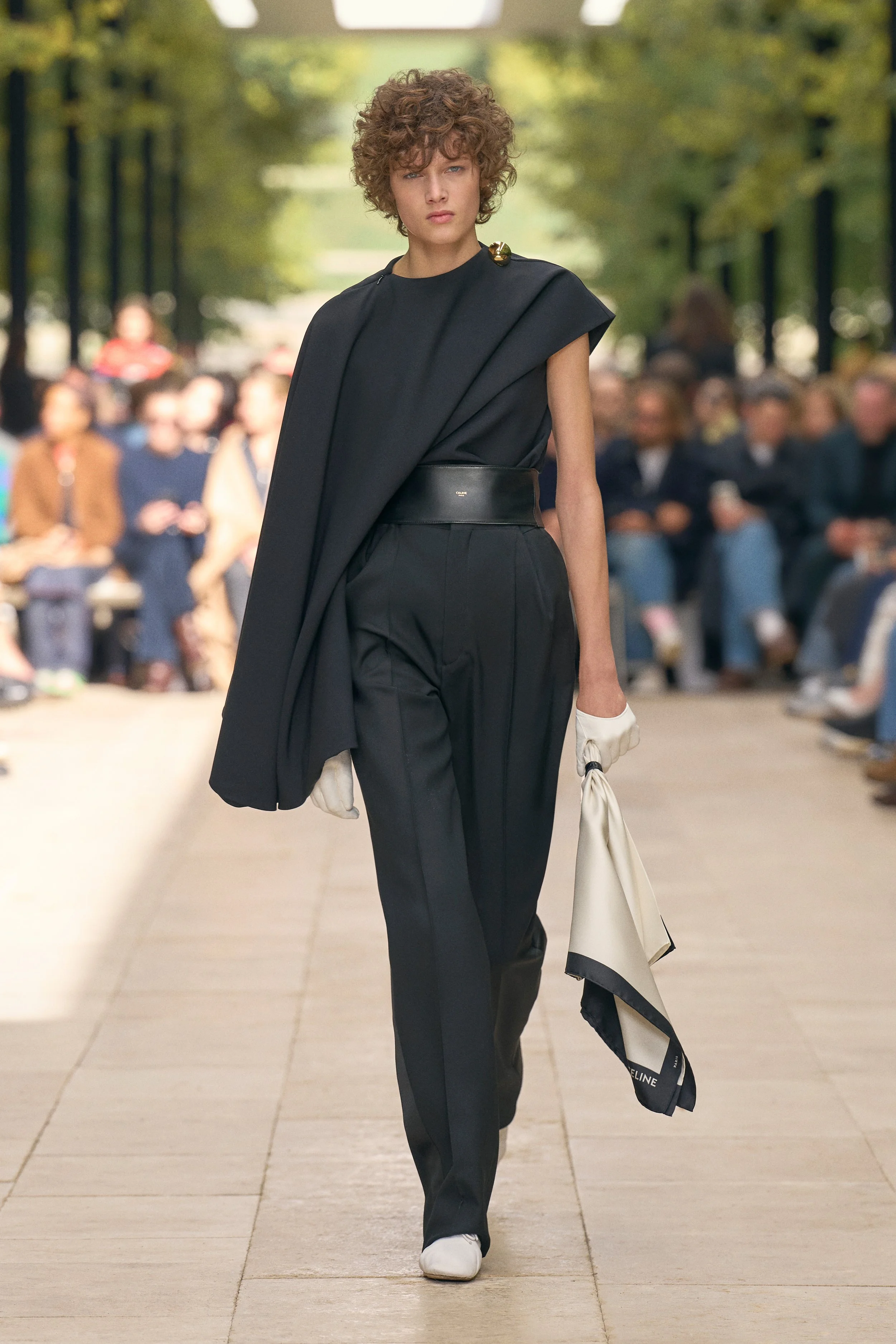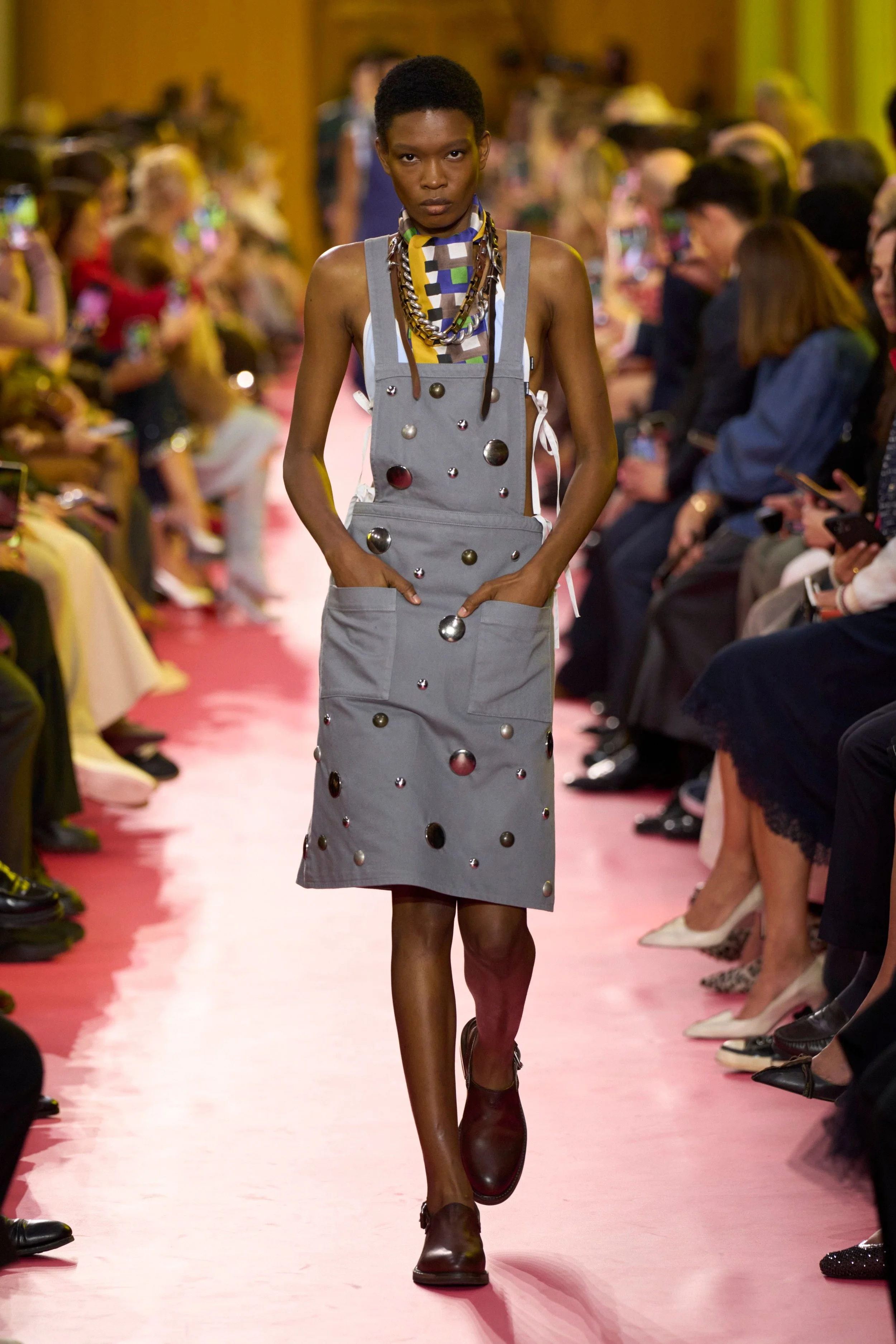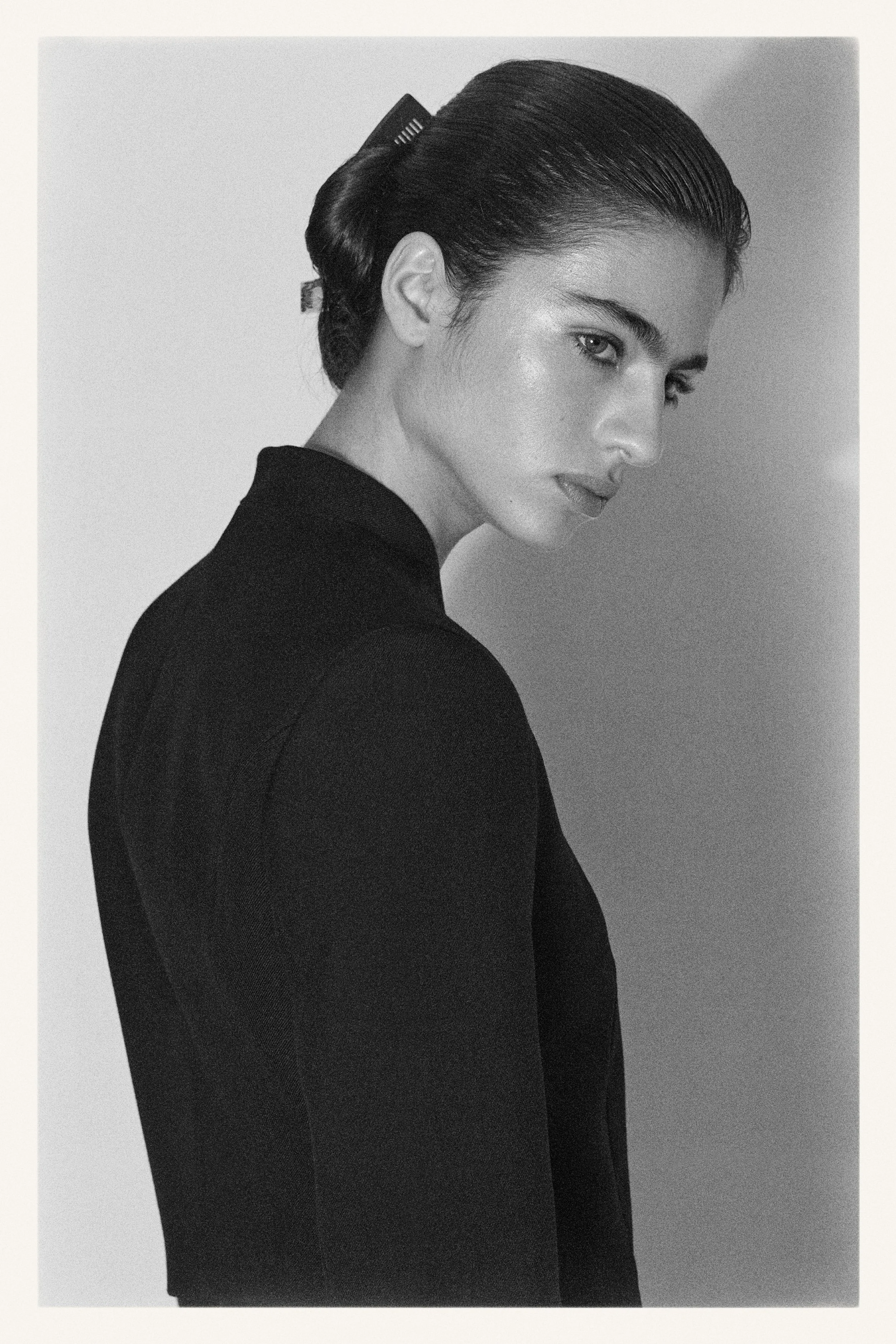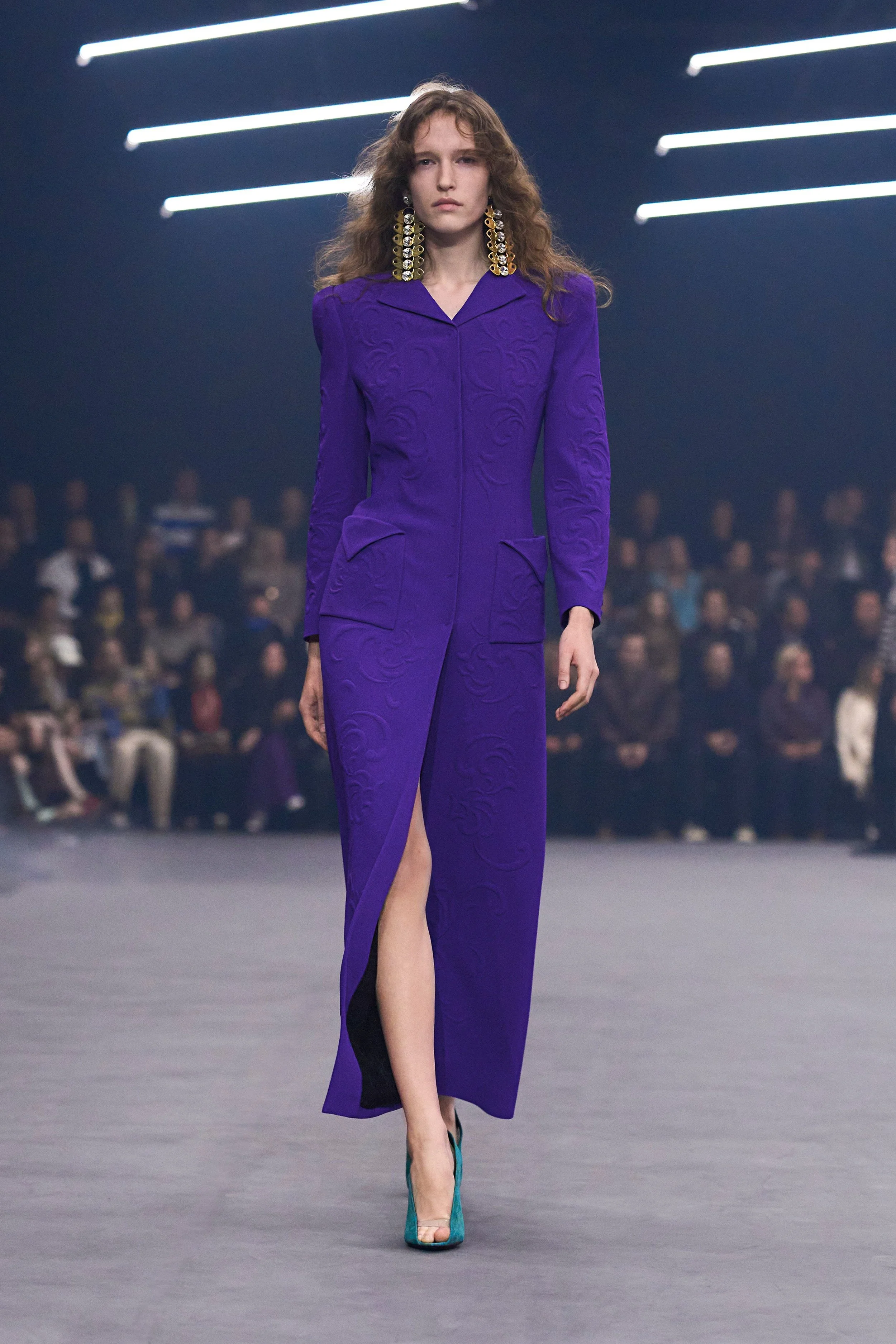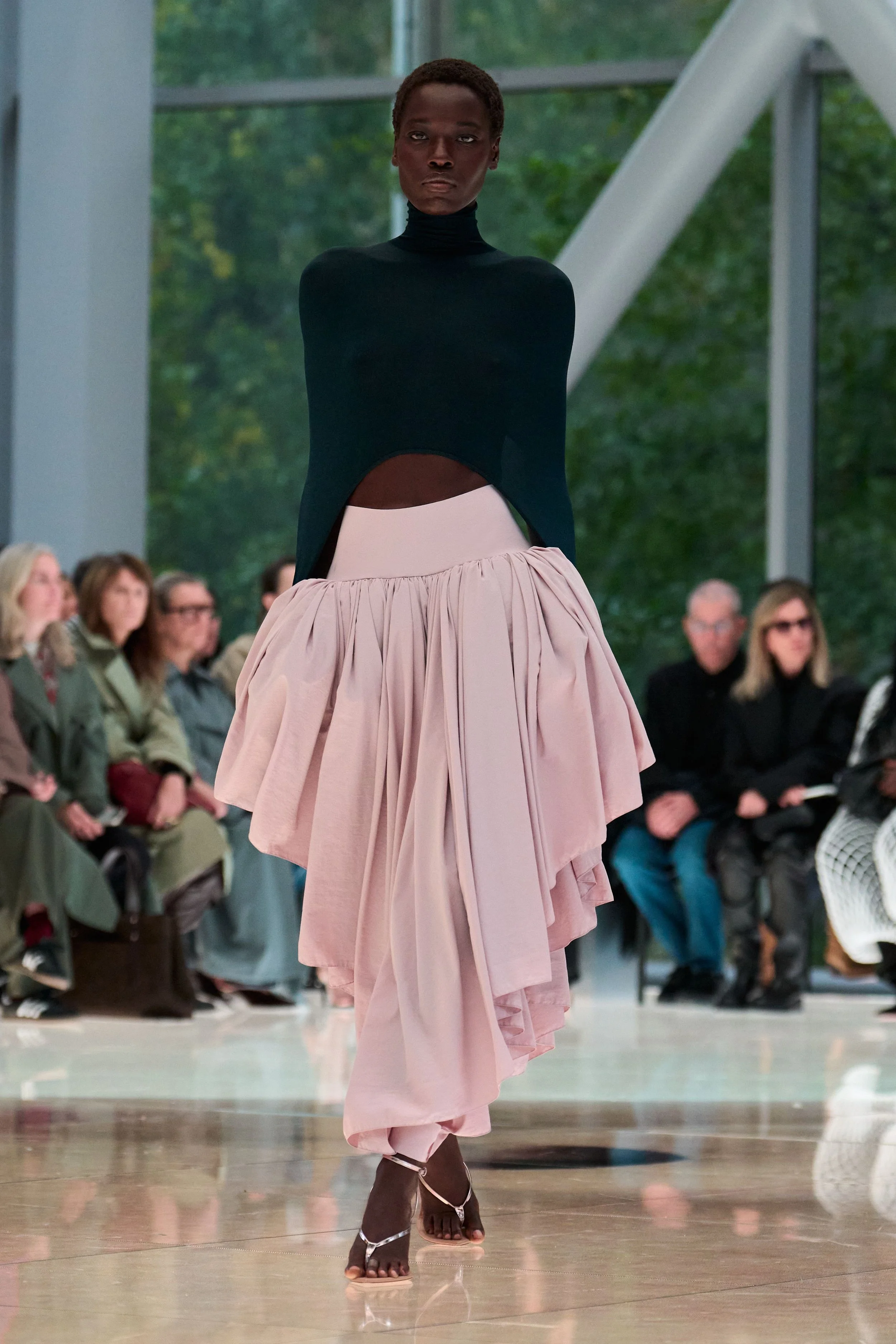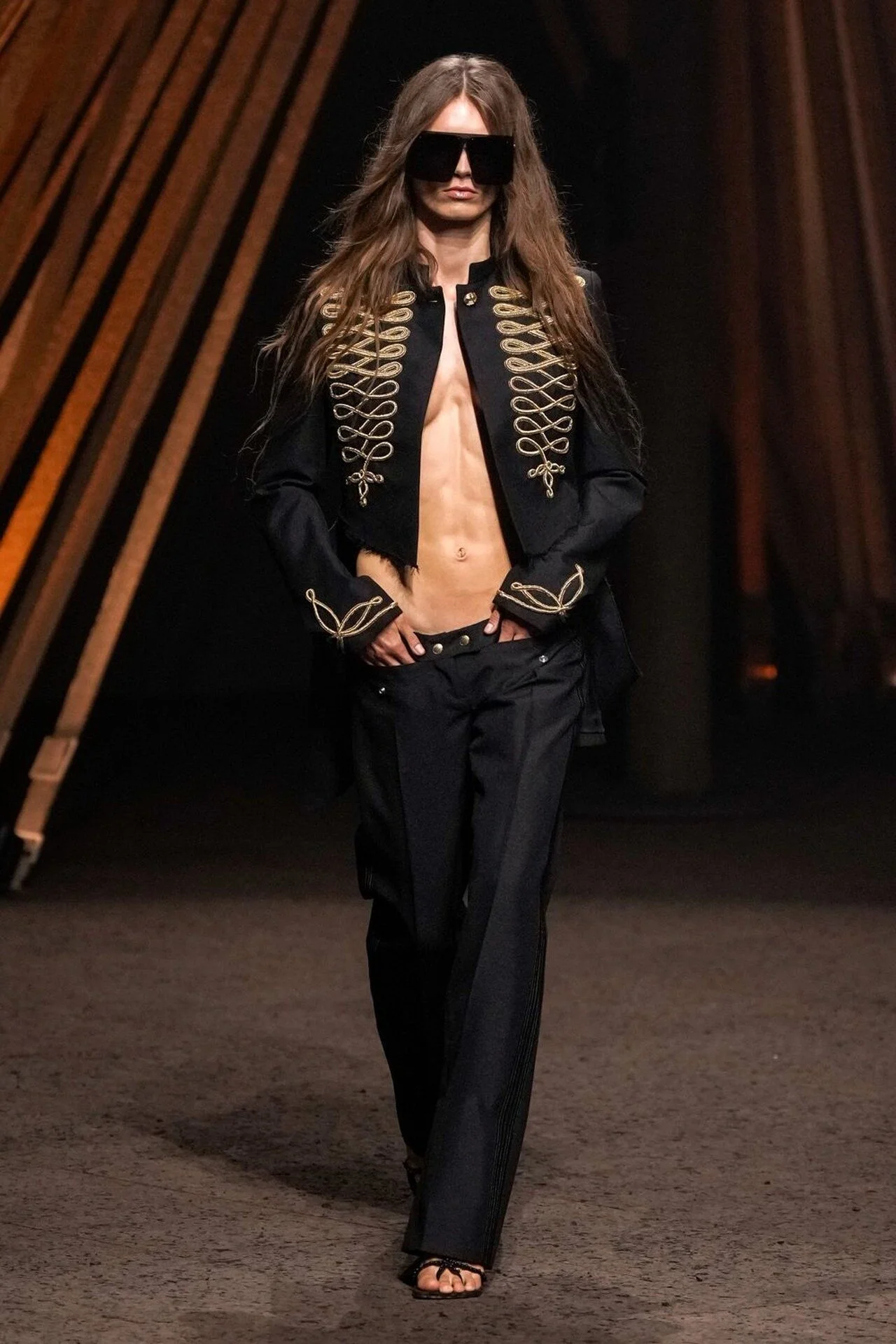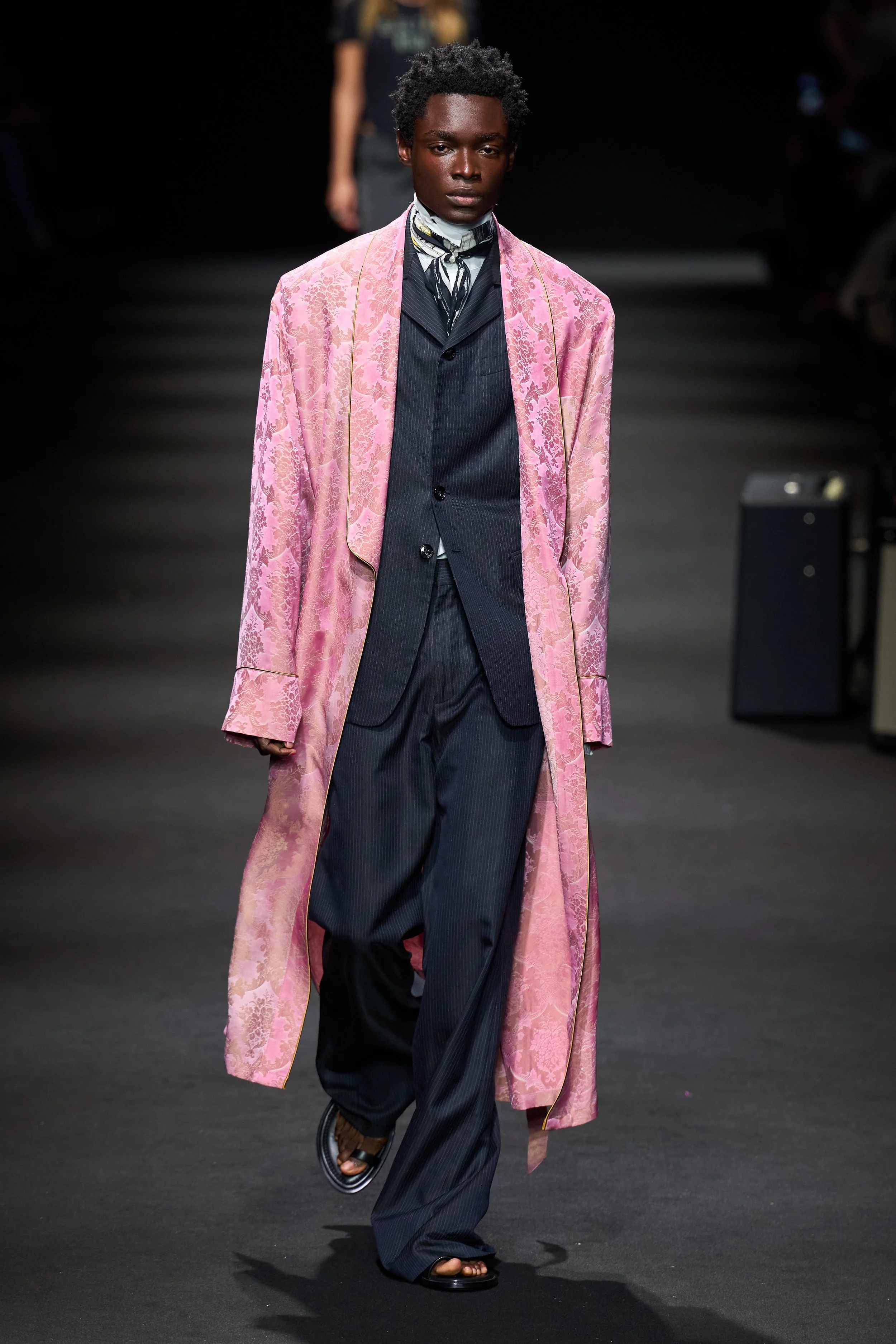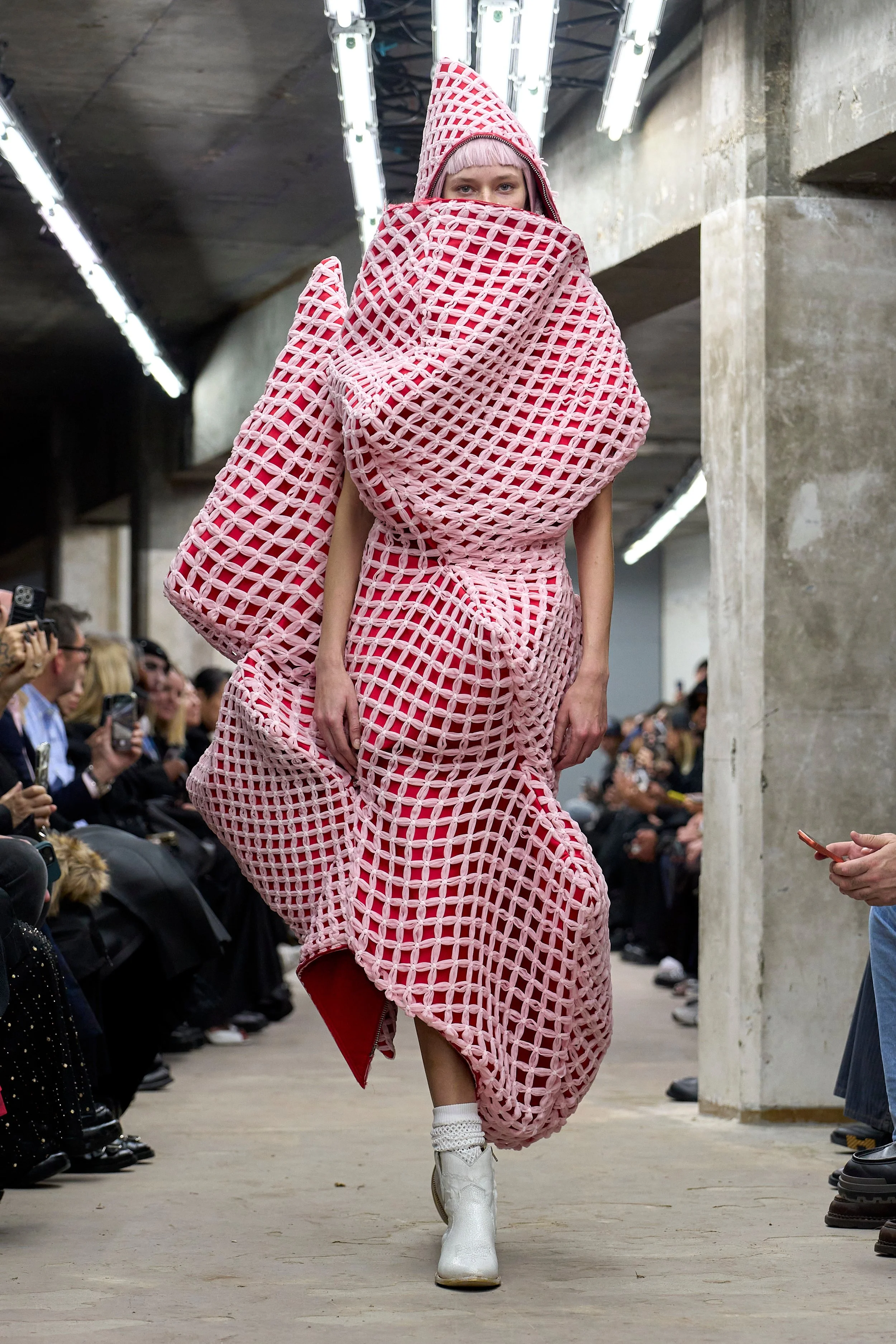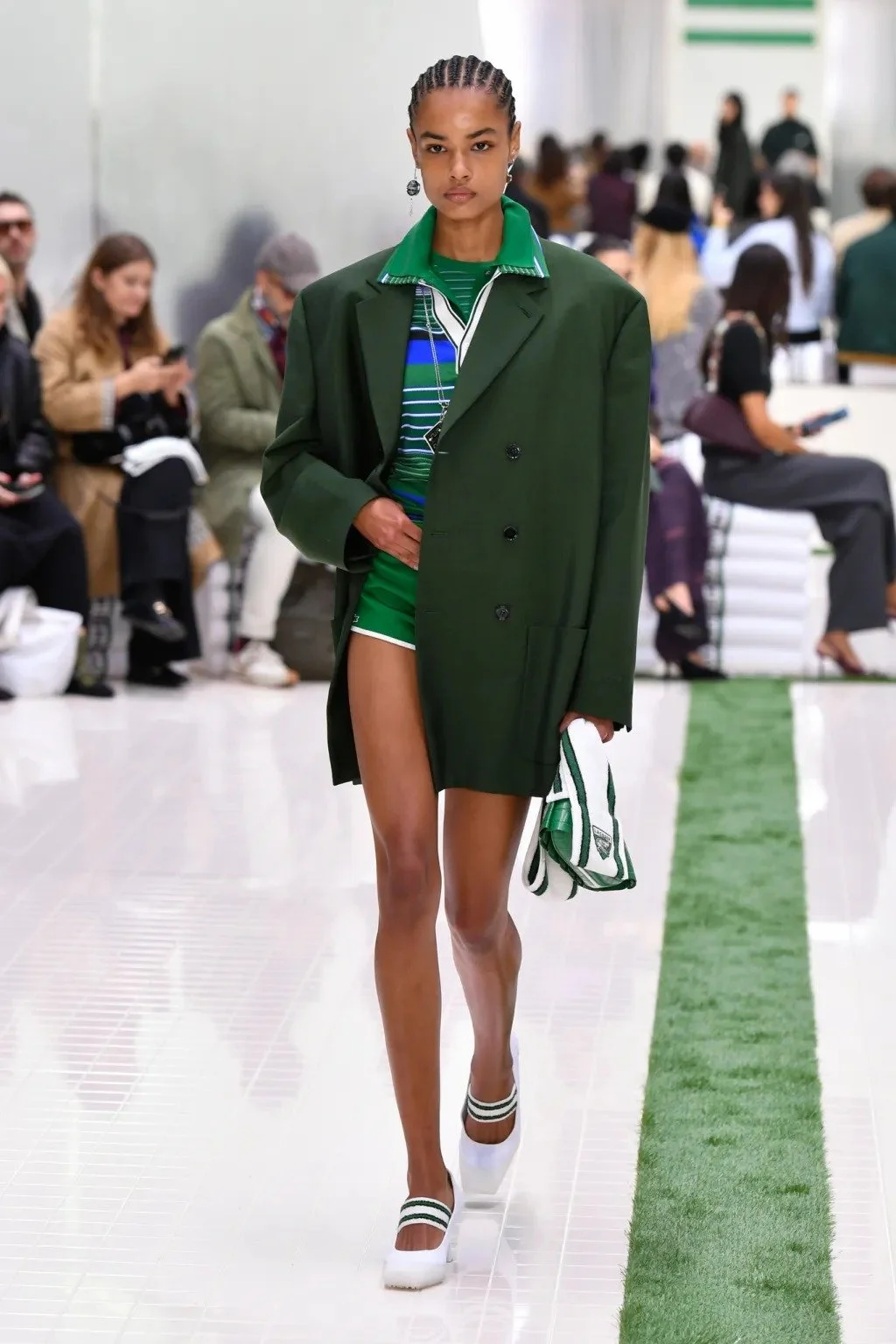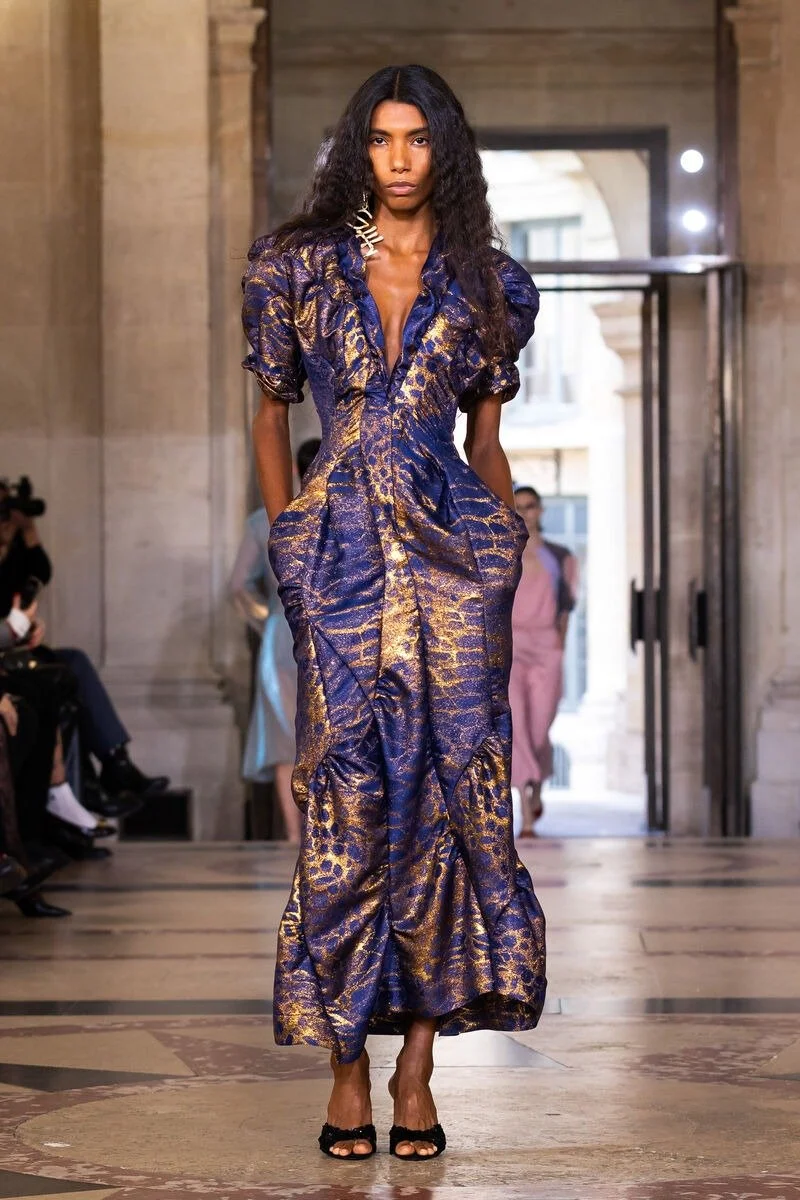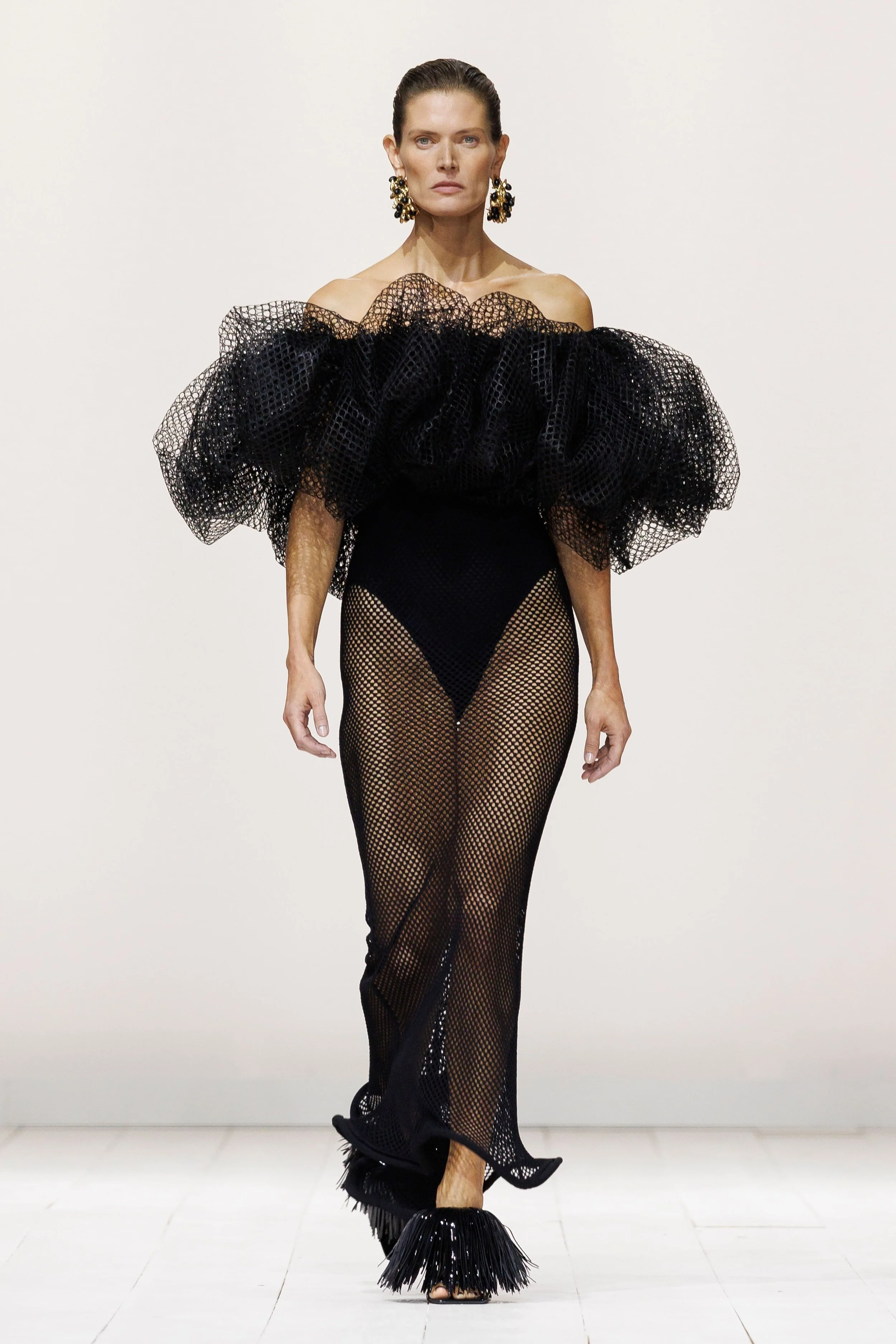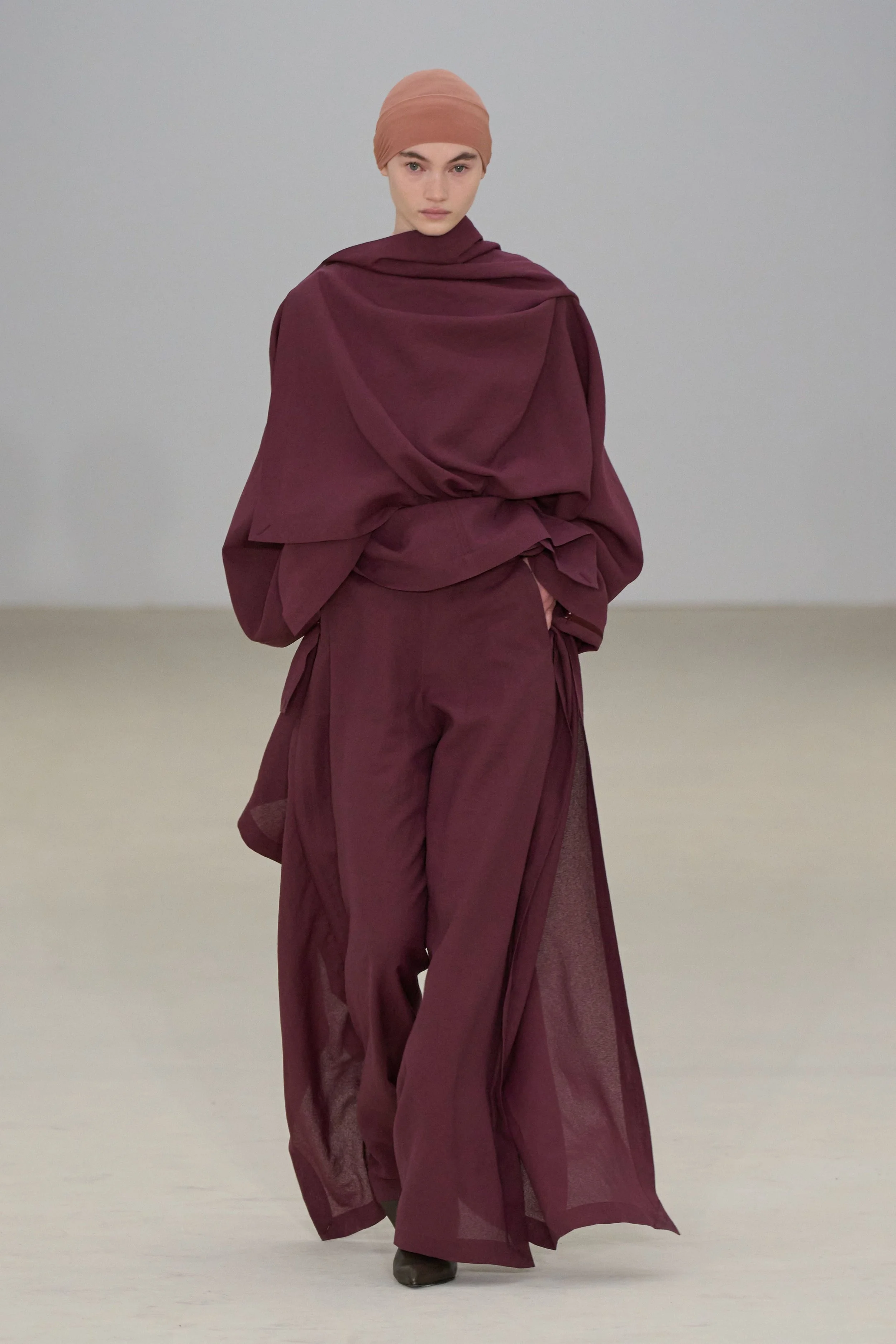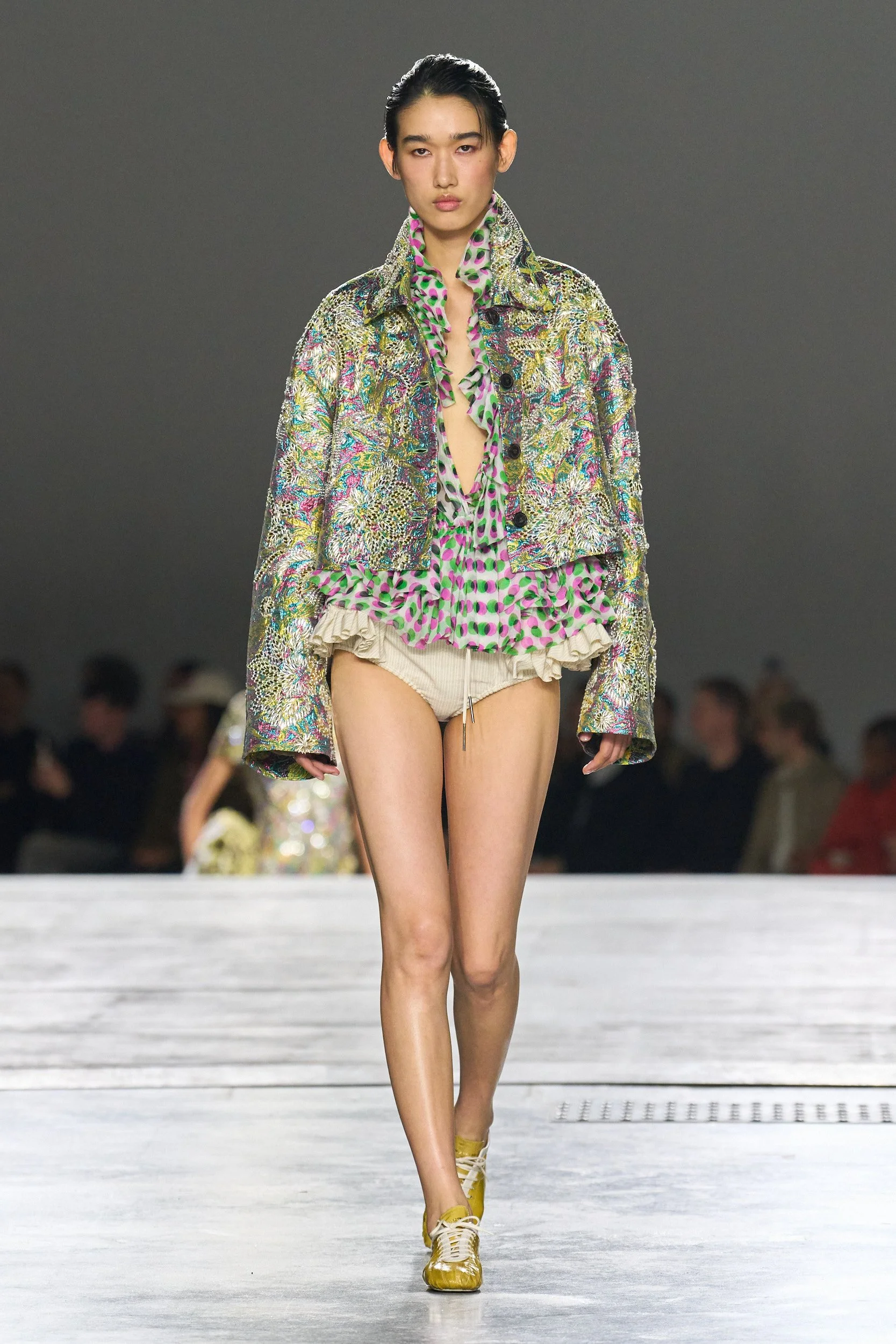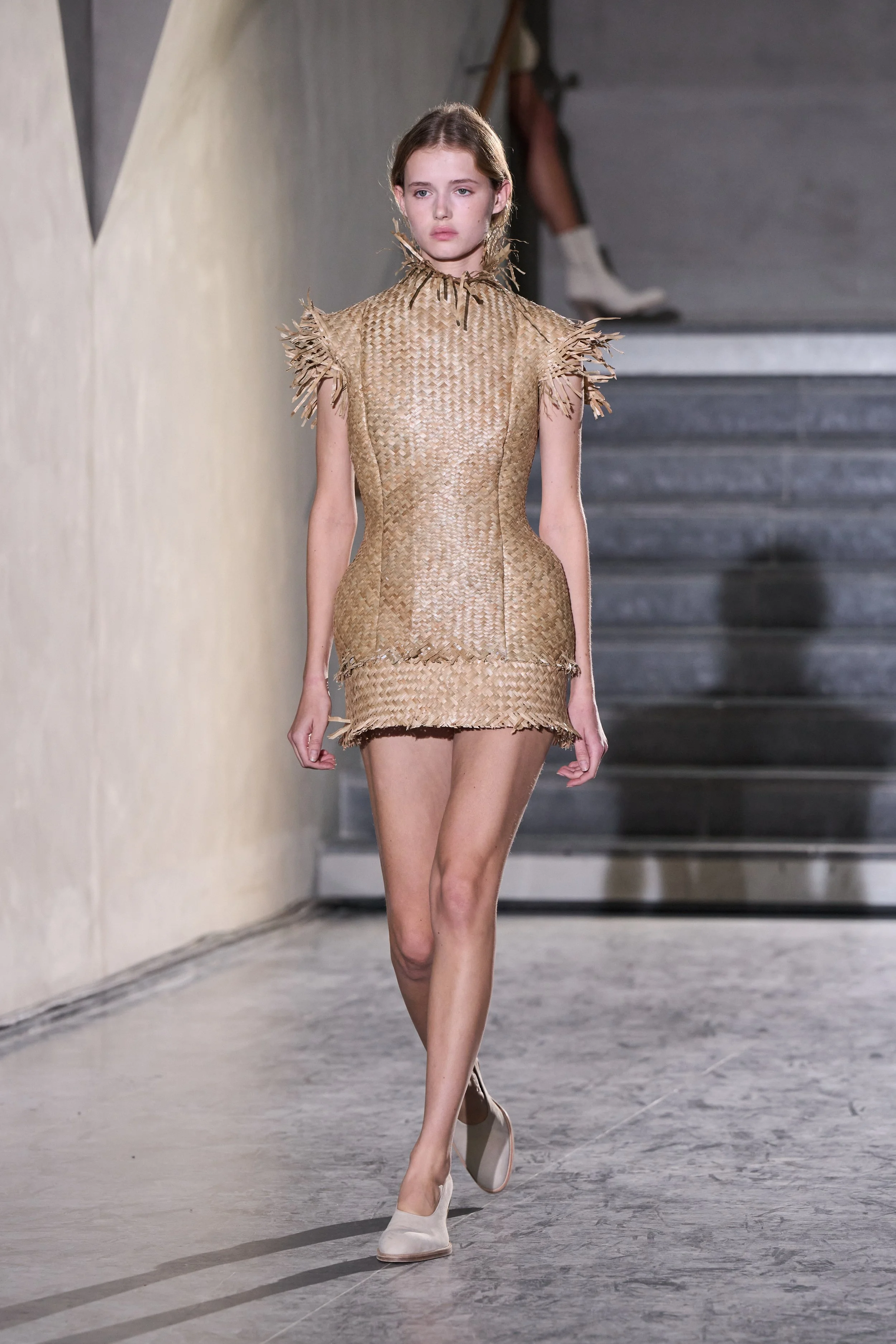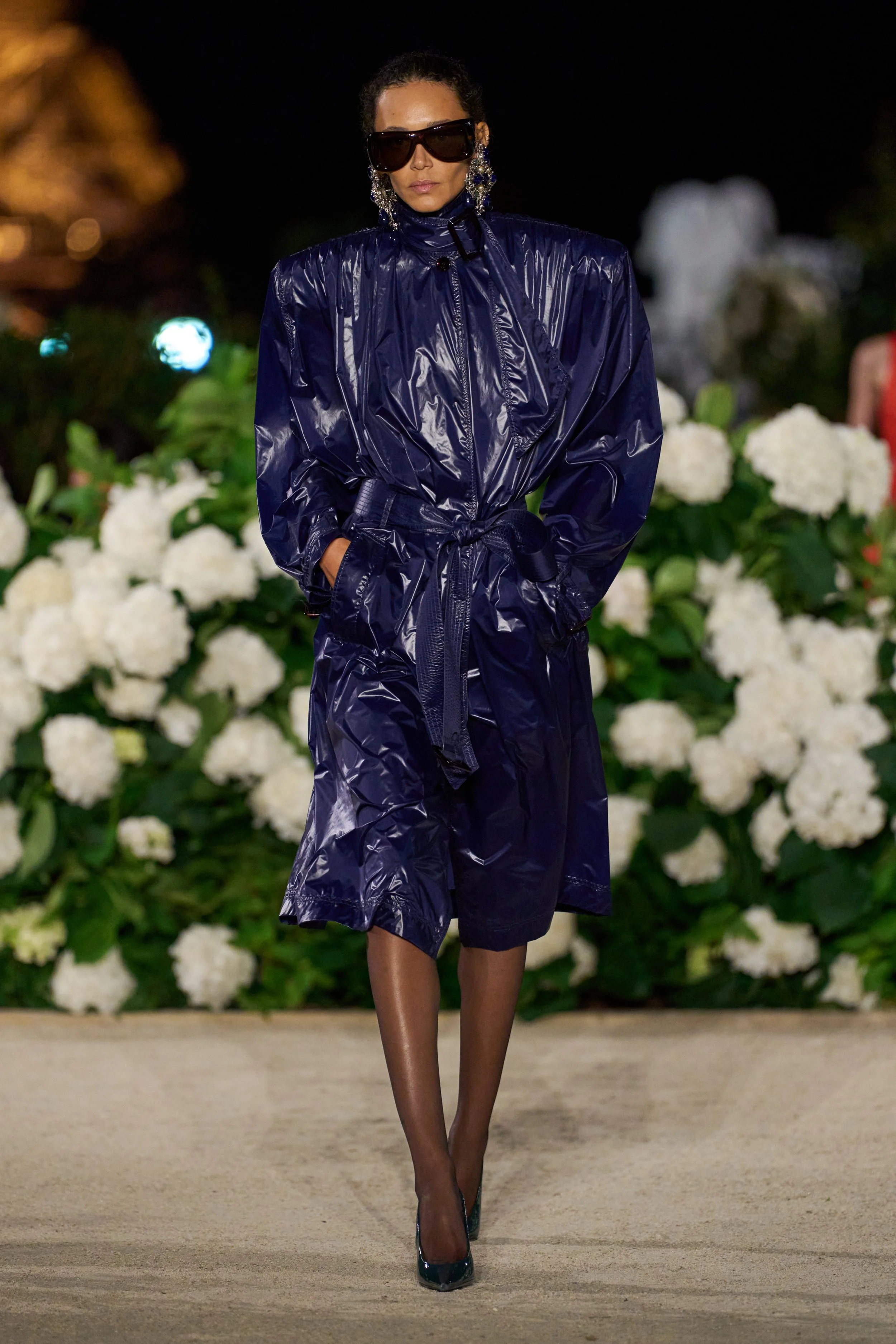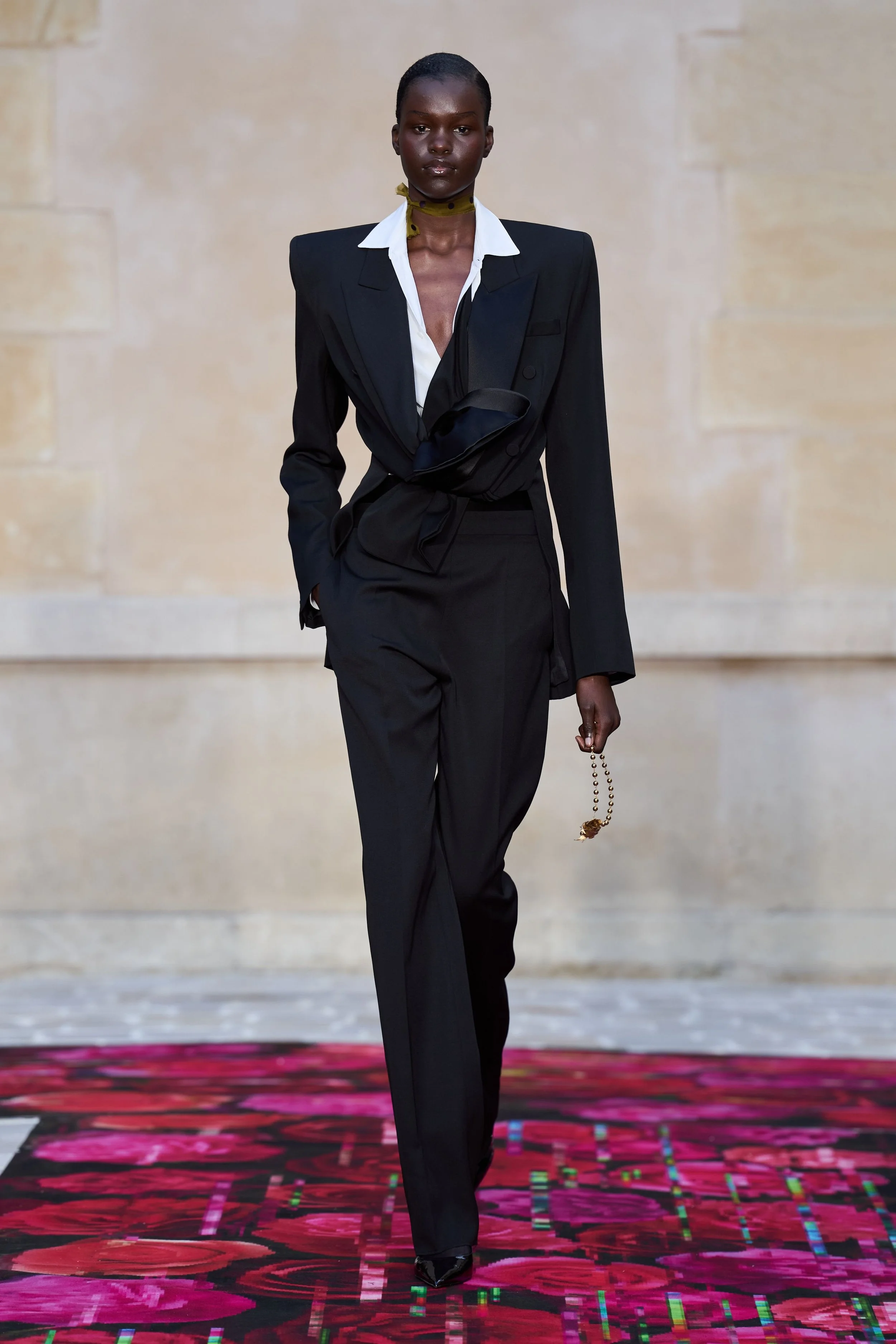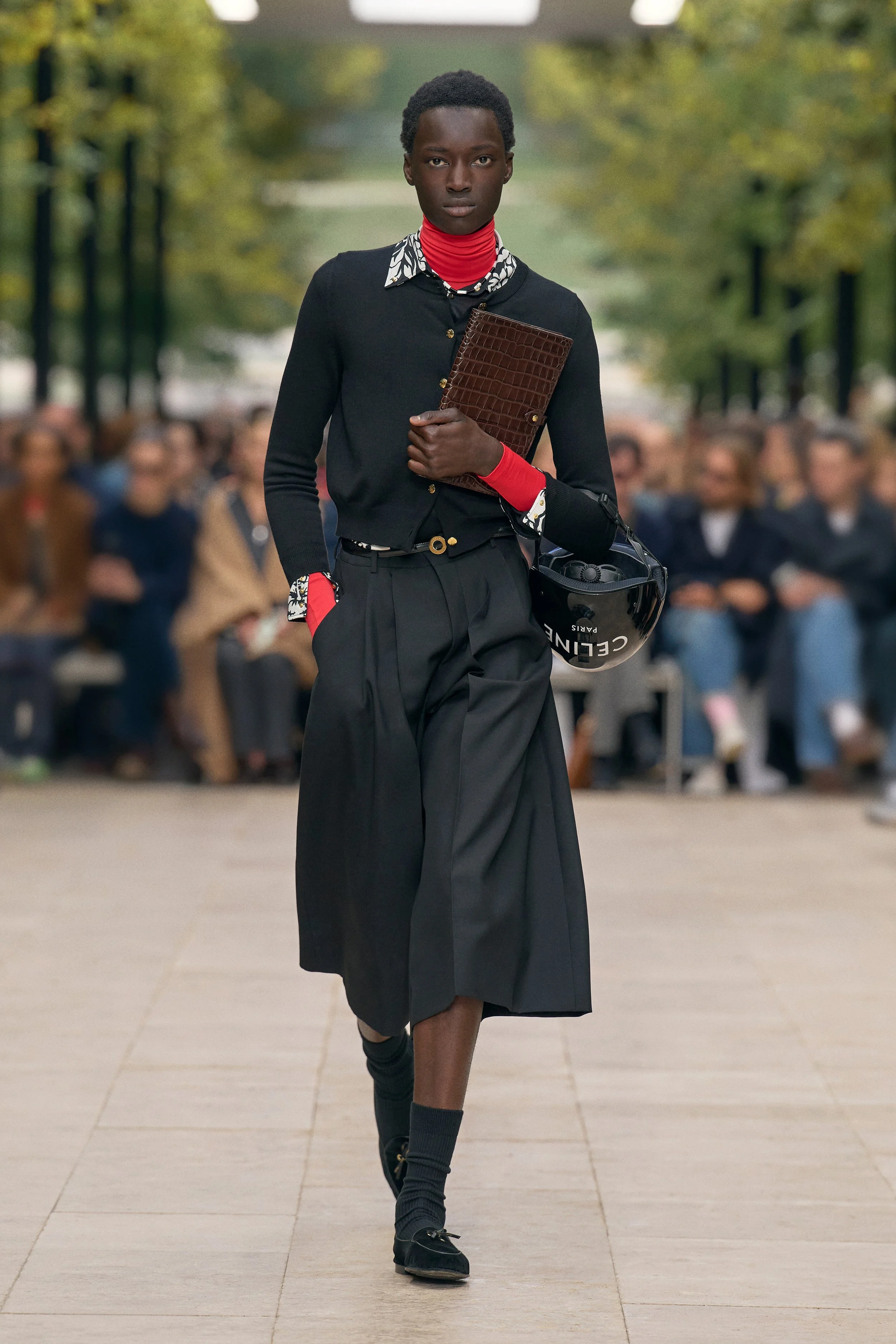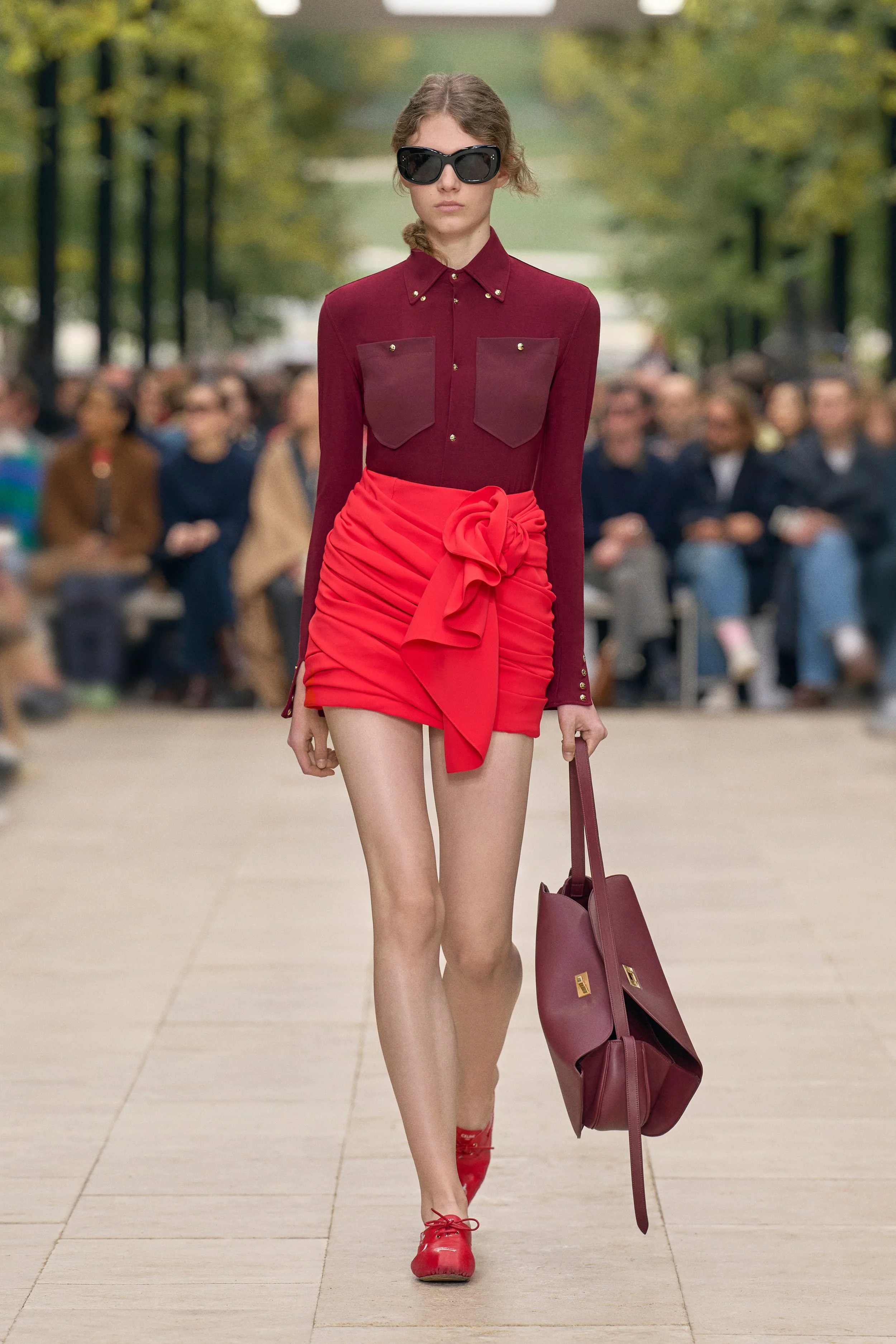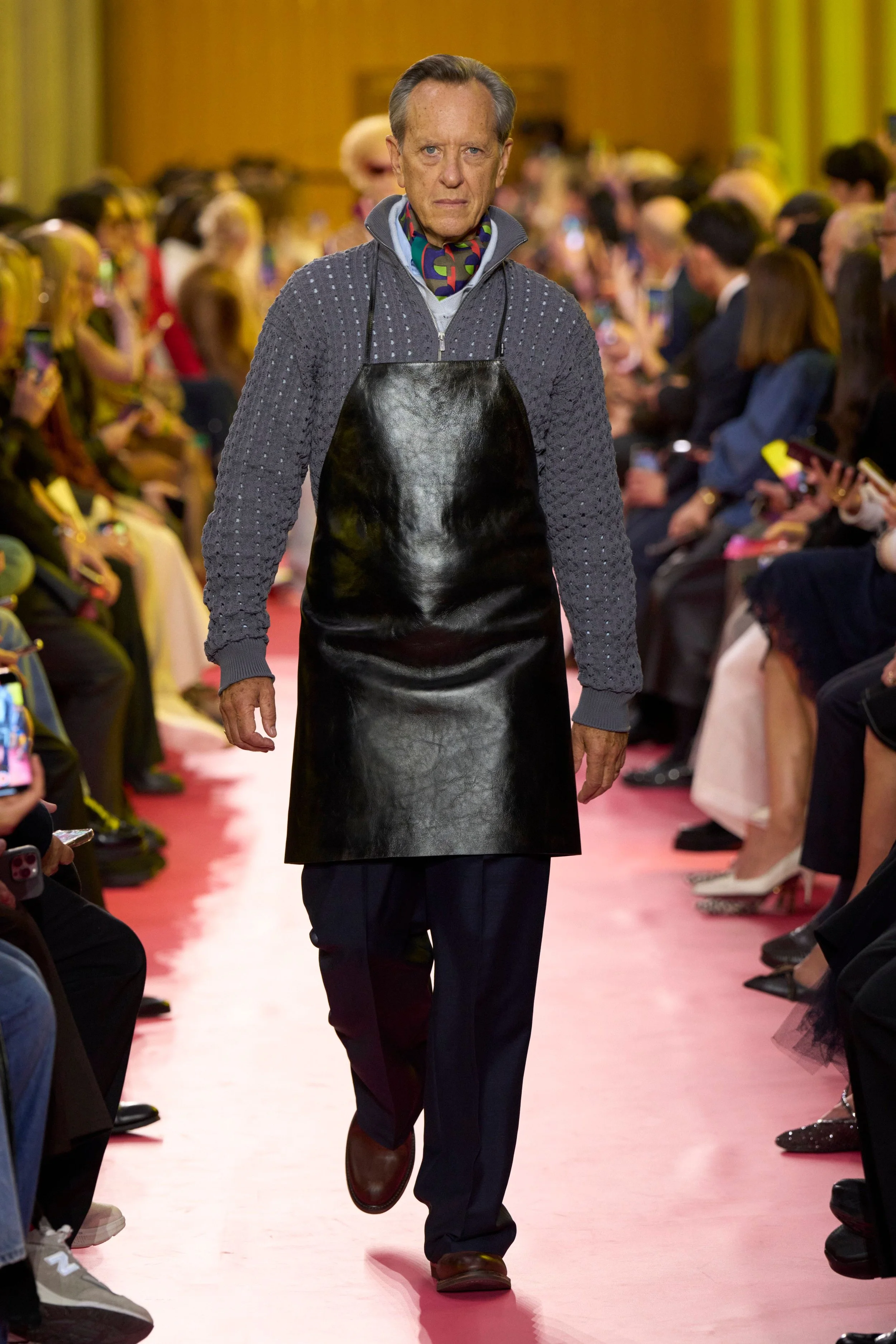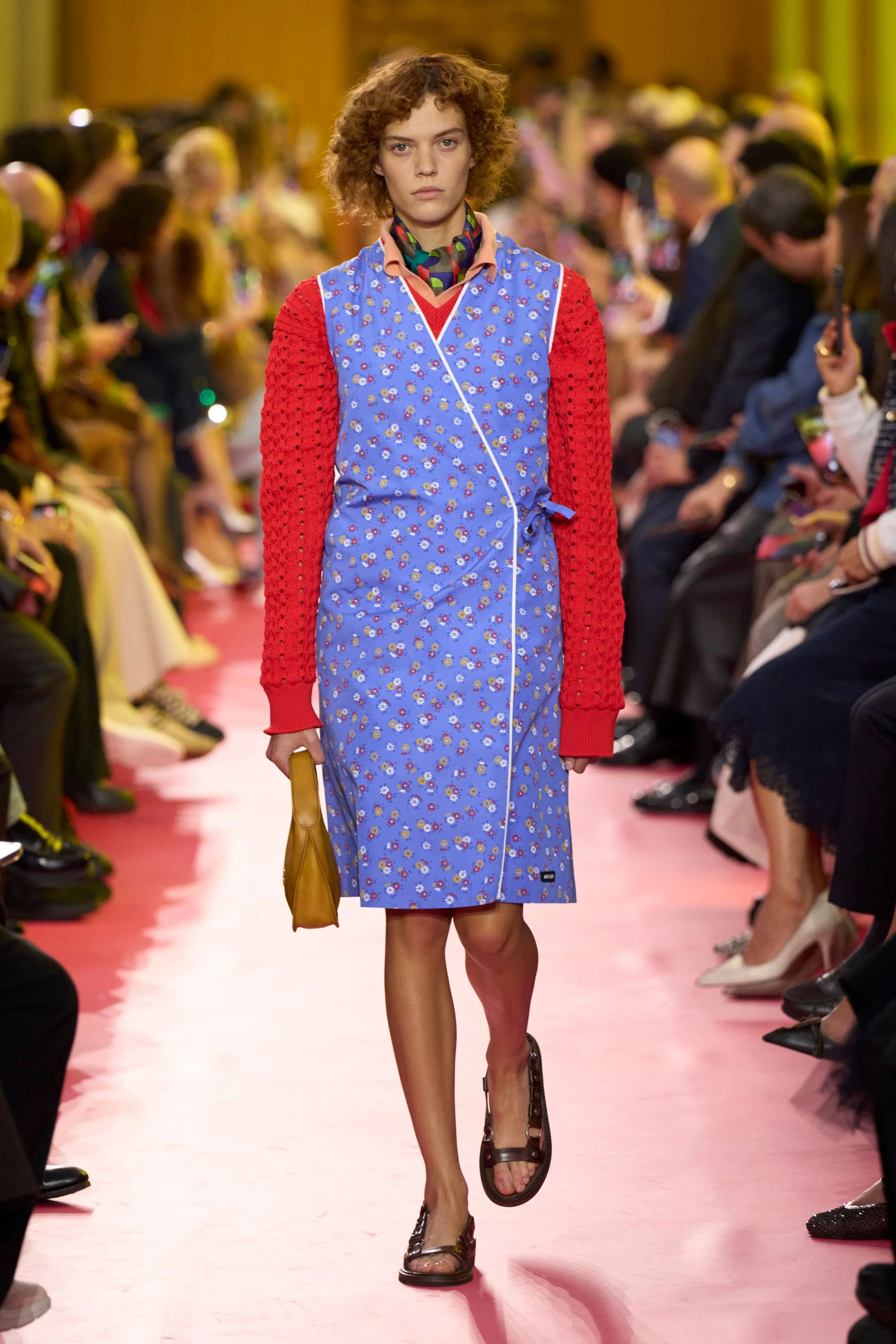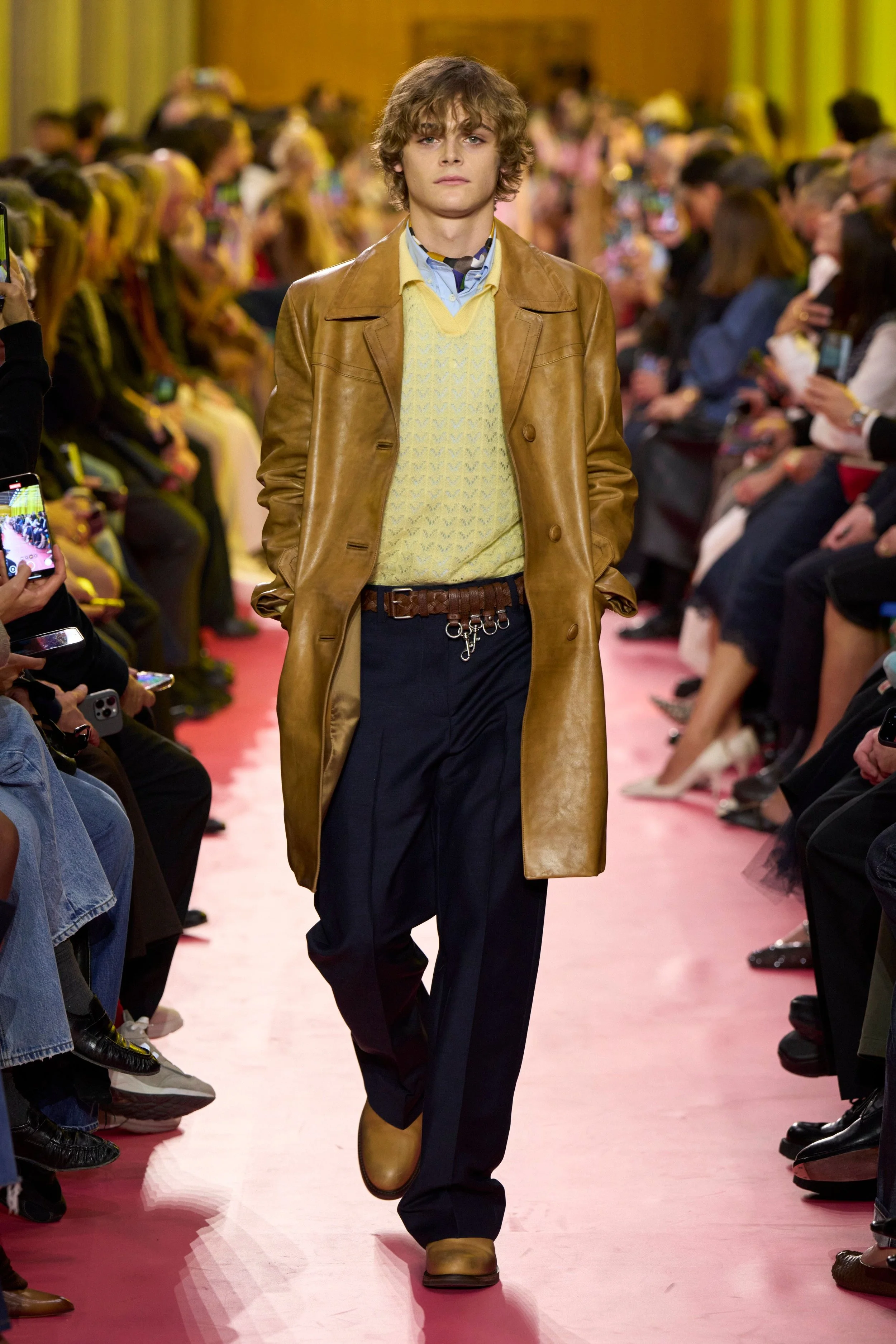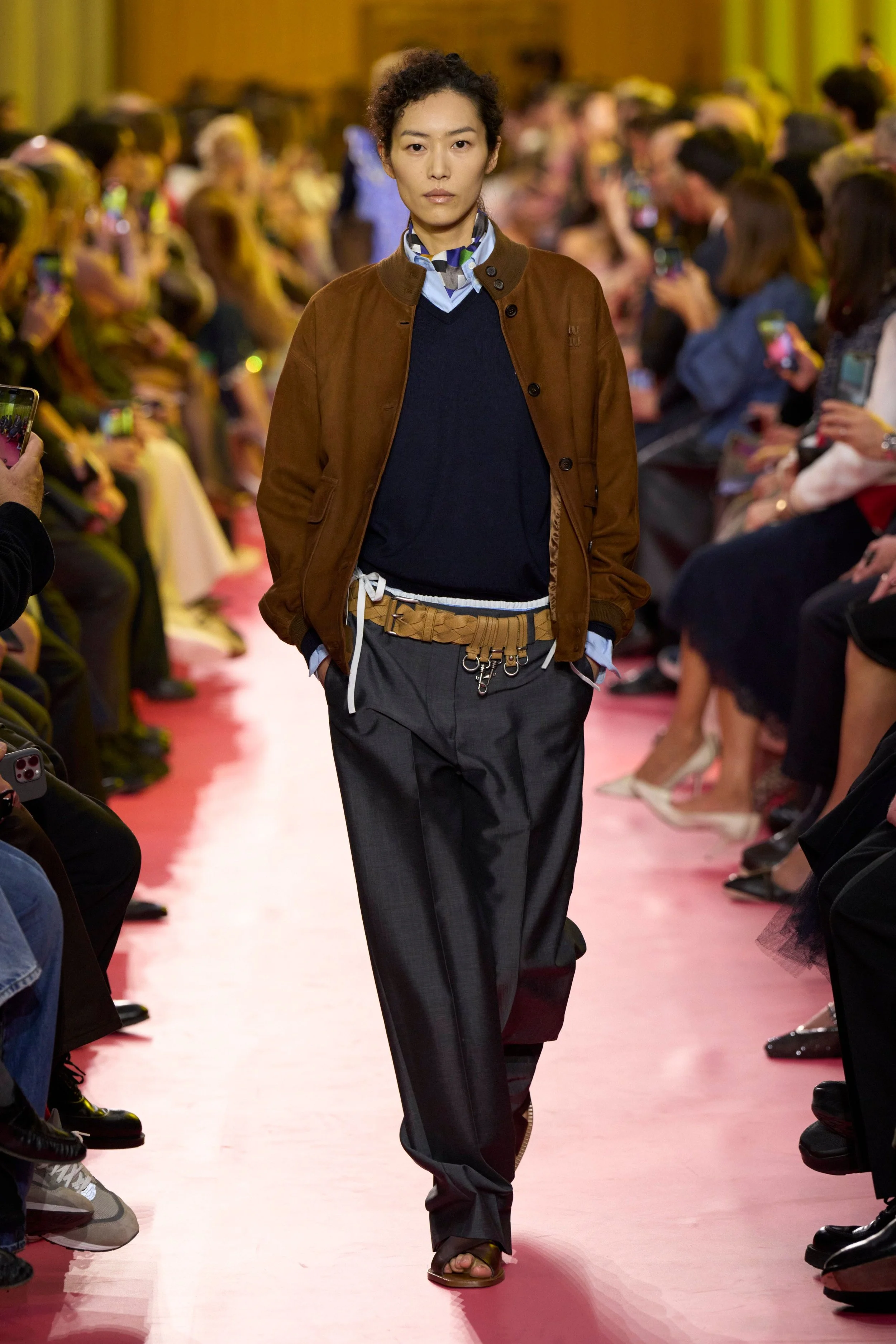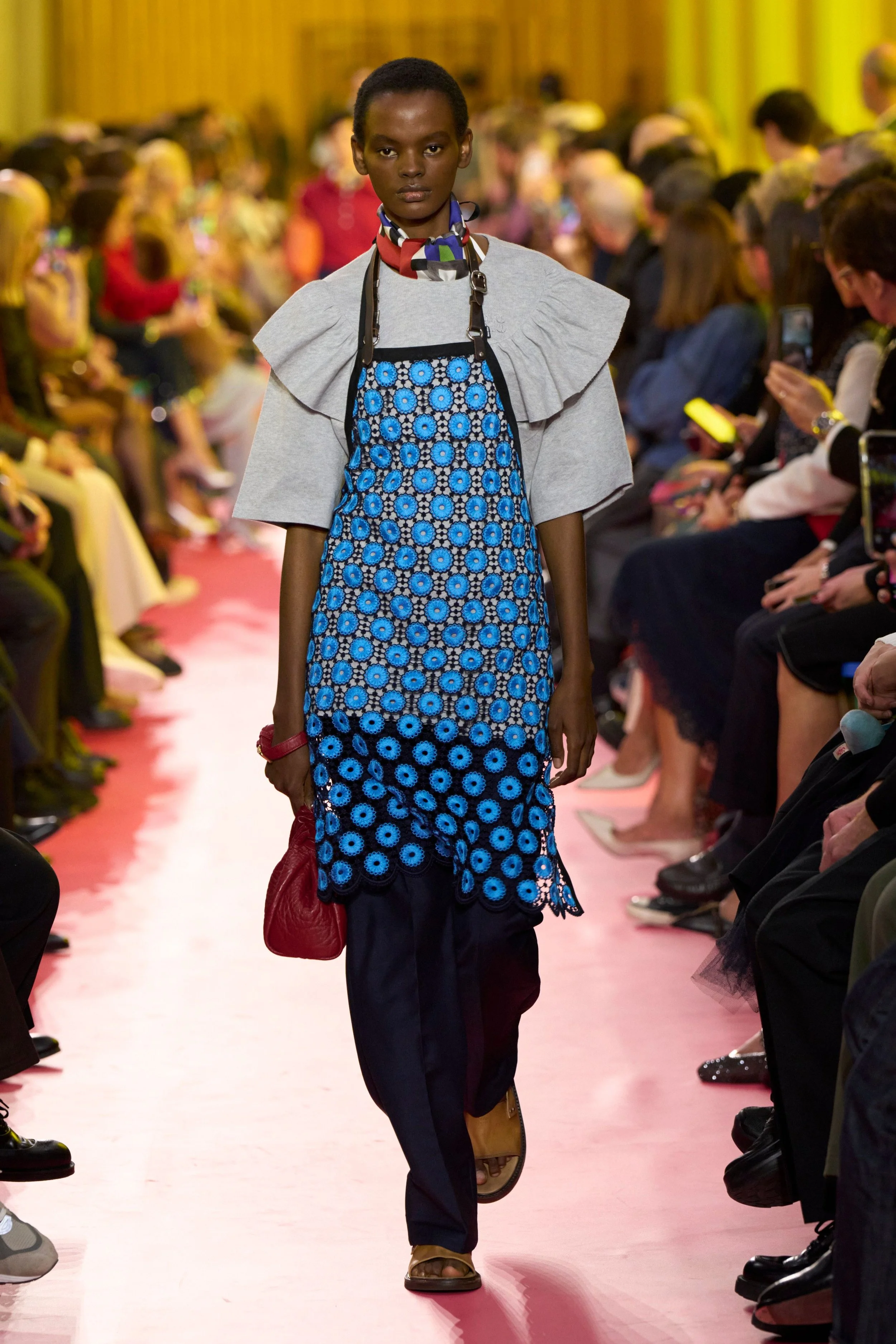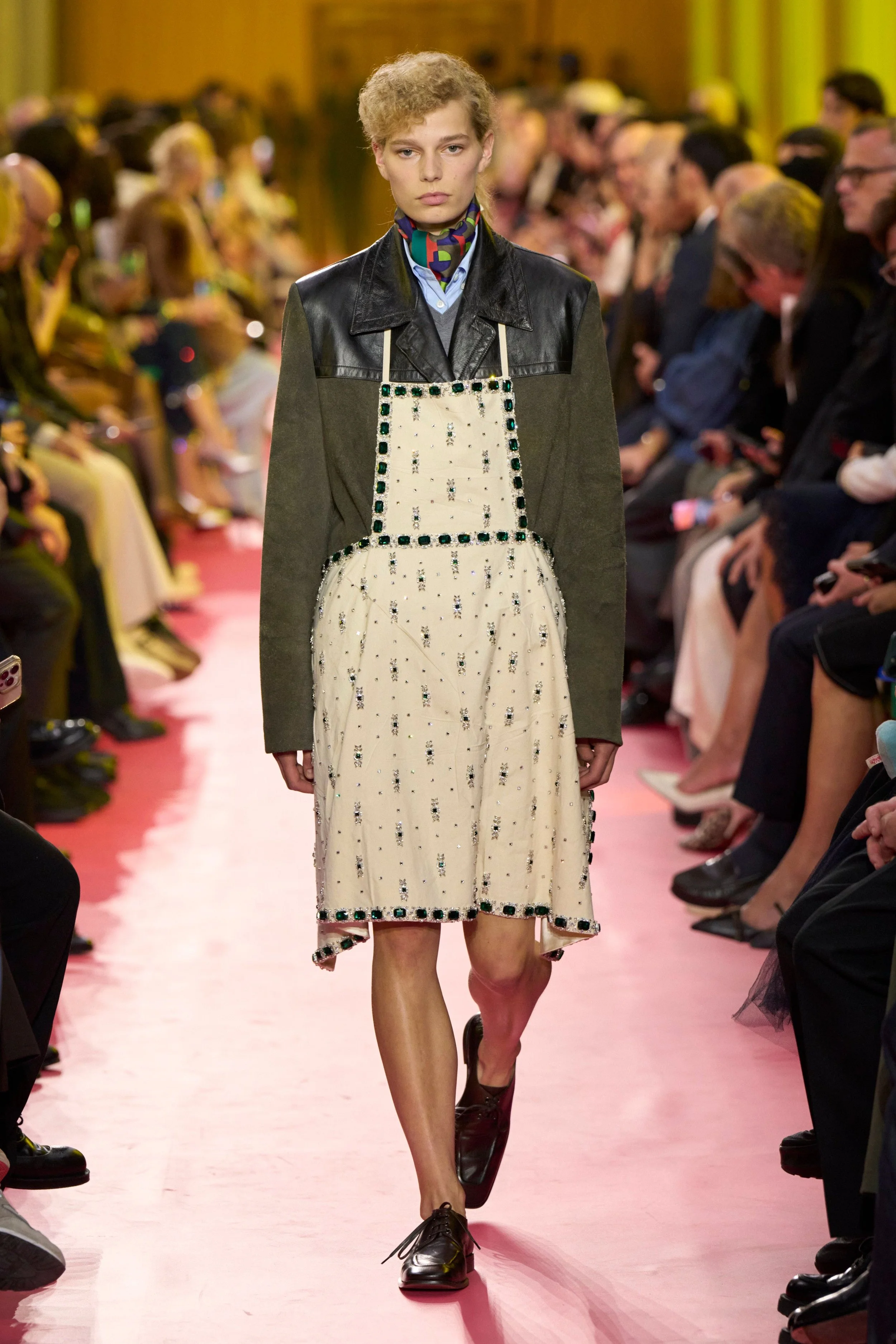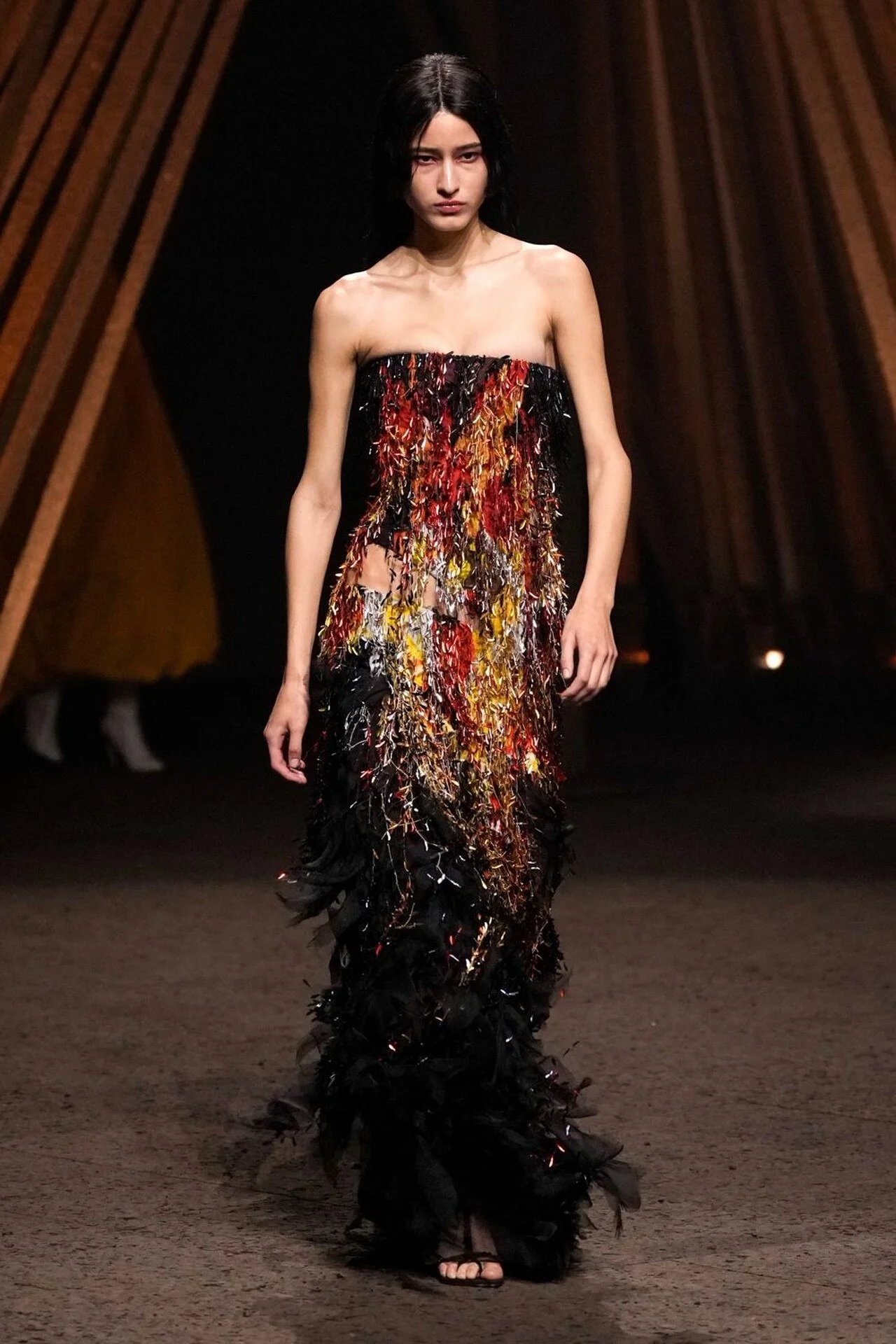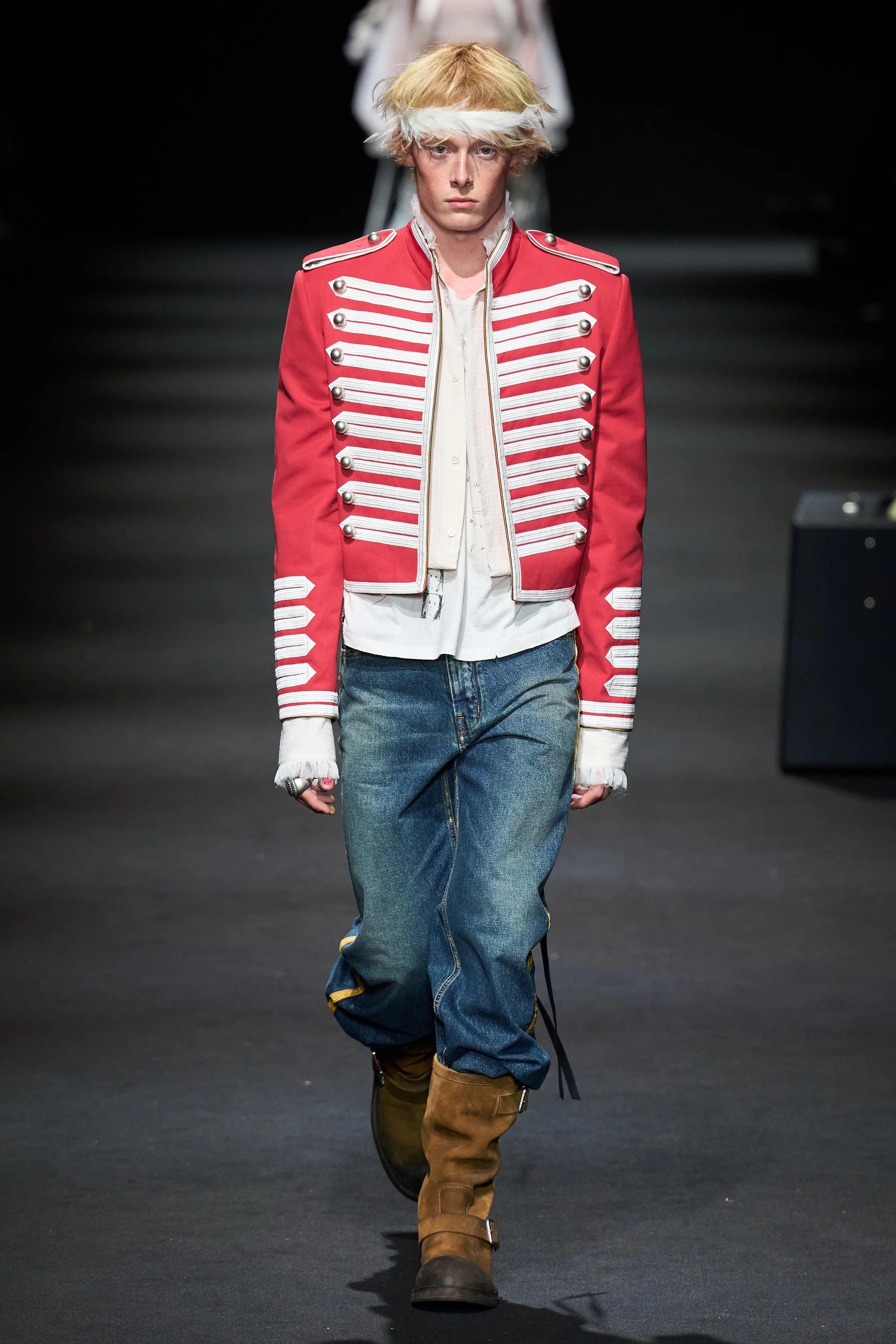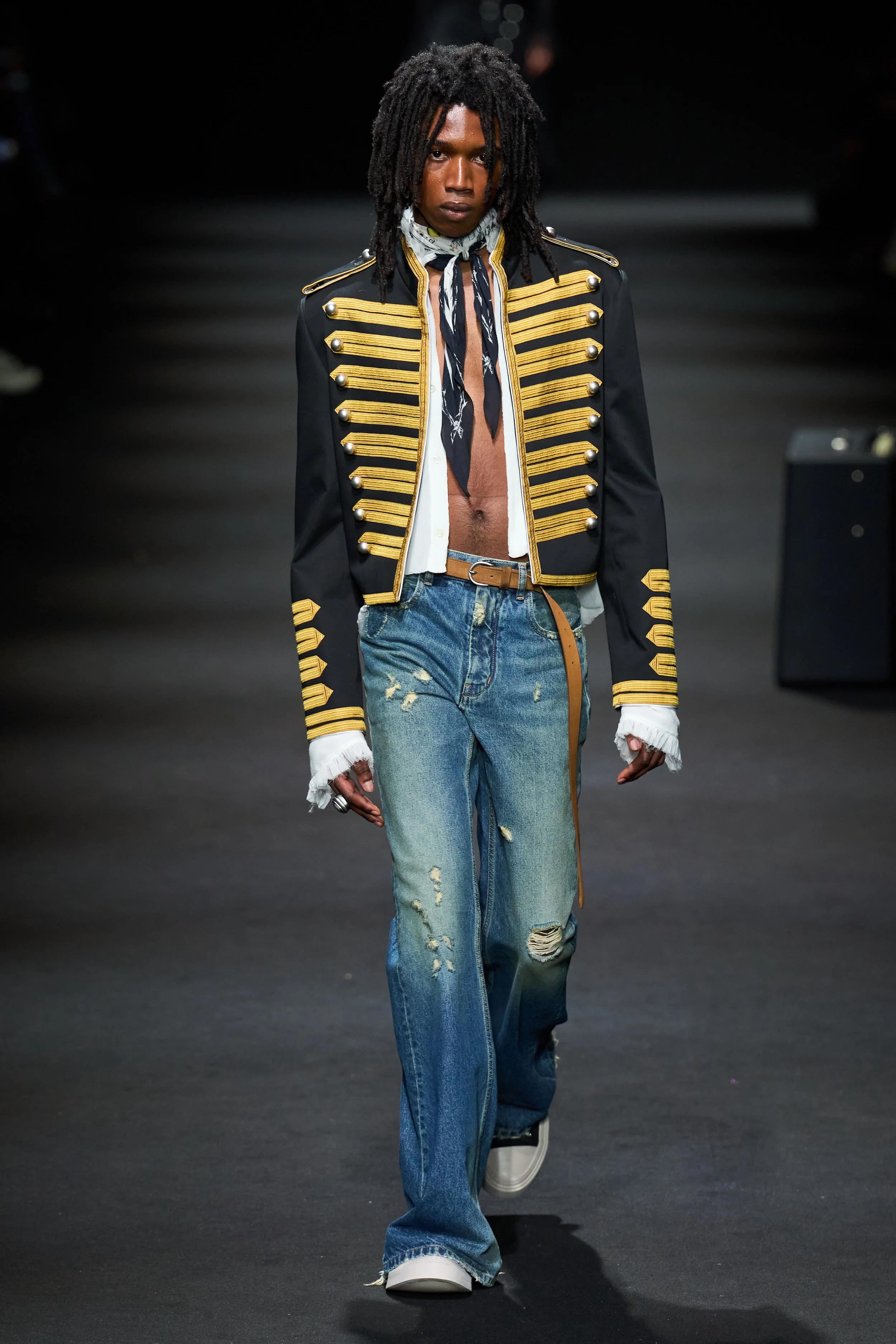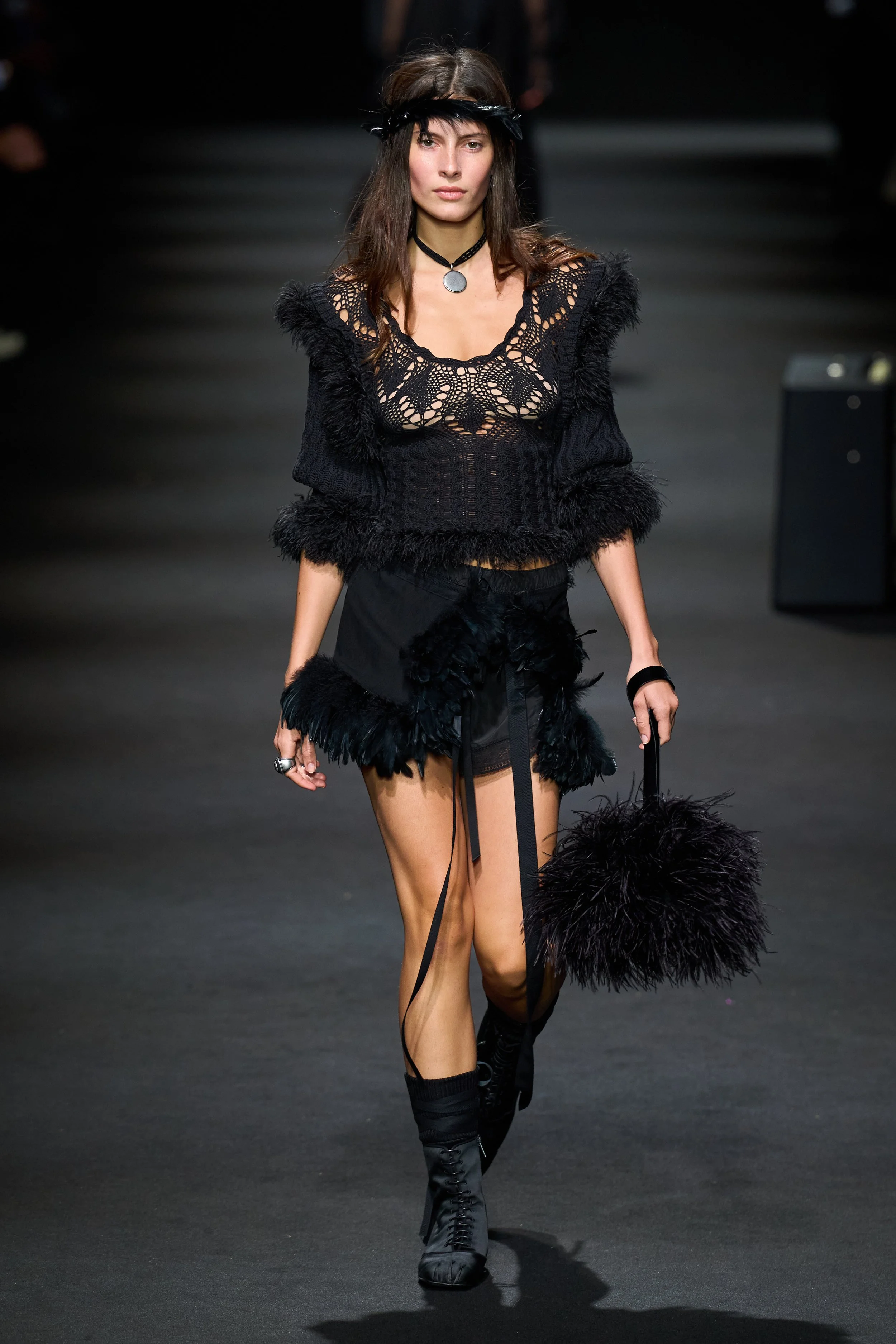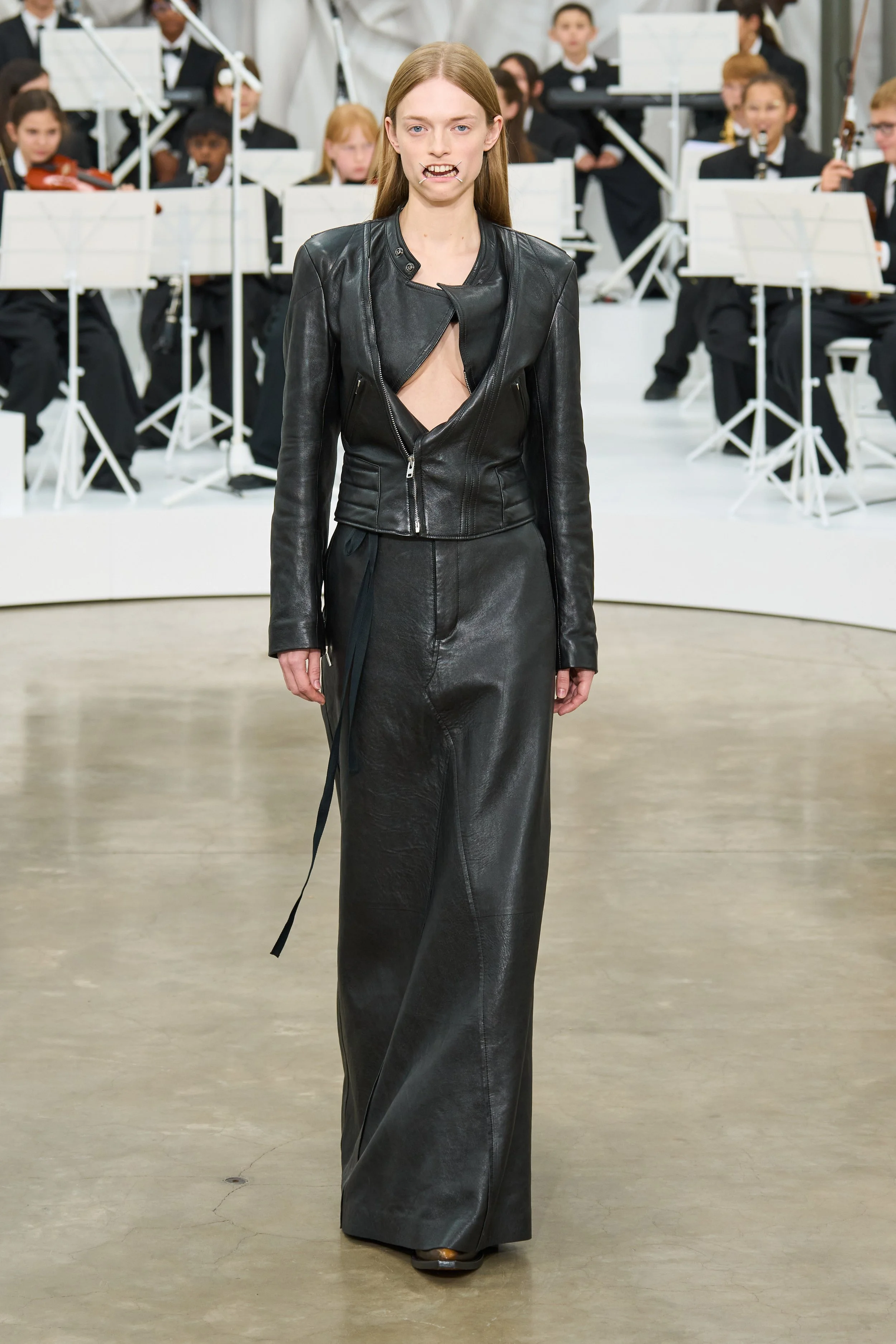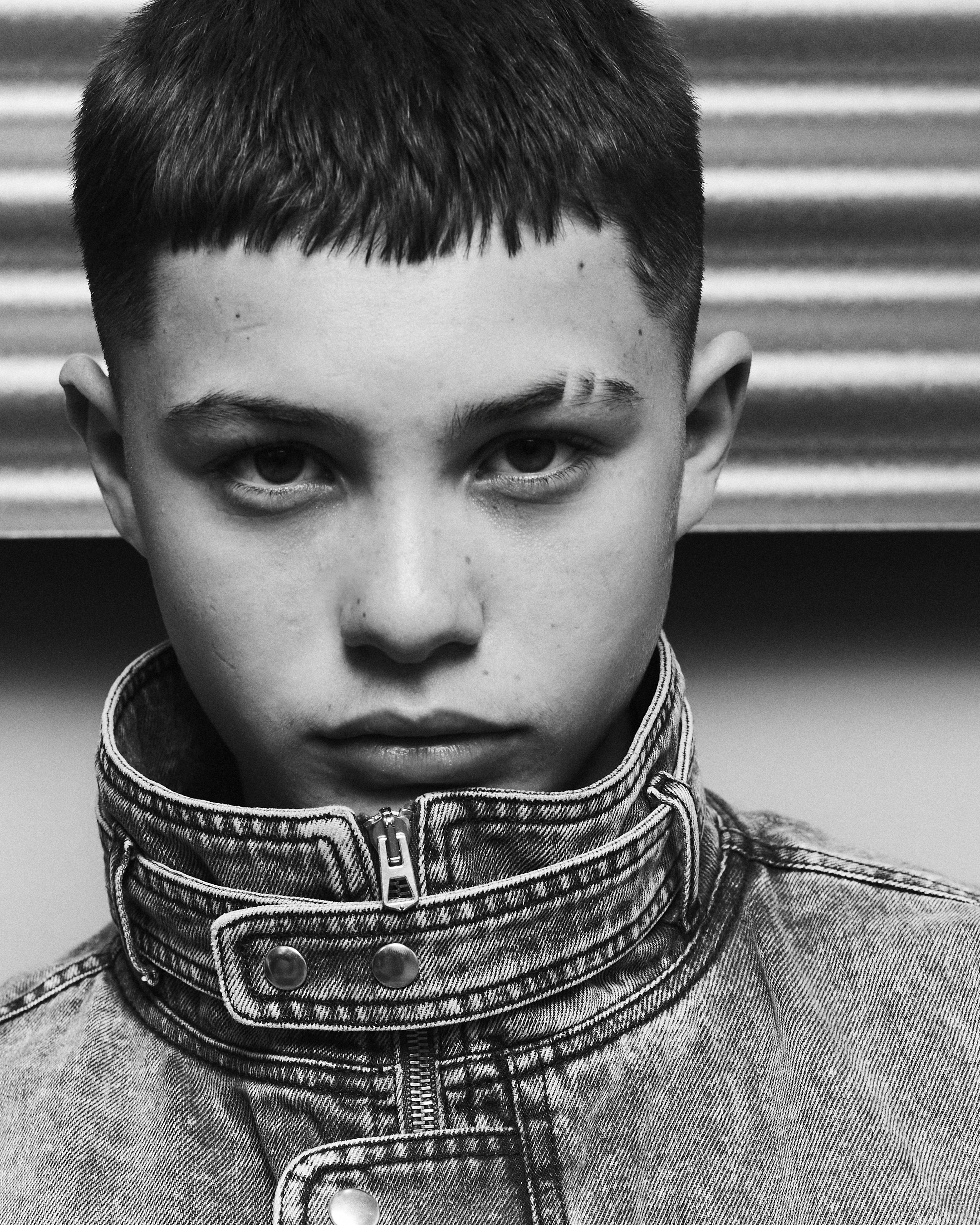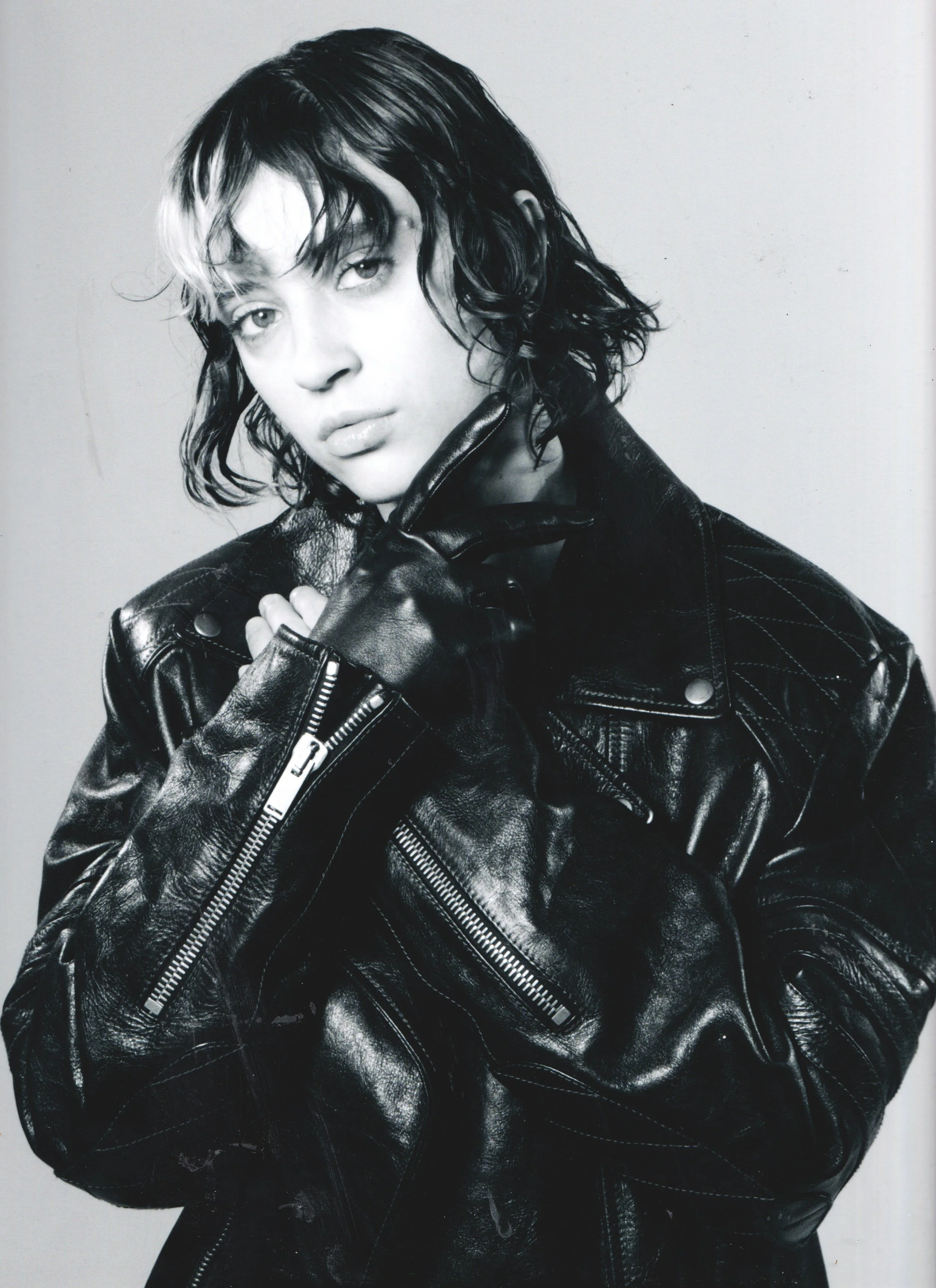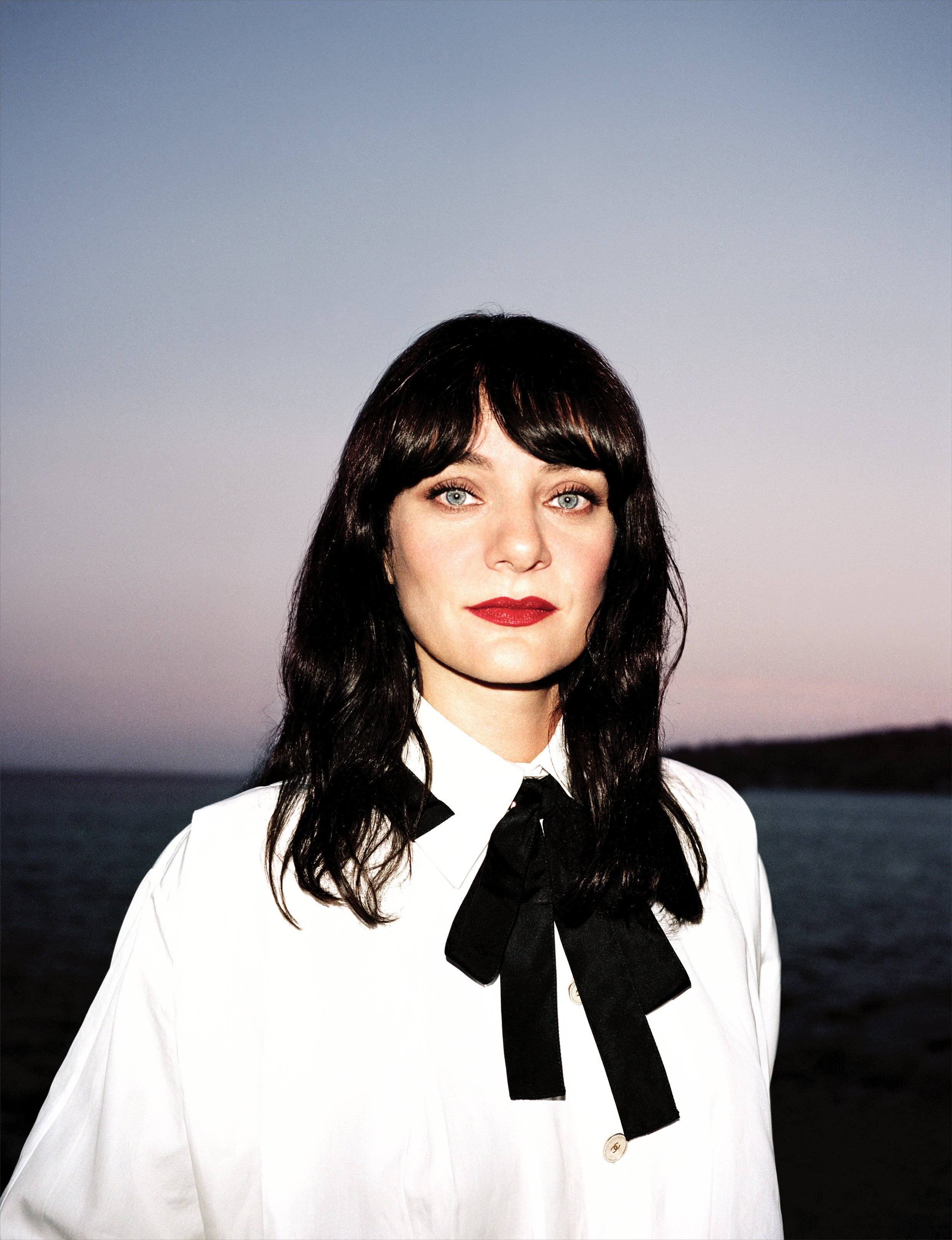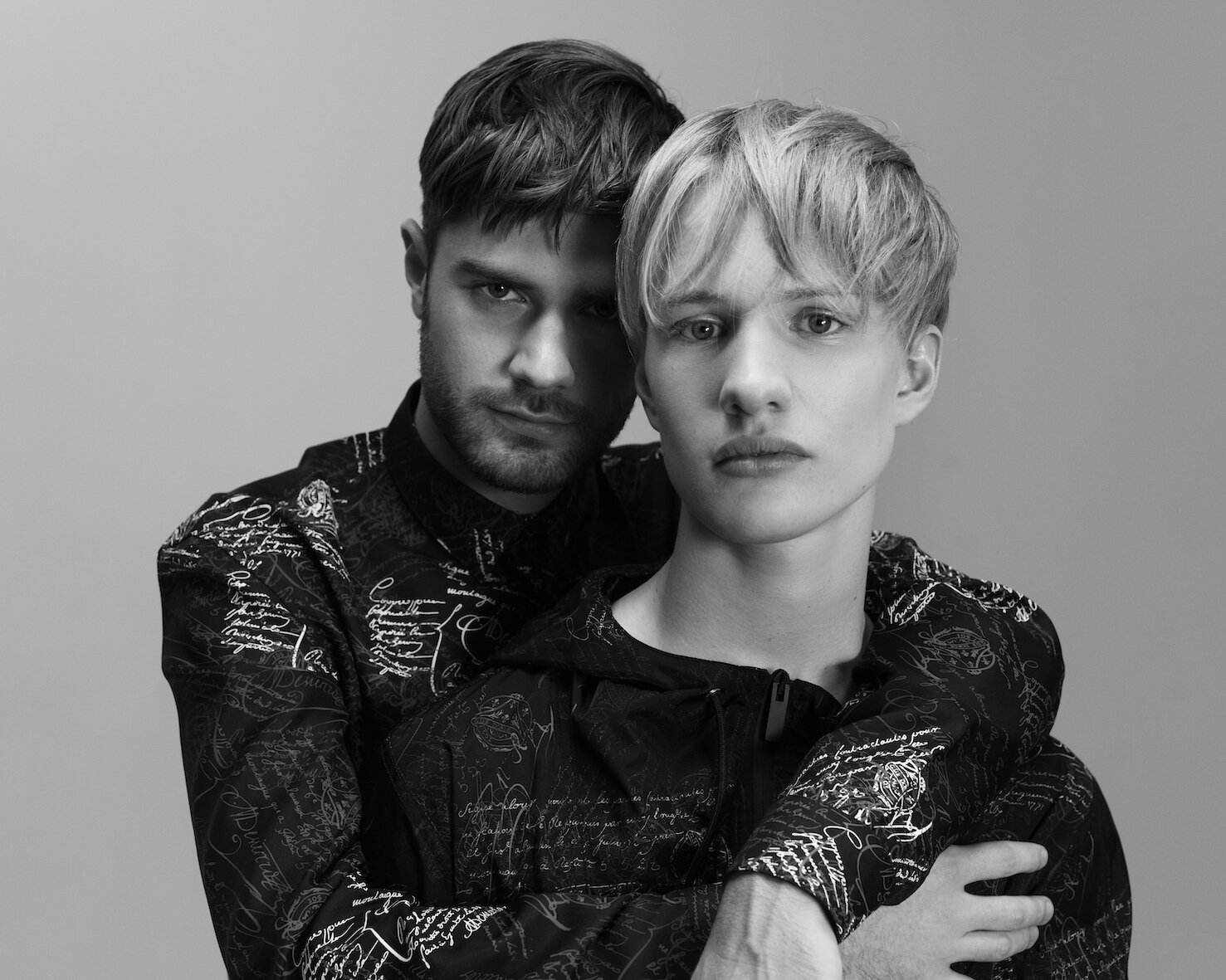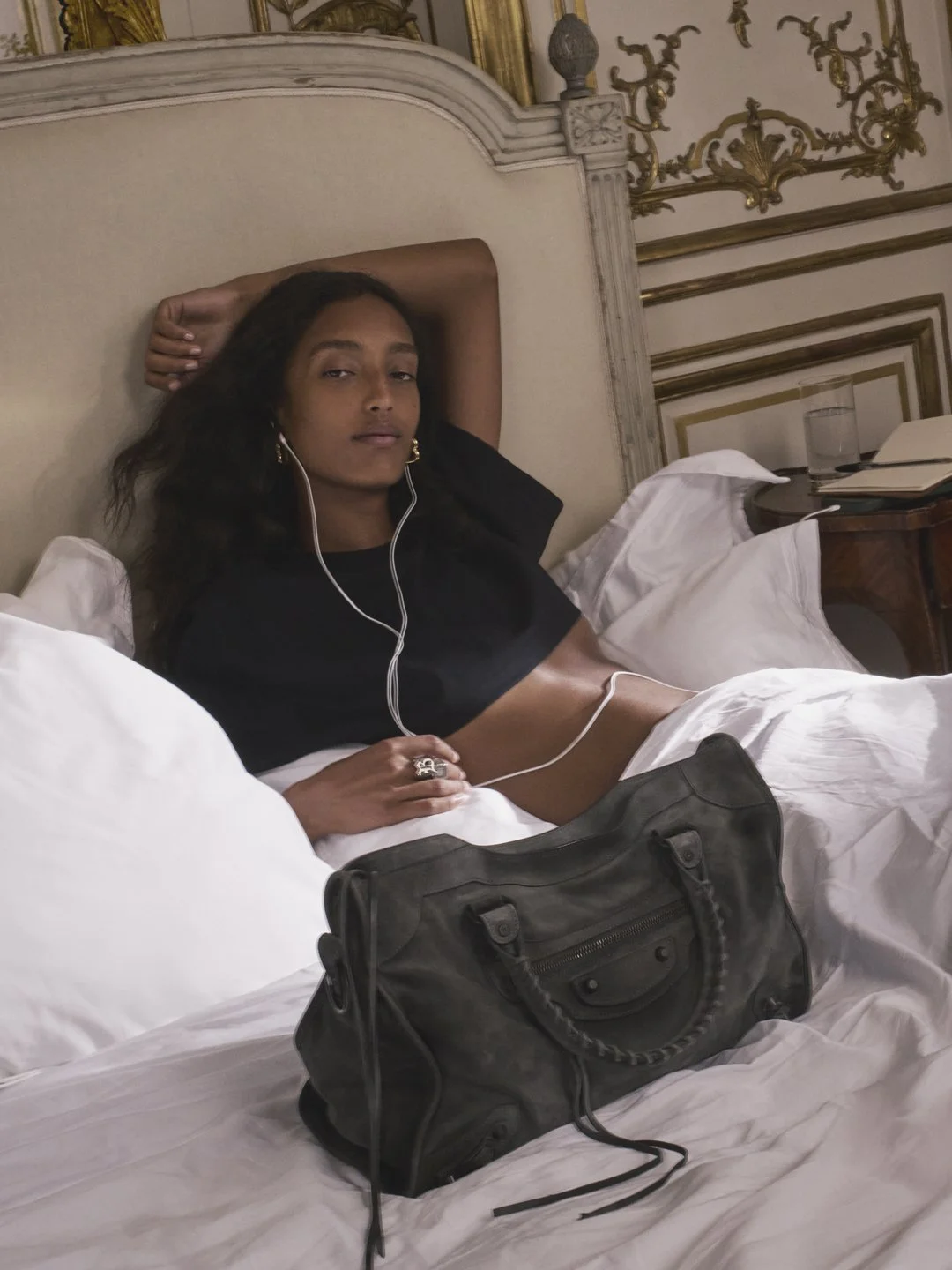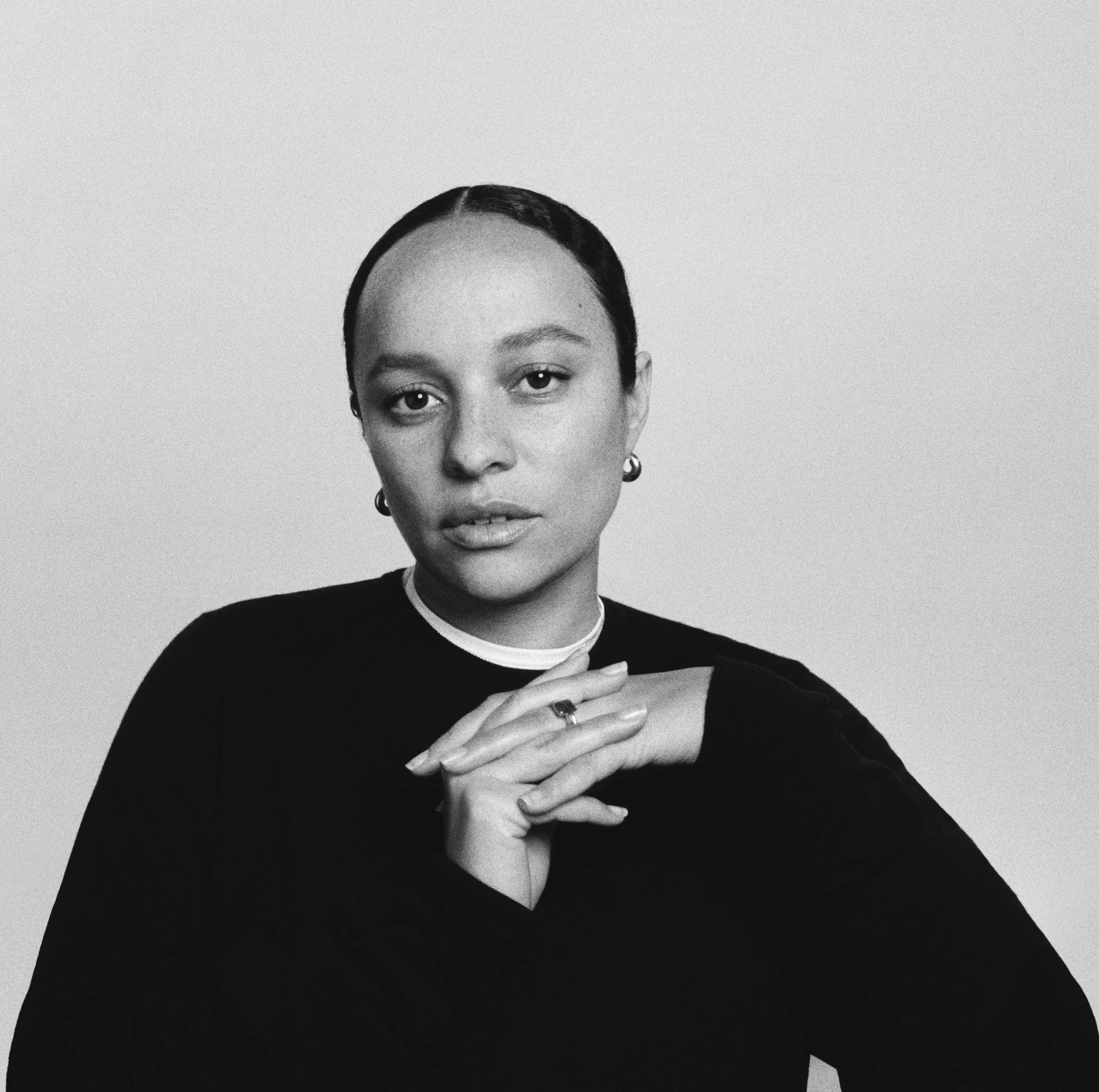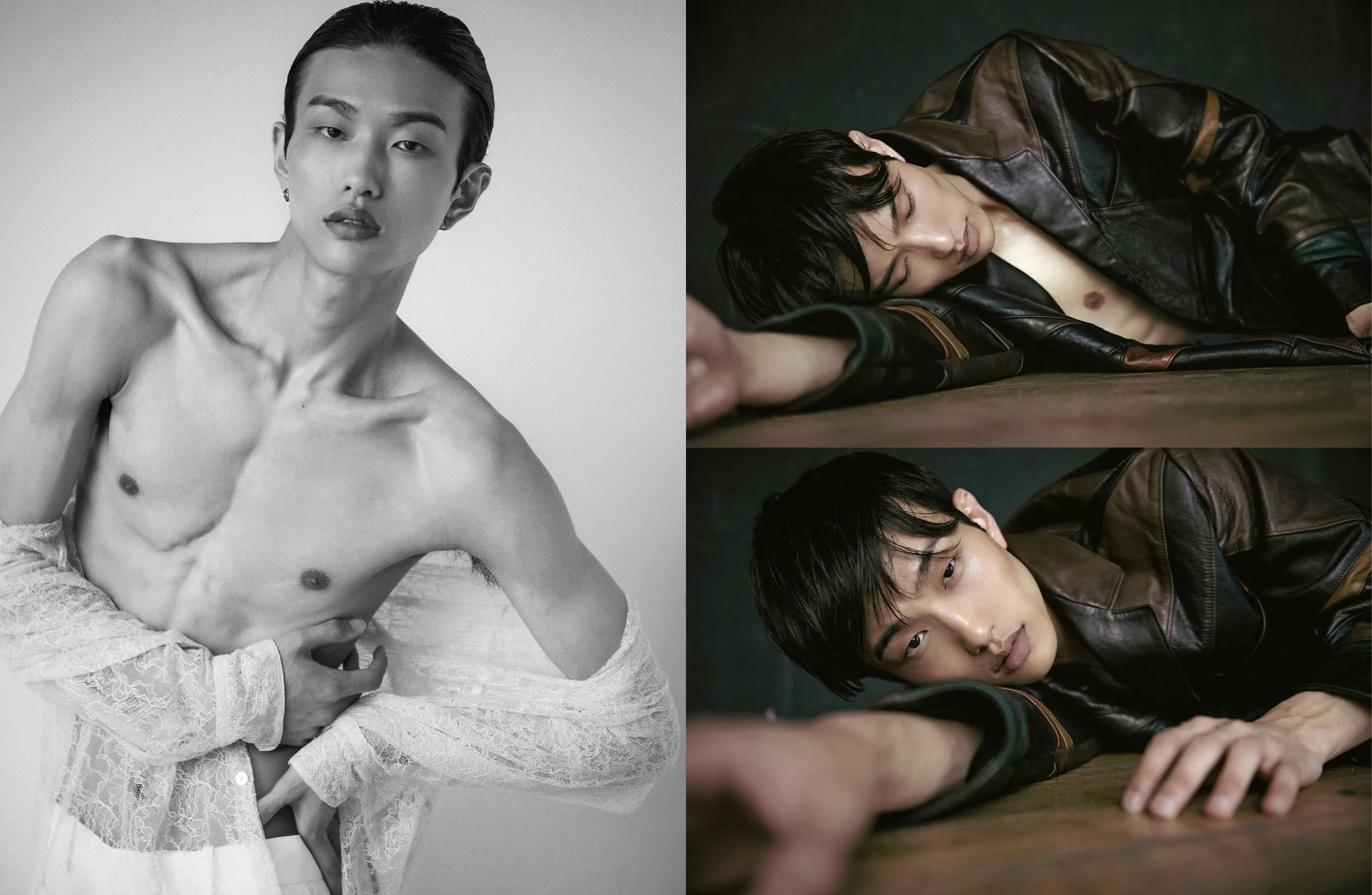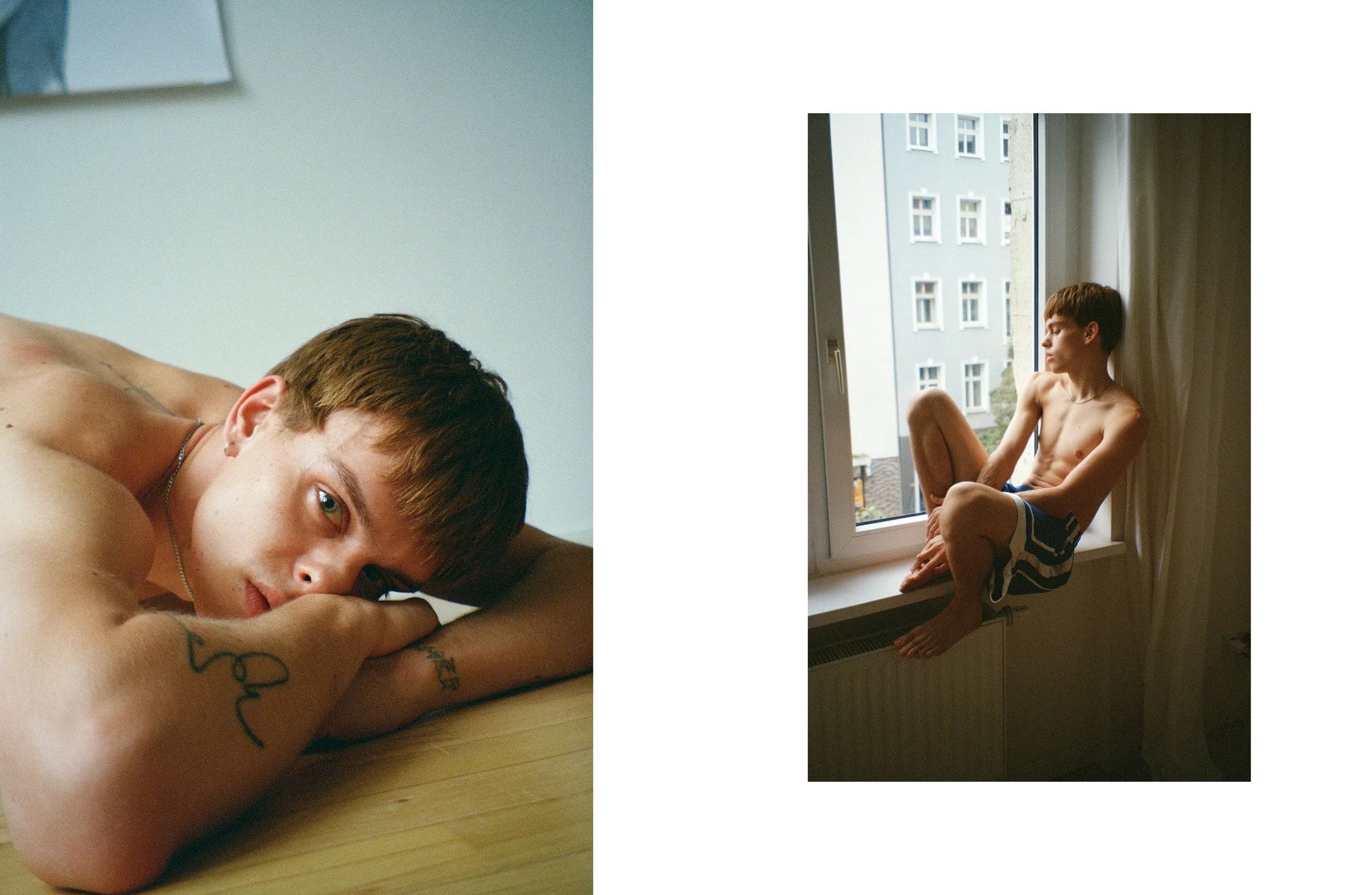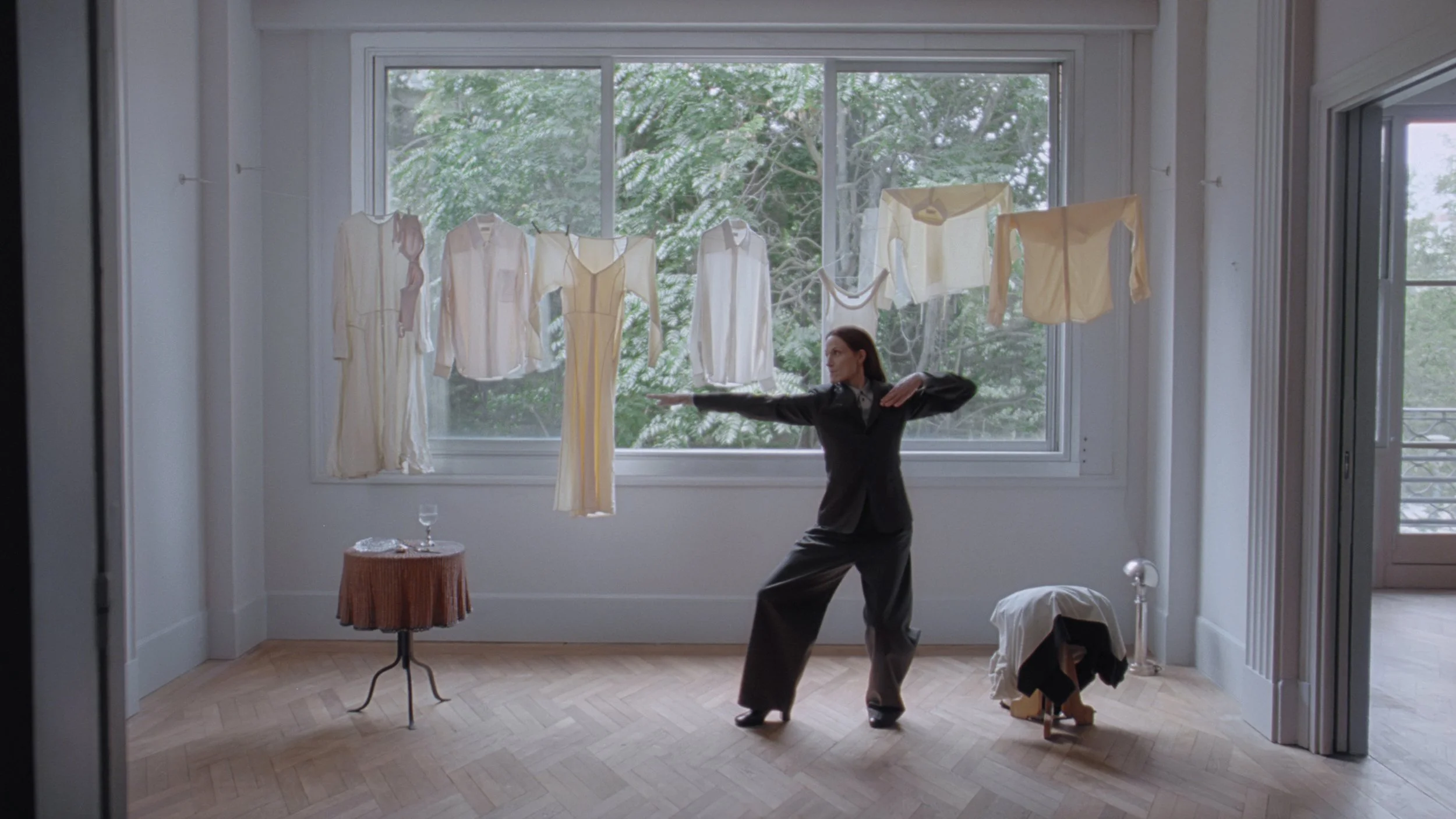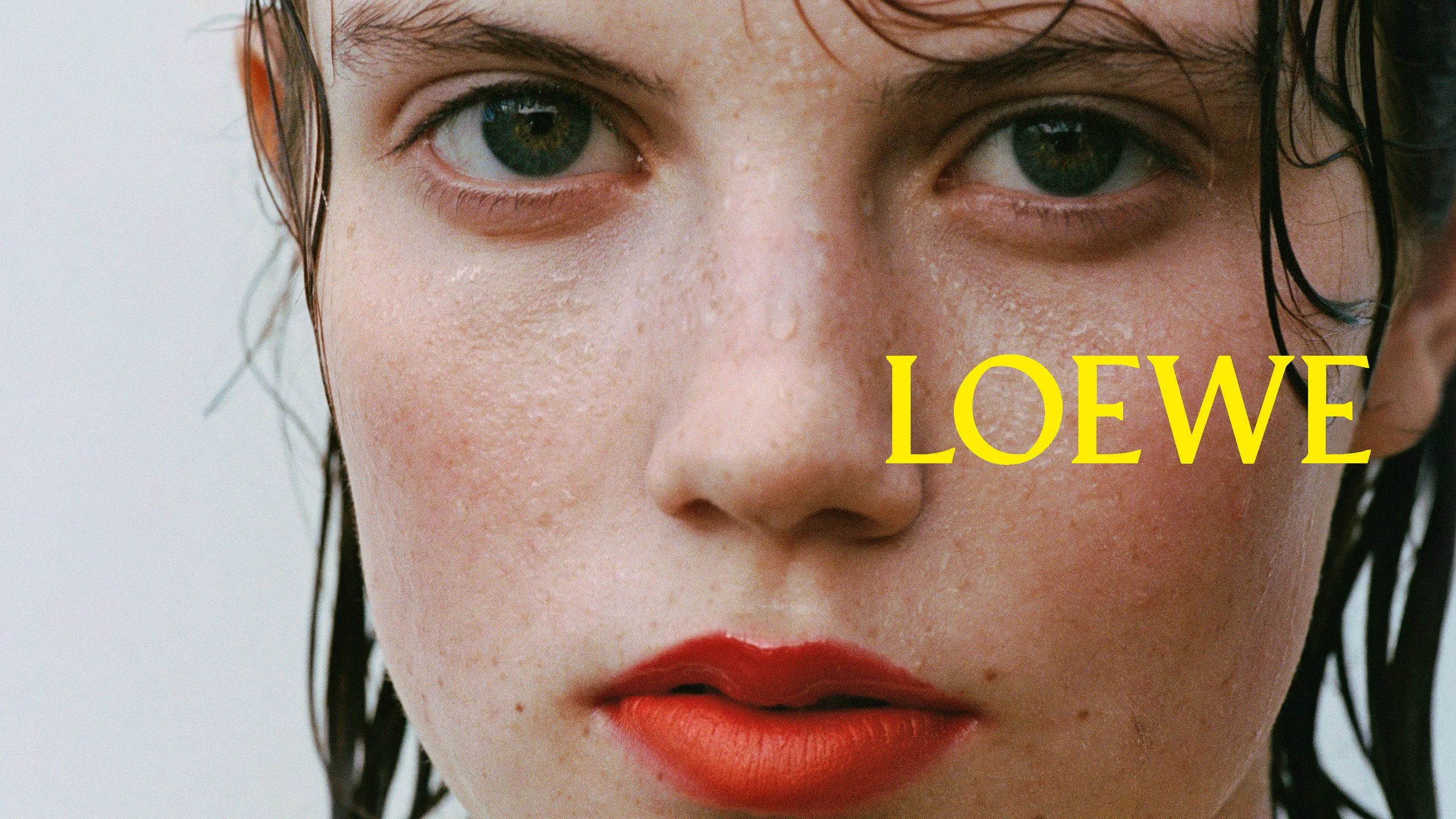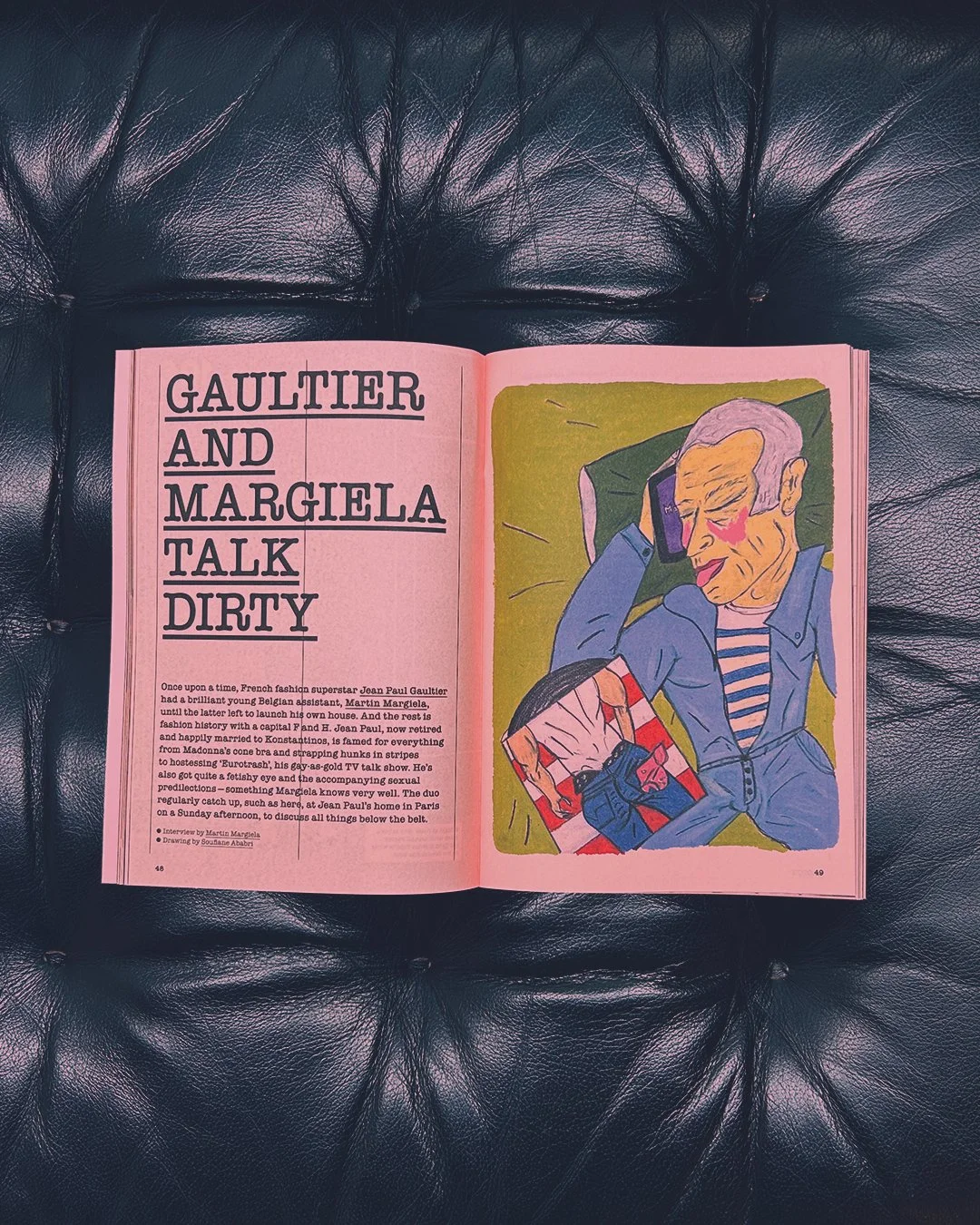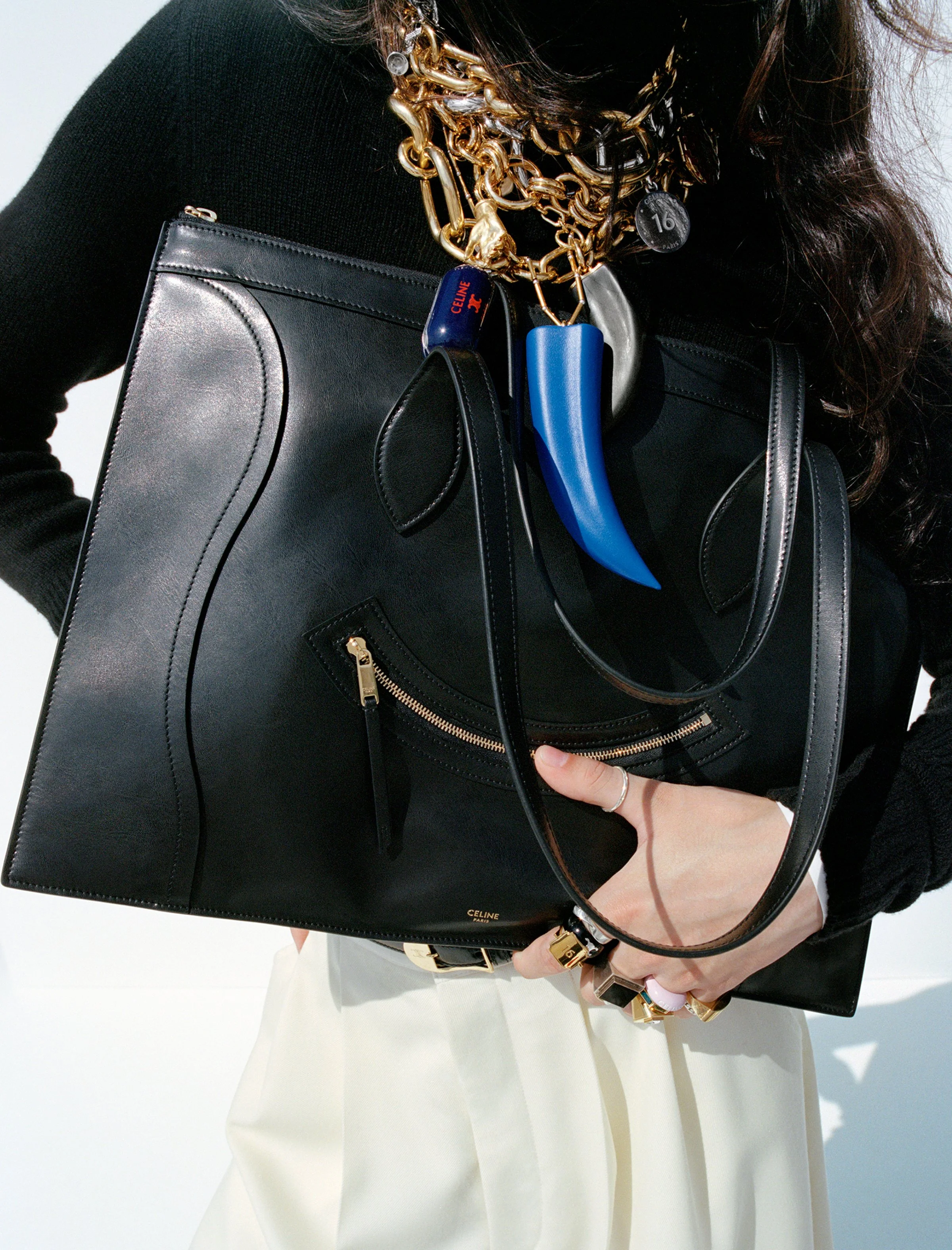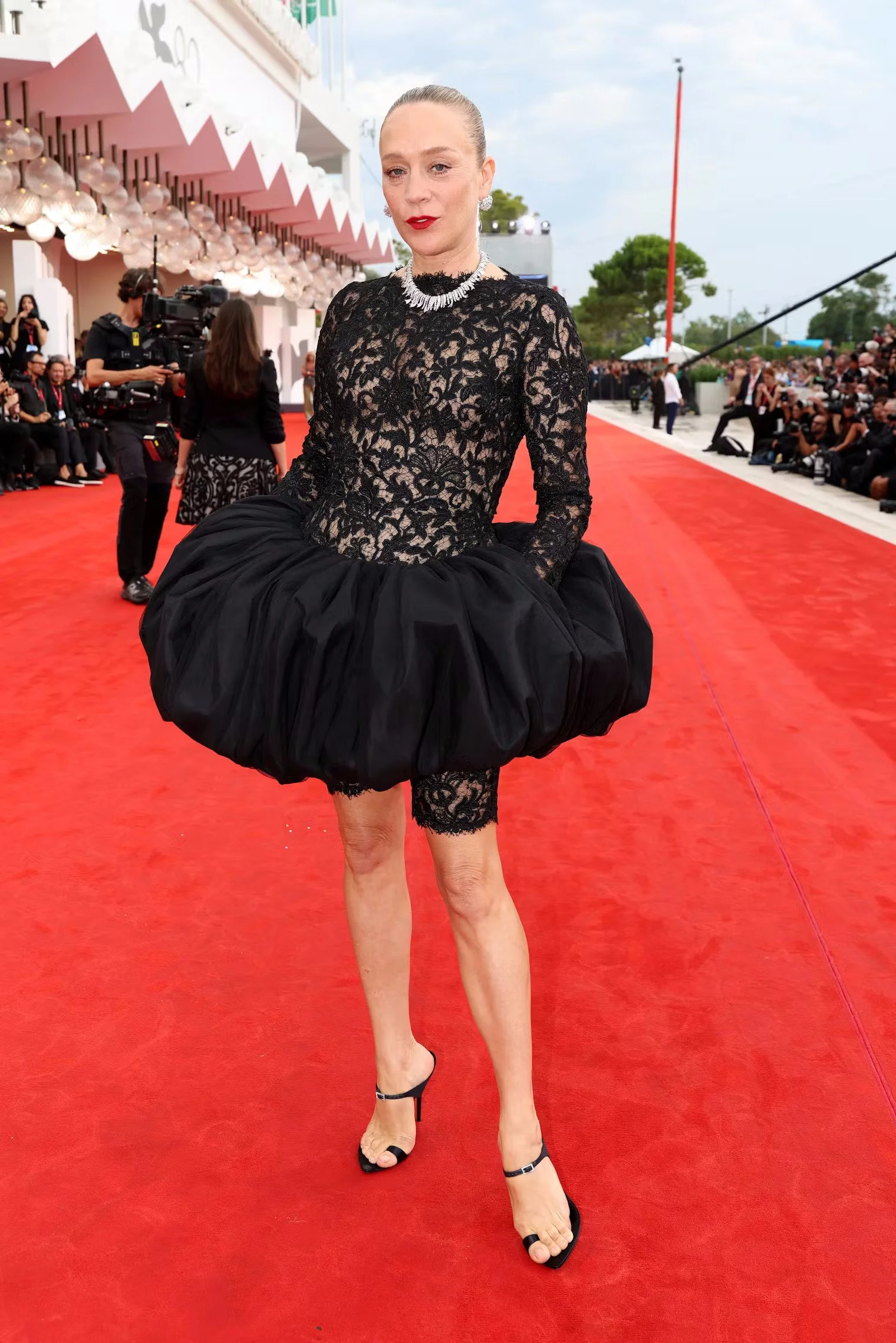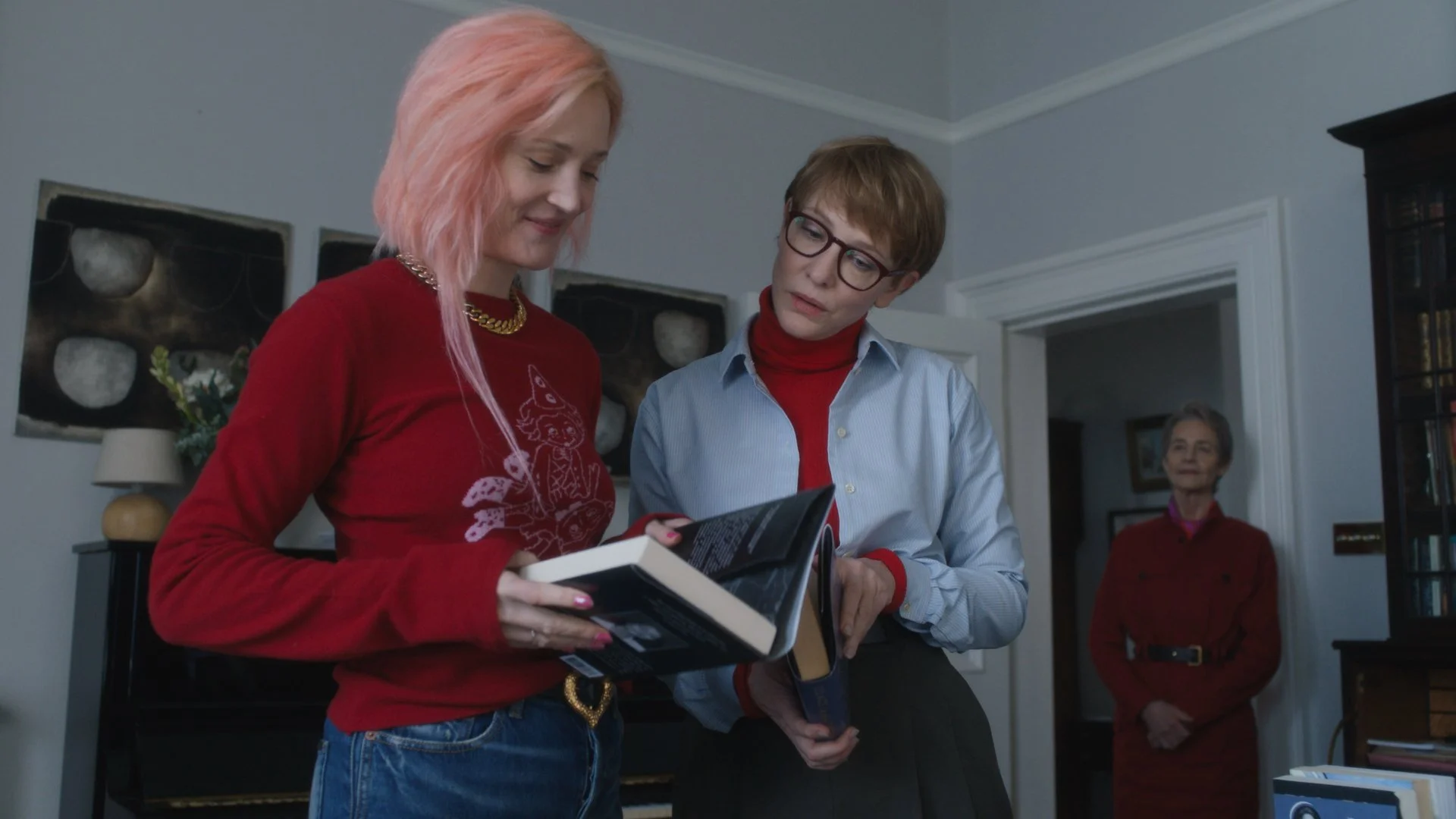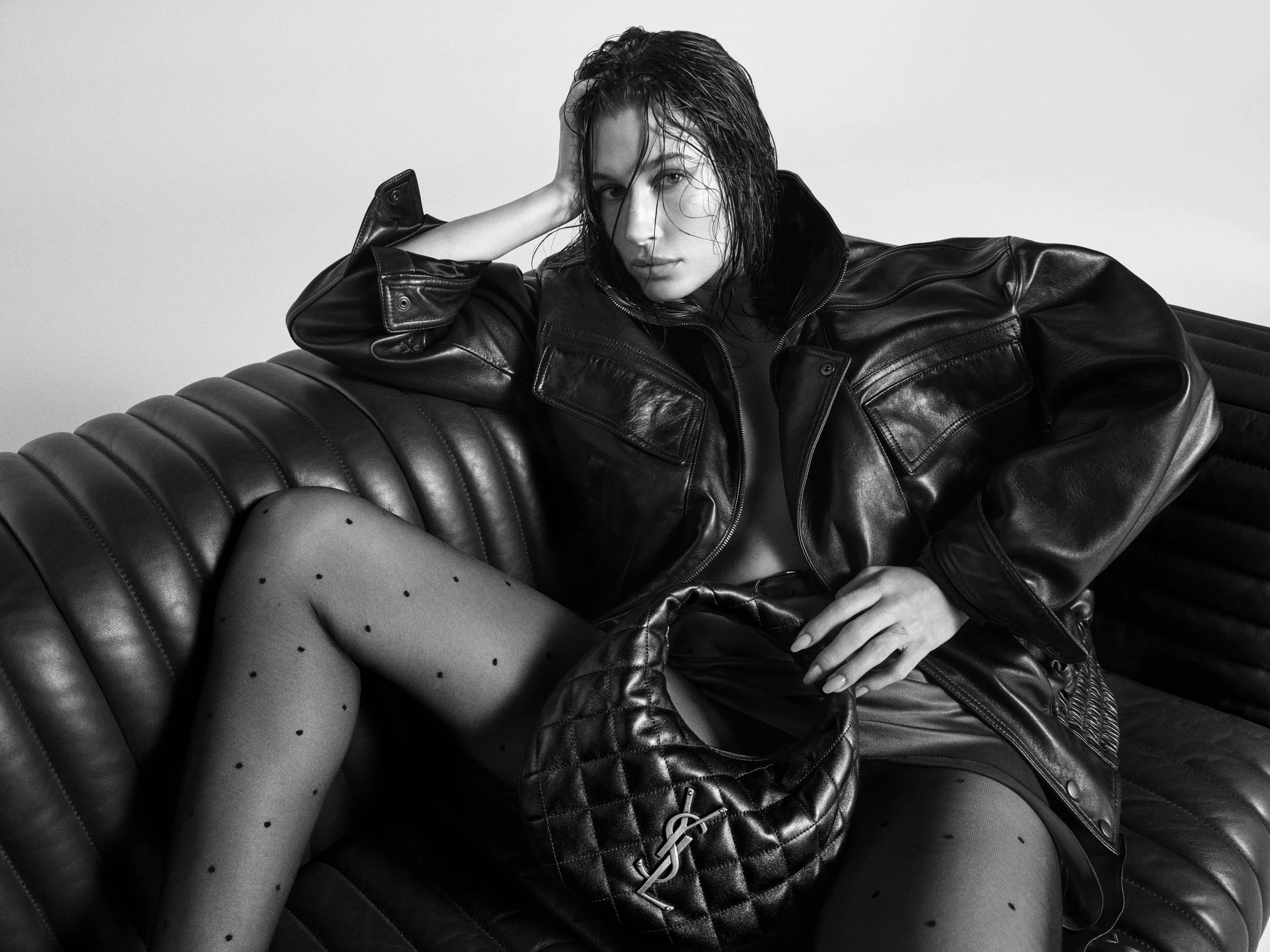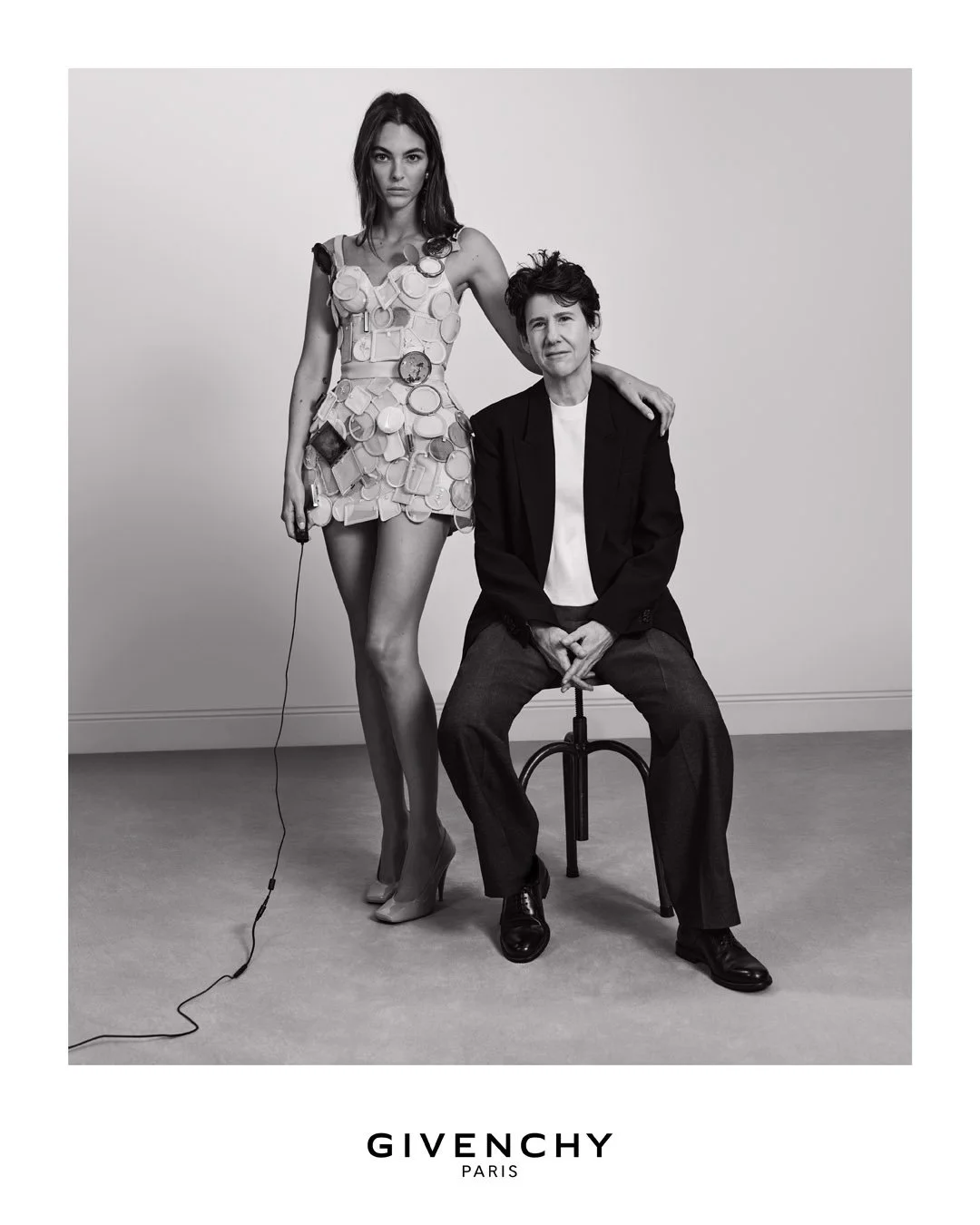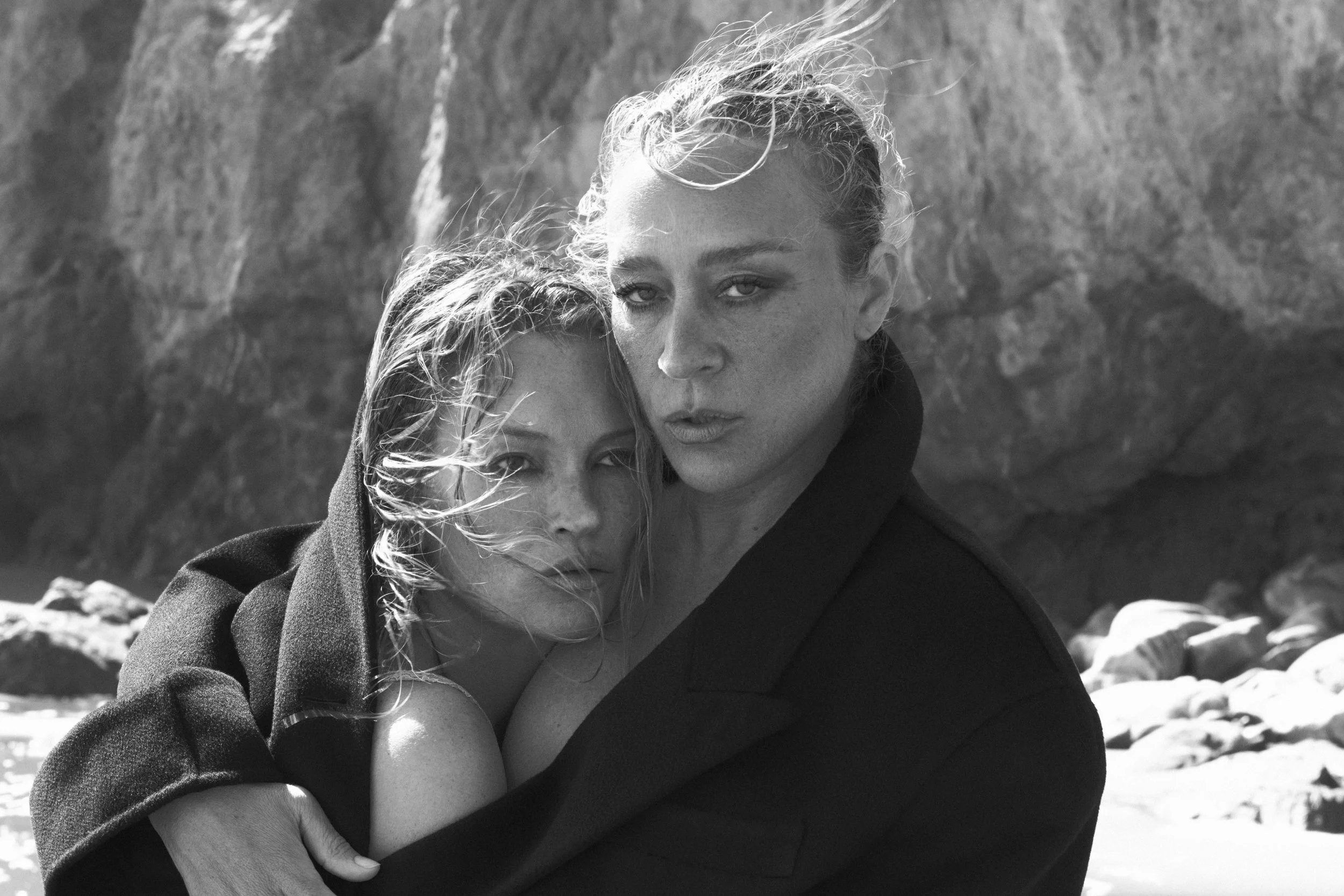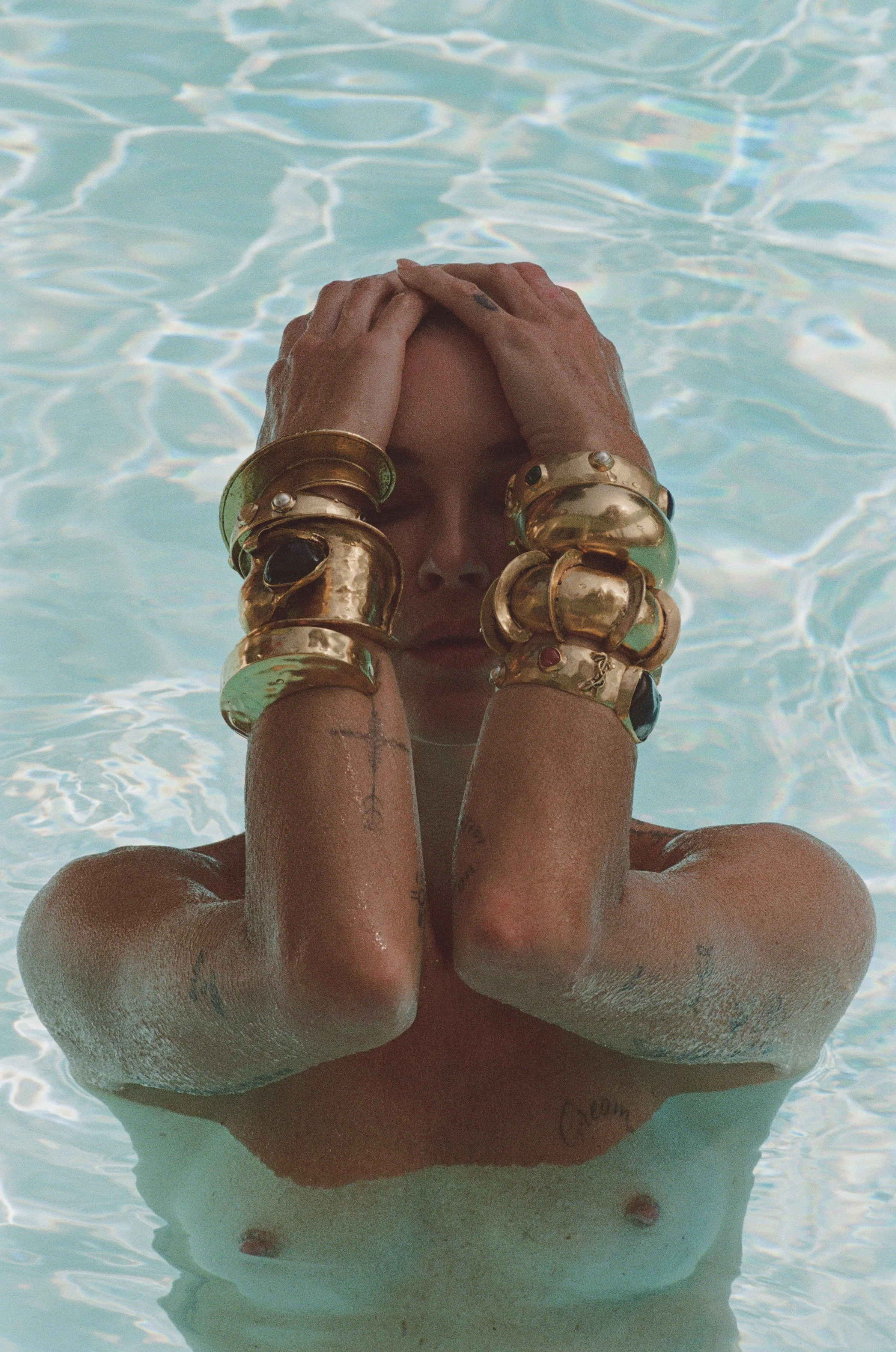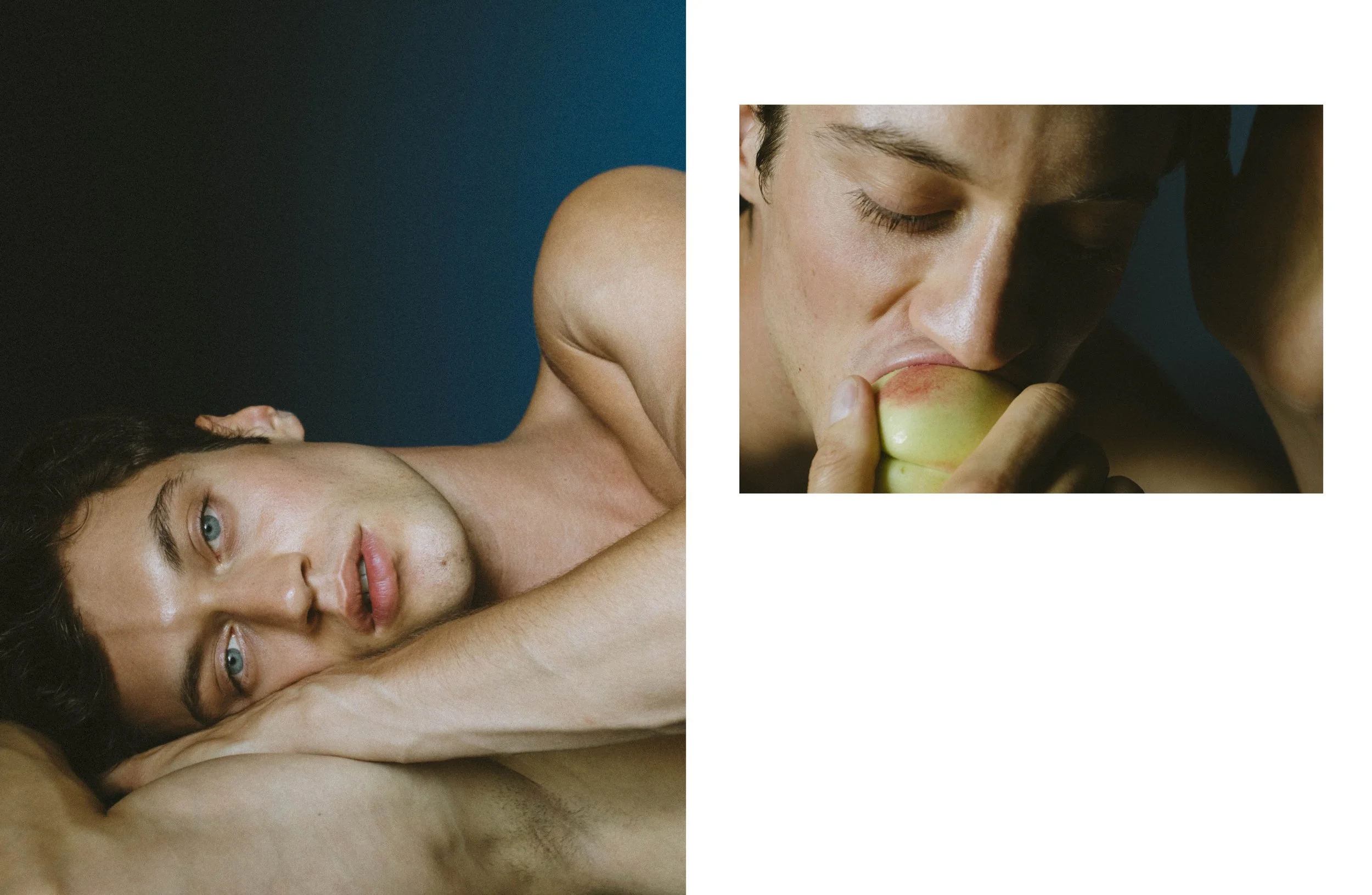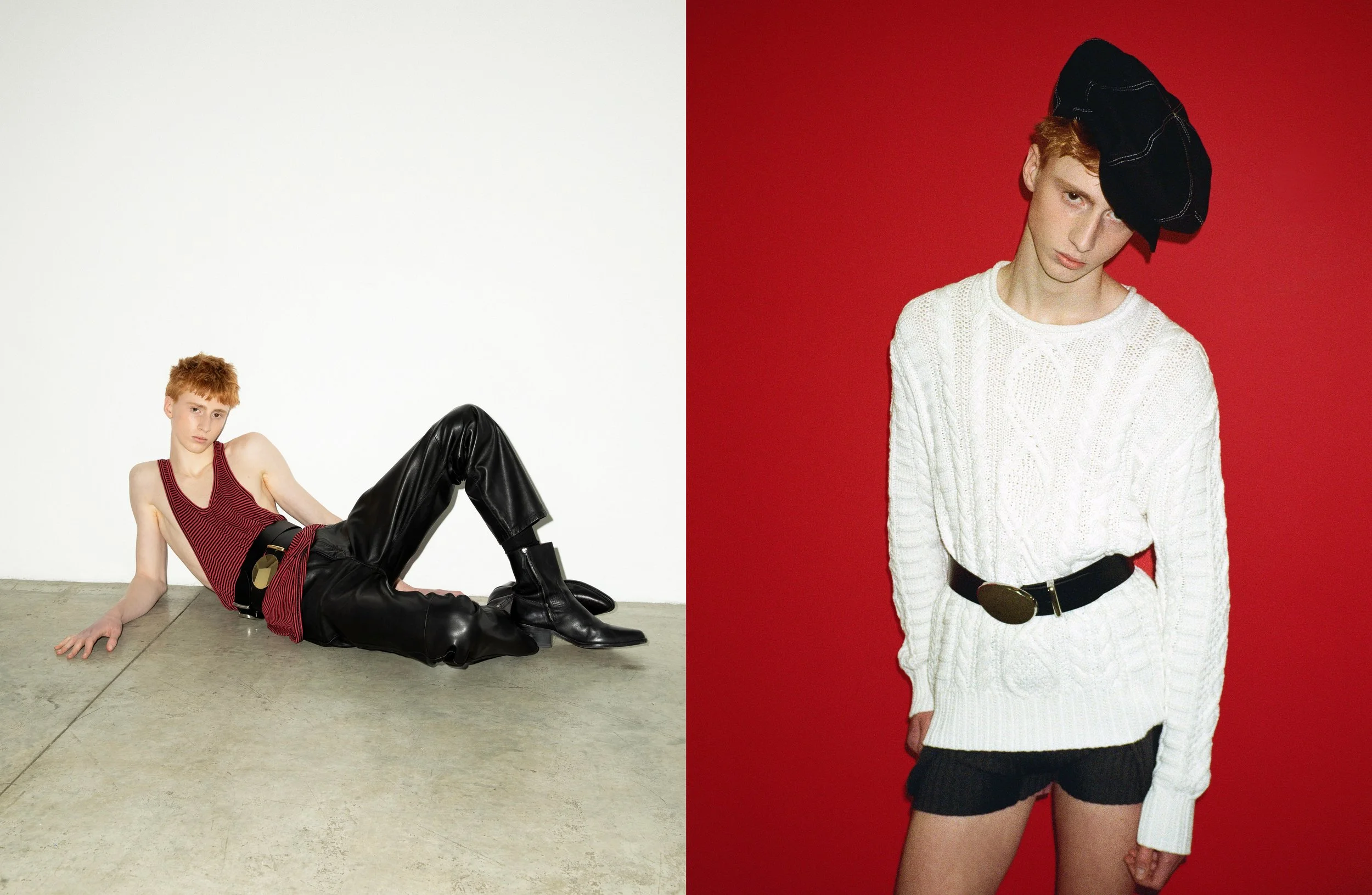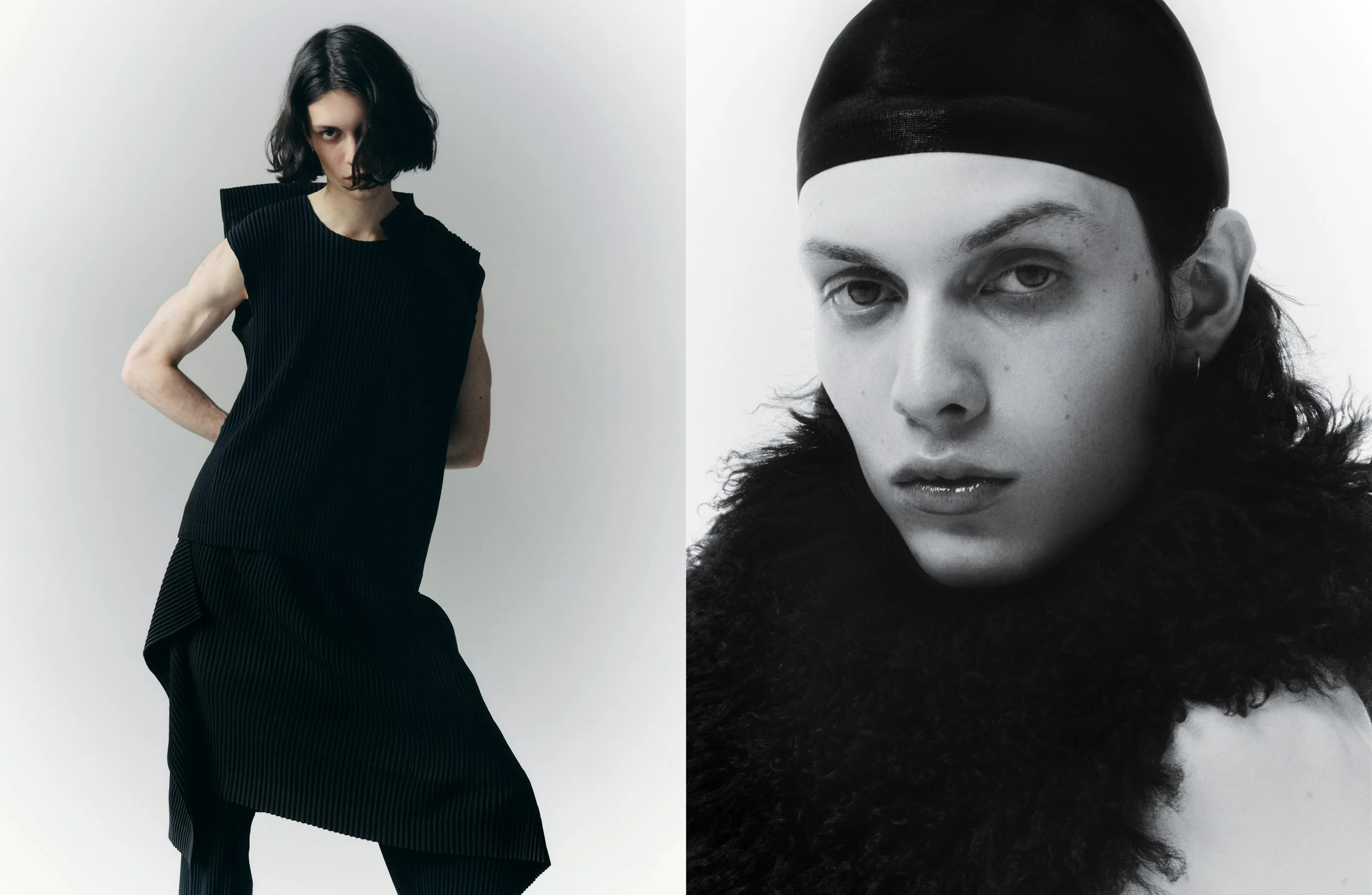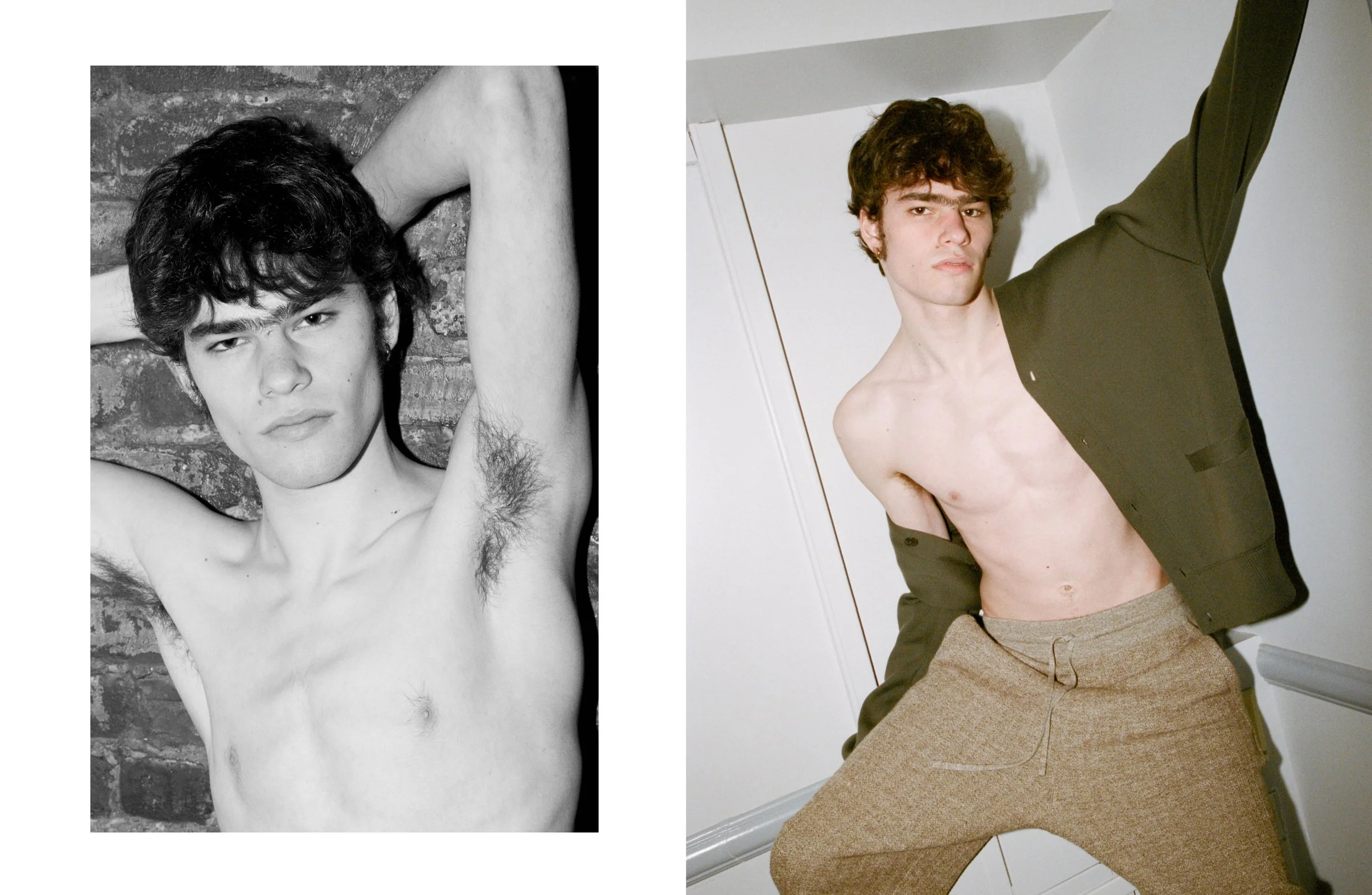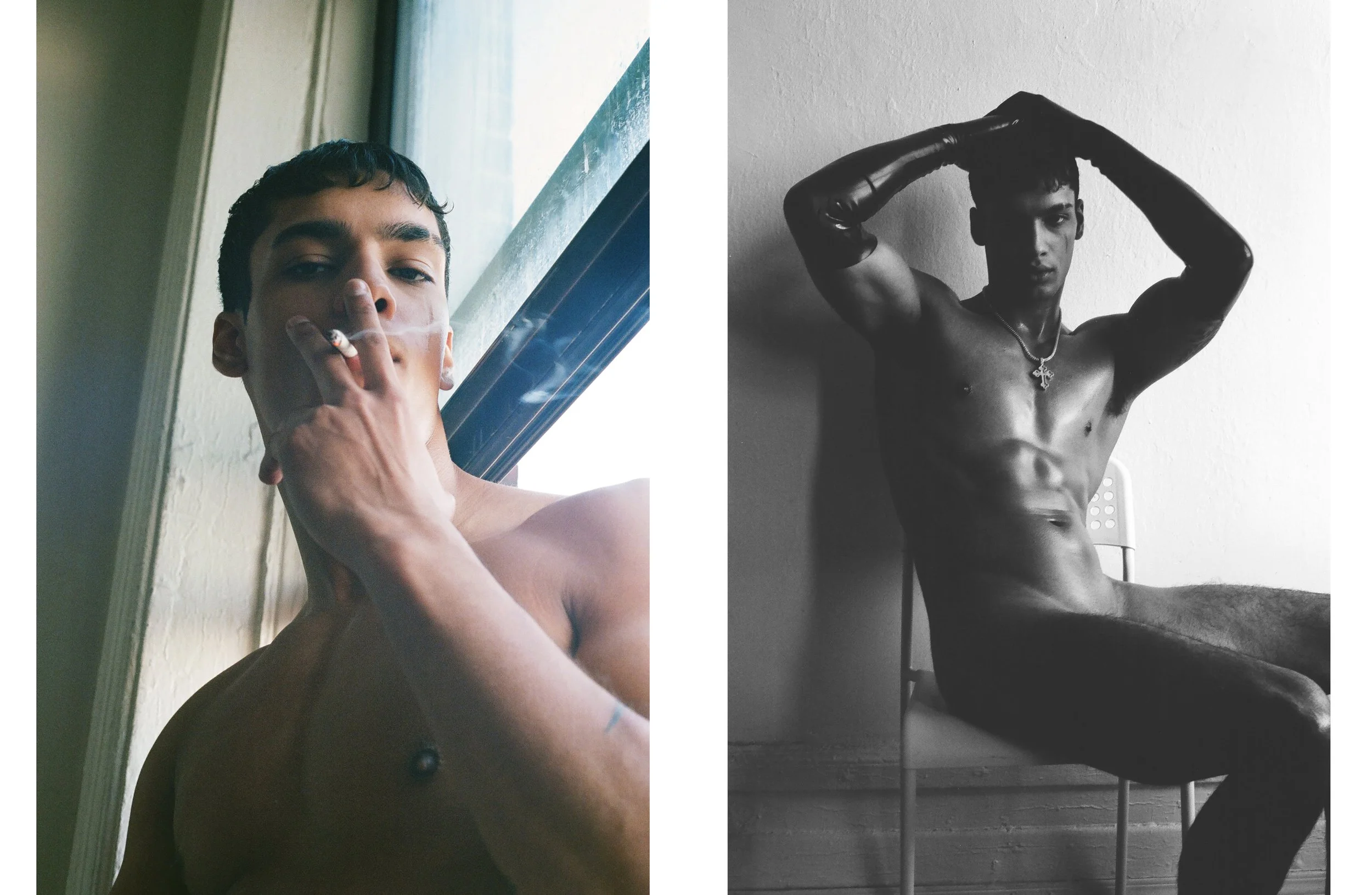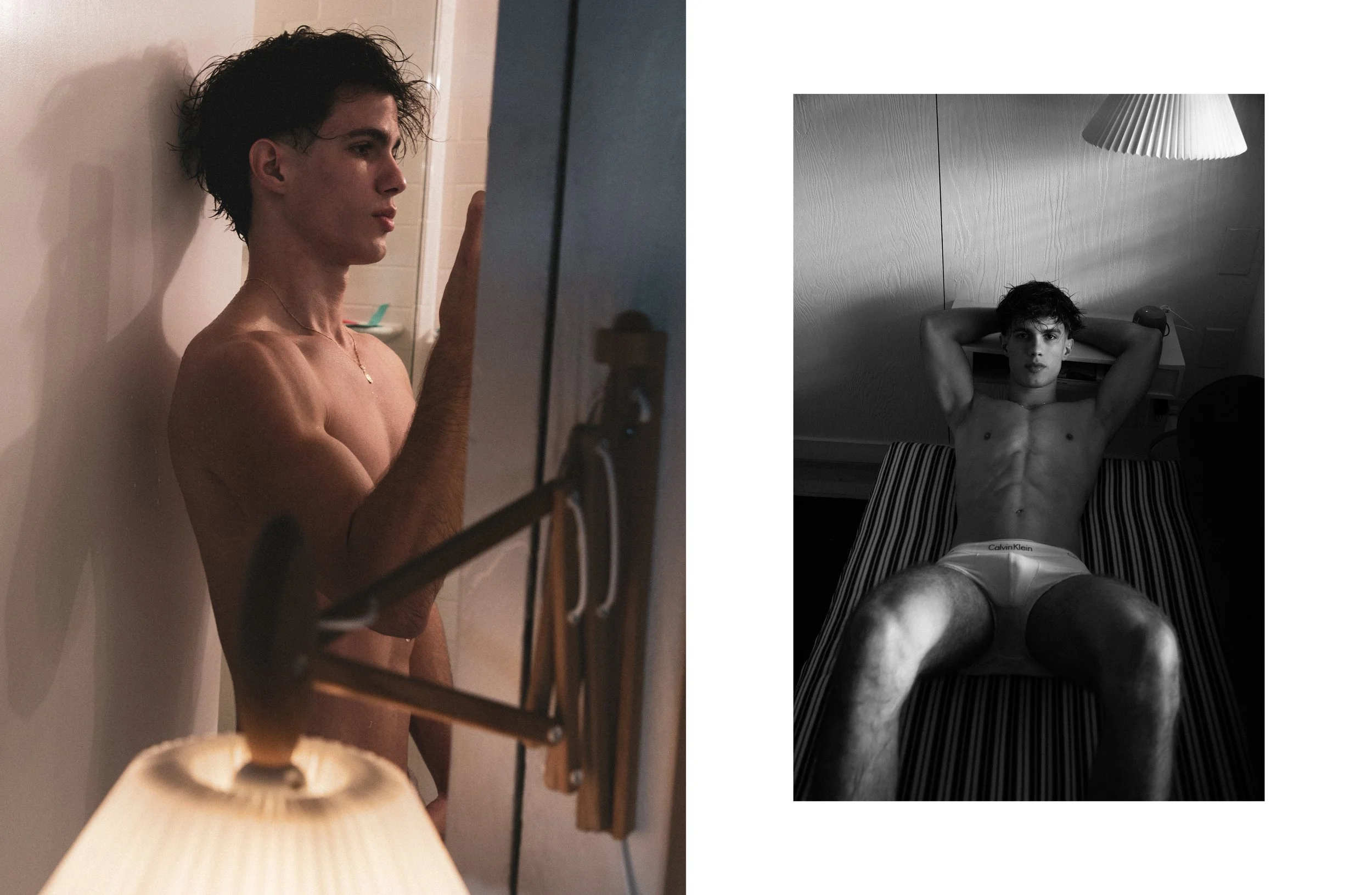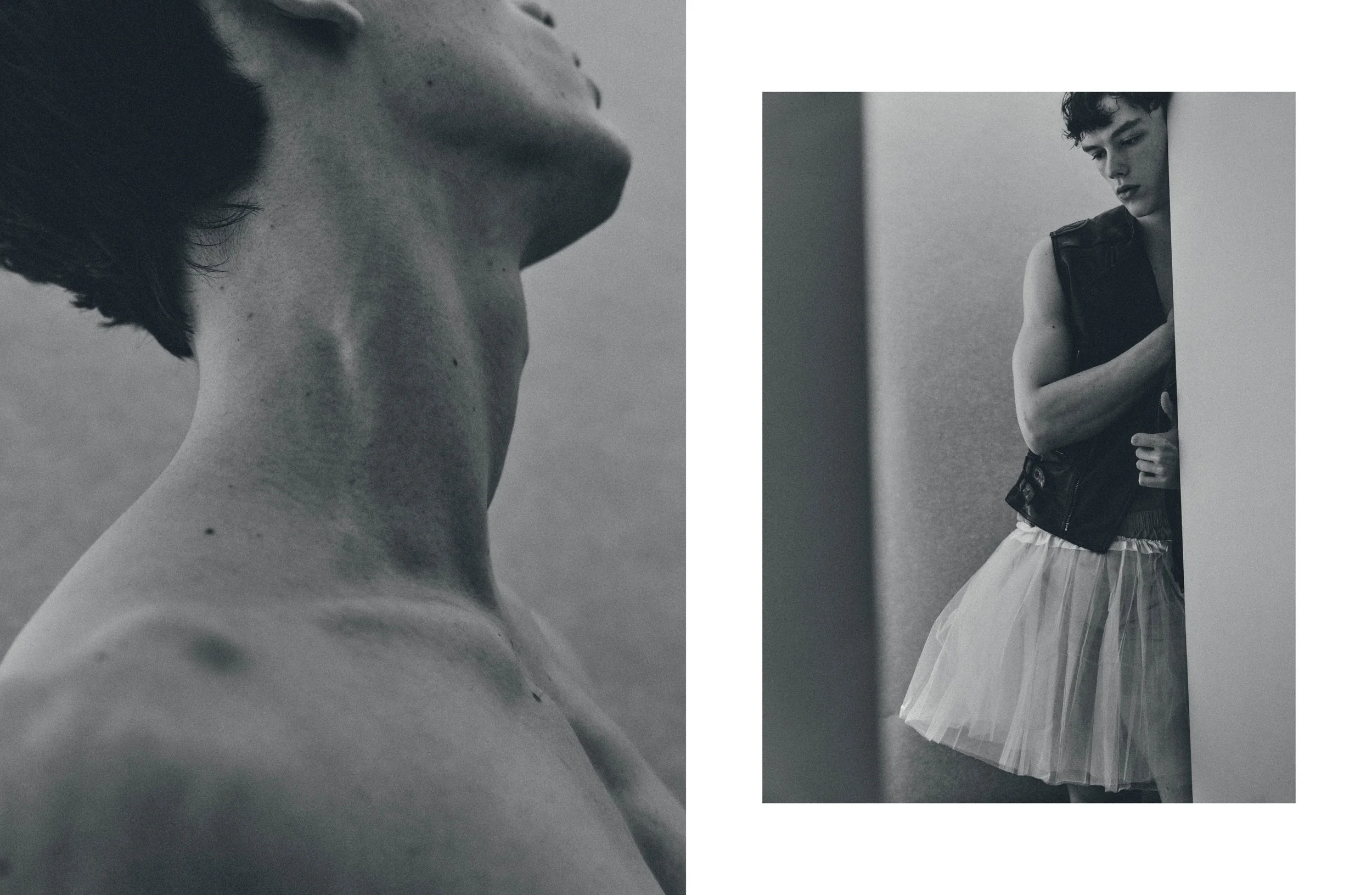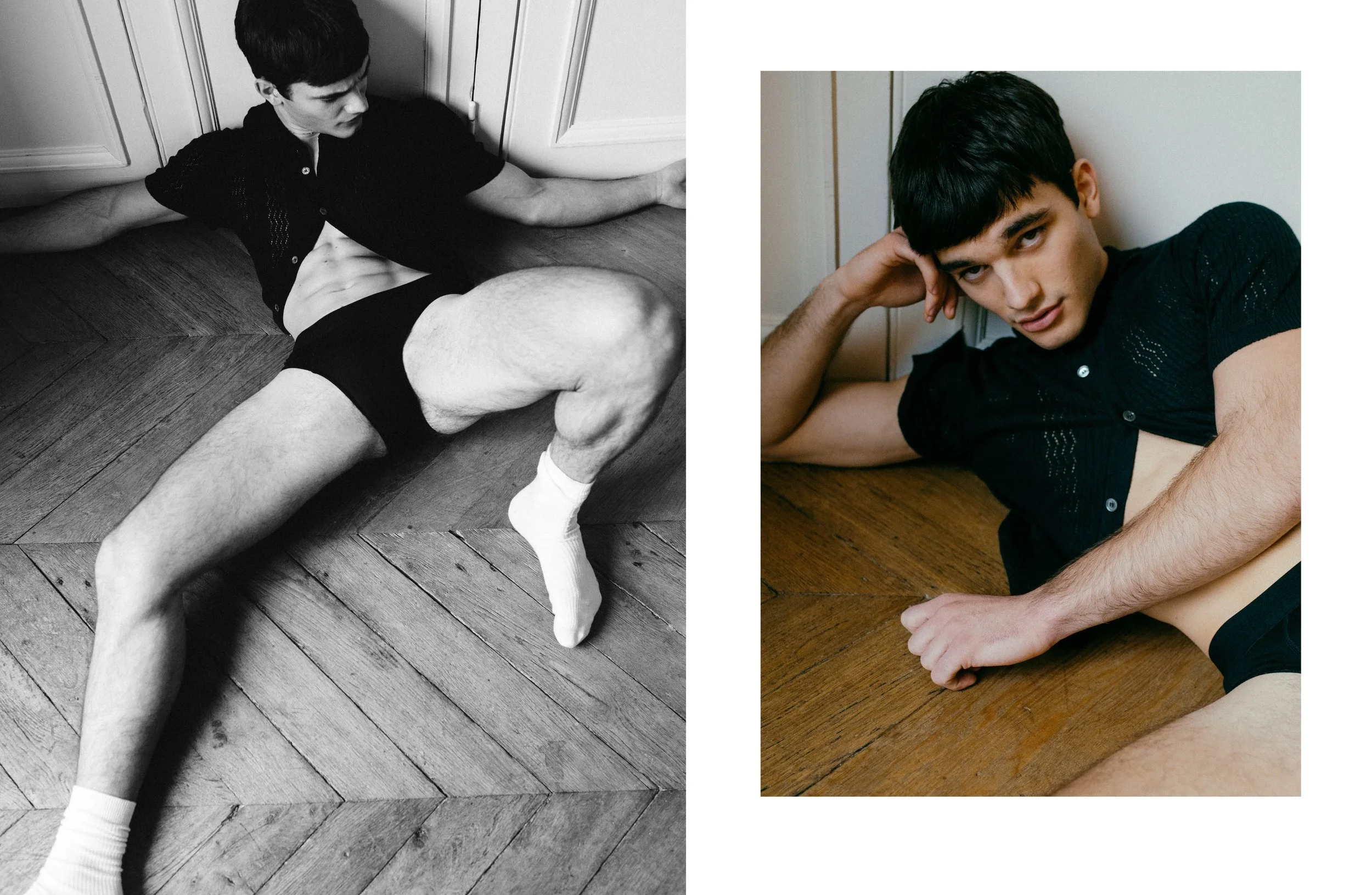Mis en avant
CHANEL SS26
In the season that promised radical change, Chanel reached its climax. Scheduled for the penultimate day of Paris Fashion Week, Spring/Summer 2026 marked Matthieu Blazy’s much-anticipated debut. It isn’t an easy maison to lead. Its codes, its look, are ingrained in more than fashion history; it’s connected to the reason many love the industry. Through tweed jackets and padded bags, Chanel is synonymous with fashion itself. Even for a designer with Blazy’s track record – from the rumours of ghost designing Maison Margiela’s Artisanal collection to a genial tenure at Bottega Veneta – it’s a tough job. How does one approach a house that has had only a couple of creative directors in its 115 years? According to the French-Belgian designer, it's by looking into its history.
It’s clear Blazy studied the maison. Its codes are not just referenced, they’re played with, twisted, and turned in whimsical ways. The classic tweed jackets have their traditional pattern augmented. Inspired by the digital age habit of zooming in on one’s phone, the designer did just that, amplifying the organically angular print of Chanel’s tweed. The maison’s founder was considered in more than one way. First, Gabrielle Chanel’s most recognisable silhouette. On a cotton dress, a tweed skirt is attached right at the hip, with a matching jacket; the look emulates an unmistakable 1930s silhouette. The technique was replicated in a set that replaced the classic jacket with a checkered tweed shirt — a Matthieu signature — that melted at its extremities into caviar beading carefully placed to resemble the fabric’s texture.
Gabrielle Chanel wasn’t just a source of technical inspiration. Her personal life, and its connection to the maison, served as a thematic guideline. The classic Chanel strap was sewn on the inside hem of an oversized shirt (made with Charvet’s technique, the same one the couturier was known for wearing). Her proclivity towards natural themes, in wheat ears and neutral hues, was a constant in the collection.
Of course, Chanel isn’t just Gabrielle’s. The house’s most recognisable codes are in fact not part of her organic lexicon, but of Karl Lagerfeld's artifice-driven imagination. Here, his ability to make the comical chic was slightly reworked. The legendary designer was known for his over-the-top sets and campy themes. Blazy doesn’t ignore the impact his vision had on the maison, but doesn’t reach for the same effect. If Lagerfeld made a point to wink at his audience, the new creative director is more earnest. Crystal earrings host enamel chicks inside; one of the bags is a literal globe, harking back to the show’s planetary set.
And still, despite all his respect for the legacy, Blazy wasn’t afraid to meddle in it. It takes gall to reword Chanel’s most idiosyncratic bag, the 2.55. The icon is twisted and turned, made to look as if it’s been used and abused. Its look, even if aggravating for those that keep the stickers on their bags, speaks to a different client — the kind that makes Chanel pieces partners in their daily life. The same sentiment can be found at the hem of most of the skirts and dresses Blazy sent down the runway, their edges irregularly raw, as if worn to exhaustion.
There’s a lot of the French-Belgian designer’s style to be seen here. His materiality. His textural storytelling. His proclivity for organic themes. His ability to weave luxury techniques into casual pieces. Feathers were a highlight of the collection. Either paired with the aforementioned shirts or in low-waisted skirts, their movement represented something exciting: a new start at one of the most beloved maisons in the industry. What he did takes courage. Chanel’s future has been somewhat apparent up until this point. Blazy modifies its flight trajectory. And, in the most anticipated show of the season, he sticks the landing.
Words by Pedro Vasconcelos
LUDOVIC DE SAINT SERNIN SS26
For Spring/Summer 2026, Ludovic de Saint Sernin looks inward to find the narrative engine for his collection. Inspired by his aristocratic roots, the designer grounds the aesthetic of French nobility in his sensual codes. Frilled and lacy dresses are tight on the body, revealing the skin underneath. Shirt dresses get baroque makeovers in creations that are both structured around the waist and flowy at the hem.
De Saint Sernin’s idiosyncratic sensuality is tamed by aristocratic elements, but it’s erased. Textured bodycon dresses are split at the waist by a stringy belt. A metallic translucent gown has a floral crystal pattern overlaid. Some pieces speak directly to a period inspiration: linen shorts tighten at the knee.
The conceptual framework escapes the clothes. In the lookbook that revealed the collection, de Saint Sernin cast what he describes as a “new kind of nobility.” Emma Chamberlain, Alexa Chung and former Behind the Blinds cover star Corey Fogelmanis speak to an aristocratic class that escapes birthright. Some are born, others become – and a Ludovic de Saint Sernin piece is enough to enact the transformation.
Words by Pedro Vasconcelos
CELINE SUMMER 2026
Out in the Parc de Saint-Cloud, guests started arriving. It’s not often you can get fashion week attendees an hour outside of Paris to a show. But then again, Celine is not just any show. Summer 2026 marks Michael Rider’s second foray into the maison. In many ways, it was just like his first round: an illustration of his understanding of the brand’s legacy.
Legacy is a funny thing at Celine. In other brands, it's thought of as an ancestral myth, a visual language to pull from that resembles hieroglyphics – remnants of a distant past. At the French house, it’s a different story. Despite being founded in 1945, its aesthetic imprint is more recognisable in the last 15 years than it was in the 50 years prior. Creative directors like Phoebe Philo and Hedi Slimane brought the maison to the modern fashion lexicon. Rider is acutely aware of it. His take on Celine reflects it.
Philo’s staples – her slouchy tailoring, her chicness, her scarves – are all here. Interesting draped shoulders are combined with pleated trousers, oversized shoulders on tailored jackets nipped in the waist by comparison. It’s not just Philo’s women; Slimane’s boys are peppered throughout the collection in the same measure. Tight pants and fitted leather jackets are reminiscent of the French designer.
Still, it’s not to say that Rider doesn’t consider the legacy of the maison’s founder. Celine’s DNA is decisively French. Flowy knotted white dresses paired with oversized glasses speak to it. He takes on national archetypes and twists them, adding a sense of whimsy. Still, for all its lightness, Summer 2026 felt more focused than his previous collection. If before accessories and jewellery were used to break the seriousness of an otherwise elegant offering, here, prints take on the same role. Mod daisies bloom on minis. Irregularly spaced stripes fill the sleeves on tight-knit dresses.
Rider’s American sensibilities come through in varsity polos and the airs of the Ivy League they bring in. The colour palette is equally his. Pops of red and royal blue burst in between black and camel. The designer isn’t just referencing, he’s creating the new Celine language in real time.
Words by Pedro Vasconcelos
MIU MIU SS26
For Miu Miu’s Spring/Summer 2026 collection, Mrs. Prada returns to one of her enduring fascinations — workwear — reframed through the lens of female labour and resilience. Set within a space reminiscent of a canteen, the collection unfolds as a subtle tribute to women’s unacknowledged strength, from the physicality of their professions to the invisible labour that sustains the home.
The show opened with German actress Sandra Hüller, embodying strength in a utilitarian jacket with a leather collar, layered under a simple blue apron. From there, Prada transformed the humble staple into a fashion archetype: leather aprons worn over perforated zip-up knits, crochet versions paired with boxy grey blouses, and black dresses trimmed with ruffles framing the bust. Domesticity was reimagined as a badge of dignity in wrap-around shifts printed with tiny florals — their blue and yellow hues echoing the familiarity of a housekeeping uniform.
Accessories, too, bore the marks of labour and intention. Sturdy braided belts came equipped with key rings, mirrored also on suede bags — a detail both decorative and practical. Footwear carried an assertive weight, from tanned mules to work boots with solid, sculptural soles. A whisper of retro charm softened the look: printed silk neck scarves, neatly tucked under crisp shirts, thick sweaters, and short-sleeved polos.
This is Prada’s vision of work — not drudgery, but discipline transformed into style. A uniform for the women who make the world turn, rendered with tenderness, irony, and the unmistakable intelligence of Miu Miu.
Words by Martin Onufrowicz
THE ROW PRE-FALL 26
Ashley and Mary-Kate Olsen may be synonymous with minimalist luxury, but their latest collection for The Row proves that restraint can be a form of rebellion. In their world, silence speaks volumes — and at their private Paris Fashion Week presentation, it said everything. No photos were allowed, as per usual. For four days, we waited. Then, finally, the imagery arrived — and with it, a shock.
Gone were the intimate, golden-hued settings and soft Parisian interiors we’ve come to expect. Instead, The Row unveiled a starkly elegant album of black-and-white portraits — each look captured from three precise angles. The absence of colour felt deliberate, a stripping away of excess to reveal something purer, almost monastic in its clarity.
Despite its monochrome presentation, this is arguably one of The Row’s most experimental collections to date. The draping alone borders on architectural: crinkled taffeta skirts paired with matching blouson jackets worn backwards; a sleeveless gown that transforms with an attachable silk train.
Texture and silhouette took centre stage. A trench and wide-leg trouser set mimicked the delicate folds of crimped paper. A long-sleeve blouse, covered entirely in black feathers, met the sharp tailoring of immaculate suit trousers. The same feathered texture reappeared in an ankle-grazing skirt, styled with a cashmere twinset — the cardigan casually fastened only at the top, slipping into cape territory.
Every detail bore the Olsens’ signature precision: a trio of combs nonchalantly tucking back hair; a row of mismatched buttons adorning a cropped wool jacket. Nothing shouted. Everything whispered.
In The Row’s world, rebellion doesn’t come in colour or volume. It comes in stillness — in the refusal to conform to fashion’s noise.
Words by Martin Onufrowicz
VALENTINO SS26
At Valentino, Alessandro Michele staged a thoughtful spectacle that was as cerebral as it was luminous. Titled Fireflies, the SS26 show drew its conceptual pulse from the words of filmmaker Pier Paolo Pasolini. In 1941, amid the shadow of war, Pasolini wrote of fireflies – tiny, flickering bursts of desire and life that endure even in the blackest nights. Decades later, reflecting on post-war Italy’s drive toward cultural conformity, he mourned the “disappearance of the fireflies,” a warning against surrendering to darkness.
Yet, as art historian Georges Didi-Huberman reminds us, these sparks never fully vanish – they demand an attuned gaze. Like those ephemeral lights, creativity and hope endure: fragile, fleeting, but potent. They offer glimpses of beauty, resistance, and possibility that refuse to be homogenised.
Michele’s runway became precisely this kind of observatory. Fashion, in his hands, is revelation: a medium capable of conjuring transient magic, political resonance, and human connection. Fireflies was ephemeral yet insistent, transforming the catwalk into a constellation of light, charting new imaginaries while celebrating the resilient radiance of life itself.
The show opened with a baby-blue ruffled mini dress layered over tailored citron-yellow trousers – a juxtaposition of innocence and audacity. Michele’s mastery of colour reached new heights: cobalt-blue silk blouses with billowing sleeves and power shoulders or their mustard variations paired with buttoned pencil skirts in purple, punctuated with hot-pink open-toed pumps.
Eveningwear shimmered with equal rigour. Lightweight double-breasted blazers, adorned in micro polka dots, featured audacious fold details; sequined jackets caught the light alongside statement gold necklaces. Silk dresses draped gracefully, accented with dyed feathers around the neckline, while a long-sleeved black V-neck gown sparkled with a dusty-pink leaf appliqué – a testament to Michele’s poetic eye.
In Fireflies, Michele reminded us that fashion is not mere ornamentation but a language of attention: a call to notice what persists in shadow, and to celebrate what refuses to be dimmed.
Words by Martin Onufrowicz
ALAÏA SPRING 2026
An Alaïa show is always an exercise in precision — refinement distilled to its purest form. Inside a minimalist glass cube, the runway became a living screen: models glided over a monumental LED floor that played hypnotic short films, each featuring one of Pieter Mulier’s muses. The result was an immersive spectacle where light, movement, and silhouette merged into one continuous frame.
The collection unfolded with a language of fluidity. The opening look — a sculpted white mini dress and coat hybrid, its bell sleeves slicing the air — was punctuated by crimson stockings trimmed with fringe that danced in rhythm to every step. Flared cocktail dresses, long a house signature, re-emerged with asymmetrical hems and gleaming breastplate details — an elegant subversion of tradition.
Feathers appeared in coats and micro-minis, soft yet assertive, while body-hugging jersey dresses in blush pink and terracotta clung like second skin, tracing the ease and sensuality that Alaïa built its mythology upon. Each piece felt like a gesture — intimate, measured, quietly powerful.
The finale, a procession of draped skirts rendered with near-sculptural precision, brought the emotion full circle. It wasn’t just a close, but a crescendo: Mulier reminding us that beauty, at Alaïa, is never shouted — it’s breathed.
Words by Martin Onufrowicz
MCQUEEN SS26
Seán McGirr had one thing in mind for his fourth collection at McQueen: sensuality. The Irish designer presented a show far removed from the clean aesthetic, instead focusing on Y2K sexual allure. The collection displayed a kind of provocation comparable only to early 2000s shows, where the body and skin were revealed through tailored and structural clothing.
What was interesting about the collection was its contrast to current times. The overall aesthetic is maximalist and edgy: it speaks of provocation, sexuality, and freedom, and is far from the constrained looks that Gen Z has adopted. Clean-girl aesthetics, minimalist dressing, and quiet luxury speak of a conservative and traditional fashion, whereas McGirr’s McQueen was all about liberation from those ideals.
This collection marked the return of trends that had disappeared from the fashion radar. Low-waisted trousers and crop tops were all over the runway. However, it was the revival of the bumsters and the visible strappy G-strings that gave an edgy and bold touch to the collection. This silhouette, characteristic of Lee McQueen’s late ’90s shows, has been one of the most iconic of the designer and of the 2000s street style era.
Historical references were translated into a modern language. Corsetry was at the centre of the looks, but far from creating a restrained figure, it was showcased with confidence and assurance. British army jackets were cropped and presented in a myriad of ways. Deconstructed dresses and shirts displayed a messy aesthetic, while leather appeared throughout the collection in the form of tight dresses, adding extra edge.
Some feminine elements were also translated into the bold visual language of the brand. Florals appeared throughout the collection in prints and 3D tops, giving a certain gothic touch. Ruffles created movement and romanticism. Parachute silk dresses and multicoloured gilded feather gowns made a dramatic entrance.
The Spring/Summer 2025 collection was all about the body and confidence. The looks elongated the female figure, giving women a self-assured and powerful feeling, shifting today’s cultural and social conversations about sensuality, aesthetics, and taste.
Words by Carolina Benjumea
ANN DEMEULEMEESTER SS26
Ann Demeulemeester is possibly one of the most romantic houses showing in Paris. Known for a dark elegance, the brand speaks of love that is mysterious, even cavernous. For Spring/Summer 2026, Stefano Gallici shines a light on an otherwise dark narrative.
Even if pushing the legacy along, Gallici speaks in the language of the maison. Regiment coats, flouncy shirts, combat boots: the house staples ground the collection. Crochet dresses and feather crowns signal a change, a predilection for a cinematic complexity that is new to the Antwerp-specific brand of minimalism. It’s not that the Italian designer is distancing himself from Demeulemeester’s codes; it’s that he’s expanding them, reinterpreting them.
With a declared obsession for the American West Coast and its music scene, his vision is sun-faded. Muted brocade pink coats and pants have a baroque flair. Sheer dresses with an empire silhouette are sweet but sterile. BTB19’s cover star, Jamie Campbell Bower, walks the show in a striped suit covered by a satin robe as if he’s parading in an abandoned palace. Backstage, the designer cites Jane Austen as inspiration. As soon as he says it, the collection is immediately dropped in its context. This is a dark reinterpretation of a classic romance, a story of love and misery.
Words by Pedro Vasconcelos
COMME DES GARÇONS SS26
The “Comme day” might be the most exciting of any given fashion week. In every single season of the Paris iteration, Junya Watanabe, Noir Rei Ninomiya, and Comme des Garçons show their collections on the same day. And, while the former two stand by themselves, the latter’s show inevitably feels like a climax. For Spring/Summer 2026, Rei Kawakubo showed an imperfectly perfect collection that reflected on the beauty of human error.
The designer’s characteristic amorphous shapes were, as always, a means for communication. Perfectly symmetrical embroideries created bulbous silhouettes. Floral lace twisted and turned to create asymmetrical rolls. A burlap-like canvas has its edges completely raw, its threads flowing like feathers as models walk. The palette, a mix of light neutrals and bright, fiery reds and pinks, spoke to a contrast between expectation and reality, as if showing the raw underbelly of a romantic dream.
For the past seasons, Kawakubo has made decisively political statements. Just in the last three, we’ve seen her clothe soldiers of a senseless war, stage a protest for the way capitalism is taking over human life and search for the next political hero. This collection is different. It doesn’t speak to reality in the same literal way. Unlike in the recent past, the designer lets us interpret her pieces—perhaps a statement in itself. In an age where critical thinking is discouraged, she insists on it. What to make of satin cocoons perfectly padded by a grid-like cover? Kawakubo won’t tell us. It’s up to us to decide.
Words by Pedro Vasconcelos
MAISON MARGIELA SS26
The most important sentiment a designer should exhibit when debuting for a maison is respect. Time will grant them the opportunity to showcase their vision and even further the legacy, but the first step is to acknowledge the history of those who came before them. For his official debut at Maison Margiela, Glenn Martens showcased an Artisanal line collection that did just that: involving his predecessor's theatrical antics with Martin Margiela’s iconoclastic knack. For his ready-to-wear debut, the Belgian artist takes a more decisive stand. Spring/Summer 2026 is an interesting collection, a tame reinterpretation of house codes that let clothes speak for themselves.
If John Galliano weaved his dramatic flair into everything he did at the maison, Martens threads a familiar sense of humour. The show opened with an orchestra made entirely of children wearing oversized suits. Even though not explicit, it seemed to be a reference to Margiela’s Spring/Summer 1990, when the brand’s founder staged a show in a playground amongst children. Inspiration from the brand’s mastermind was present in the collection itself, not just its surroundings. Duct tape, a staple of the legendary designer, was used to hold up necklines and as belts.
Models walked out with pieces modelled after the brand’s four-stitch signature, leaving their mouths permanently open. Just like the masks used for his Artisanal debut, Martens used them to uniformise models – once again, a Martin Margiela code. But it wasn’t all done in the name of deference. There was a sense of materiality and play that is characteristic of the Belgian designer: chunky translucent jumpers resembled bubble wrap. The collection wrapped up with tight duct tape bodices, the latter of which had overflowing streams of fabric pouring out from its extremities.
Words by Pedro Vasconcelos
LACOSTE SS26
For this season, Pelagia Kolotouros showcased an interesting collection where athletic codes merged with street style. This has been one of her most dynamic offerings to date, where movement and ease were central. Titled The Locker Room, the proposition showed an energetic colour palette with accents of red and orange, brown, green, blue, beige, and white.
The pieces felt decidedly comfortable — oversized blazers, polos and shirts, long loose coats and chic tunic dresses created a sense of laidback elegance and nonchalant attitude. Towel-like skirts and peignoirs were matched with oversized polos, shorts, and shirts, giving a playful touch. One of the highlights was the boxy tracksuits, in luxurious fabrics and styled with heels. They felt equally appropriate as loungewear or eveningwear and gave the models an elongated, sleek figure. Transparencies added lightness as the collection transitioned from structured, voluminous pieces to more fluid, flowing garments.
Kolotouros’ latest collection feels contemporary and adapted for a generation that is not looking for the traditional codes of luxury, but rather is searching for comfort, ease, wearability, and individuality. It is intended for the real modern individual who walks the streets, takes the metro, and needs to be constantly on the move.
Words by Carolina Benjumea
BALENCIAGA SS26
There are very few Haute Couture maisons that have undergone as many seismic changes as Balenciaga. Founded by Cristóbal Balenciaga in 1919, his vision of fashion was traditional, feminine, sculptural, tailored, and technical. He enjoyed creating clean lines through minimalist designs, transforming the way women dressed.
Demna was appointed creative director in 2015, and since then, his era has been characterised by an ironic, maximalist, and futuristic view of design. His collections created drama, excitement, scandal, and strong reactions among the public. Exaggeration, distortion, deconstruction, and provocation were the premises of Demna’s tenure. It became hard to imagine Balenciaga without him — without the chunky shoes, the puffer jackets, and his ironic bags.
Last night, a new era of Balenciaga began. Pierpaolo Piccioli took the helm of the fashion house with his distinctive romanticism, emotional design, and poetic theatricality. Without a doubt, one of the most awaited shows of the season, the event felt like a rebirth and a reset, without losing the essence and core values of the label.
The show opened with a series of black-and-white looks that felt minimalistic, well-constructed, and tailored to perfection. Column and cape dresses were refined, clean, and romantic. A masterclass in modern ease and movement, the collection celebrated volume and flow. Oversized shirts, long blazers, and wide trousers created sculptural silhouettes that never seemed heavy — the body was enveloped in breathable clothing that invited freedom. Fringed pieces amplified motion, swaying with each step, while bubble-hem mini dresses added a playful contrast. Colour became part of the brand’s new visual vocabulary, with bold shades of yellow, purple, red, and pink injecting vibrancy into the fluid forms.
Several looks explored volume and asymmetry: oversized shirting, cropped tops with flowing skirts, and exaggerated shoulders, creating a contemporary translation of Cristóbal’s constructions. Draping and layering were executed in a smart and refined fashion. Demna’s aura was felt through small accents like glasses, contrasting long gloves, and leather jackets that added a hint of edge.
The show lacked the wit and ironic commentary of Demna, but indulged us in beautiful constructions and rich designs. Pierpaolo’s approach felt closer to the founder’s vision, while imprinting Piccioli’s signature poetic sensibility, taking us back to the elegance of the very beginnings of modern fashion.
Words by Carolina Benjumea
VIVIENNE WESTWOOD SS26
Andreas Kronthaler presented his vision for Vivienne Westwood’s Spring/Summer 2026 collection at l'Institut de France. For this season, the designer fused baroque opulence, punk deconstruction, and modern romanticism. The collection was a bridge between modern and historical, with silhouettes that merged 18th-century dramatism with 21st-century irreverence.
Anarchic layering and gender-fluid tailoring were at the centre of the collection, creating that distinctive Westwood silhouette. Characterised by a blend of statement pieces, the looks were eclectic and exaggerated, offering a defiant perspective on fashion. The looks played with different design languages, resulting in a visually exciting collection. Proportions, textures, colours, and prints were mixed and matched, breaking all the rules of every style guide ever created.
Traditional gender boundaries in clothing were completely blurred — a nod to Westwood’s history of challenging conventions. For men, suits were given a feminine touch through pastel hues and light fabrics; for women, suits appeared in larger sizes with strong shoulders.
Kronthaler has been able to transmit Westwood’s passion for historical dress through his own vision and a modern touch. Crinolines, corsetry, and voluminous skirts evoking 18th- and 19th-century aristocratic dress were given a sensual twist. Sometimes deconstructed, sometimes styled with modern pieces, and at other times infused with a feminine flair, these pieces are central to the distinctive design vocabulary of the brand — now feeling fresh and renewed.
Asymmetric hems, distressed fabrics, exposed seams, socks with shorts, clashing prints, and mixed textures gave the collection an unpolished, unfinished aesthetic reminiscent of punk and the rebellious soul of the brand and its founder. The show was closed by supermodel Heidi Klum, wearing the bridal dress — this time reimagined as a babydoll adorned with sequin feathers, giving a more intimate and delicate twist to the traditional gown.
Words by Carolina Benjumea
GIVENCHY SS26
Backstage at her Spring/Summer 2026 show for Givenchy, Sarah Burton spoke of the importance of establishing clarity from the outset of her tenure at the house. That focus was reflected throughout the collection: a pared-back palette of black and white punctuated by flashes of red, pink and beige, and silhouettes that were sharp yet fluid in their execution.
At the centre of the collection was the bodice, reimagined as a versatile anchor. Bodysuits with plunging V-necklines and voluminous sleeves appeared styled with squared-toe ballet flats, or layered beneath a cropped leather bomber whose collar featured a striking double-zip detail. Lingerie codes translated seamlessly into eveningwear: bra tops slipped under tailored jackets or paired with silk and leather skirts, draped with a deliberate fragility, as if they might tumble away at any moment.
Tailoring, a signature within Burton’s vocabulary, was pushed further into new territory. Tuxedo dresses opened dramatically at the chest, framing bra straps and bold jewellery, while a sculptural trench featured oversized lapels and a waist cinched tight with a belt. The standout look came in the form of a hybrid piece – part off-the-shoulder coat, part dress – adorned with an impressionistic floral that dissolved into a fluid cascade of fringe.
Words by Martin Onufrowicz
LOEWE SS26
On the long list of debuts this season, Loewe’s was perhaps the most fascinating. Unlike many of the new wave of creative directors, who had been jumping around from maison to maison, Jack McCollough and Lazaro Hernandez were fresh. Well, perhaps that isn’t the best adjective. For the past 25 years, the two have been titans of the New York scene through Proenza Schouler. Now, for their first time at Loewe, the duo had the most to prove. How would they translate their language into the Spanish brand? As their debut proved, the answer is: easily. The collection was fresh, even youthful at times, with a distinctive and ingenious use of house codes.
Spring/Summer 2026 was inspired by the latter season. Dresses and shirts offered natural gradients, as if burnt by the sun, moving from bright yellows to faded beiges. Fluffy towel dresses spoke to the same feeling, as if they had just been wrapped haphazardly after a dip in the sea. These were representative of the fun they had interpreting Loewe’s codes. Known for its craft, the brand has grown to become synonymous with it in the industry. Here, towel dresses were 3D printed. More traditional considerations of craft came in shredded leather jeans and scrunched tees.
Layering was the word of the day. Stacked shirts created the illusion of multiplicity, while angular black dresses jolted with colour at the seams, as if exploding with bright magentas and happy oranges. With a sunny disposition and sunnier palette, McCollough and Hernandez passed their first collection with flying colours.
Words by Pedro Vasconcelos
ISSEY MIYAKE SS26
Satoshi Kondo’s collection for Issey Miyake was all about shoulders and deconstruction. His take on the spring/summer wardrobe was both artistic and innovative, staying true to the brand’s imaginative and experimental DNA. Presented at the Pompidou Centre, the offering showcased sharp tailoring, casual sportswear influences, and sculptural silhouettes.
Titled Being Garments, Being Sentient, the collection was an exploration of the body, of movement, and of garments as living objects: clothing as a world of its own. The brand’s visual language was conveyed through its inventive vocabulary, where polo dresses and hoodies appeared in surrealist proportions, while draped dresses took on architectural and deconstructed forms.
The eclectic proposition unfolded in a myriad of styles, where casual and formal wear engaged in a poetic dialogue through colour, form, and concept. Pops of bright green, lime, red, yellow, and purple disrupted the otherwise monochrome palette, infusing the lineup with dynamism and visual excitement. Exaggerated volumes emerged in oversized coats and cocoon shapes, while fringed dresses, shredded hems, and layered draping added a playful, tactile dimension.
Rounded, high, and dramatic shoulders were central to the collection, creating a raw silhouette that contrasted with the sculptural draping of certain pieces. The shoulders introduced a sense of multidimensional form – deeply ingrained in the brand’s signature – and stood as a clear example of its ongoing experimentation with techniques and shapes, an approach that has set it apart since its beginnings.
Minimal accessories, such as hats and oversized sunglasses, helped to complete this distinctive universe. The collection balanced wearability, technical exploration, and theatricality, weaving these elements together to reveal both practical everyday pieces and bold, statement-making runway art.
Words by Carolina Benjumea
TOM FORD SS26
Oh, to be seduced! For Tom Ford Spring/Summer 2026, Haider Ackermann sets a dark, mysterious scene. The show opened with three models, all in different versions of patent leather ensembles. The move to have the trio open the show was a wonderful omen. There’s glamour in that. Immediately, it conjures images of an industry gone by. The allusions continued in the way models moved – slowly, exchanging glances with one another and the audience.
But back to the clothes, they were still the highlight of the beautifully staged show. The three looks that opened the collection were sumptuous. Variations of a similar silhouette were explored subtly. First, a warm green trench coat with a popped collar, secondly, a deep mauve jacket and skirt set, and lastly, a black hooded set. But, besides the play with silhouette, their most interesting feature was by far their materiality. Laser-cut glossy leather splits open precisely at every millimetre, revealing the skin underneath when stretched. Later, the same technique arrives in printed trench coats.
Sheer trousers betrayed the outline of hands resting inside pockets—as well as leather thongs. For how tenderly Ackermann seduced us throughout the collection, at moments, he lost his patience. Sexuality became raw in barely-there lingerie dresses for women and translucent micro shorts for men.
The set, completely dark and with a midnight blue floor, was meant to emulate a midnight swim – we’d guess a skinny dip. But the mood was much more dangerous than a summer memory. It was a mysterious club in an unknown city, it was a moonless night. The David Bowie soundtrack was interjected by a deafening beat that smelled like poppers.
If last season’s palette starkly interjected Ackermann’s atypical colour palette in suiting, here it was blended seamlessly. Deep blue satin sets prowled the runway as a couple, while green trousers in a sickly-sweet hue walked alone.
Words by Pedro Vasconcelos
RICK OWENS SS26
Rick Owens, faithful to his dystopian world, showcased a collection where futuristic, minimalist aesthetics blend seamlessly with artistic vision. The offering feels far sexier and, surprisingly, more wearable and commercial than previous ones, with looks such as leather jackets paired with shorts and boots.
Titled Temple, the collection was meant to showcase “tough clothes for tough times.” True to his brand, the apocalyptic aesthetic invited us into a realm where artistic creation is messy, dramatic, and catastrophic. Hair and makeup appeared stark and stripped down, perfectly aligning with the otherworldly looks.
There is a strong focus on the female body, whether by wrapping it in bodycon, see-through dresses or by covering it with sculptural long tunics and fluid drapery. The designs emphasise elongated silhouettes, layering, and textures that merge sheer fabrics, draping, and structural elements.
Movement appears in slim, elongated lines with floor-length gowns, contrasting with rigid, sculptural details such as sharp shoulders. As always, Rick Owens’ constructions are eclectic, sculptural, and architectural, creating a sense of monumentalism in each look. Fringe and cutwork details on jackets add both fantasy and raw deconstruction.
The colour palette remained restrained, limited to black, white, and pastels. The collection stayed true to the codes and unique DNA of Owens’ shows, but with wearability in mind — a key element that set this presentation apart. And, as always, leather took centre stage, underscoring the brand’s unmistakable edge.
Words by Carolina Benjumea


